

16 Top-Rated Tourist Attractions in Kenya
Written by Karen Hastings Updated Jan 18, 2023
Kenya — the name is almost synonymous with the word "safari." Few other places on the planet conjure such a spirit of adventure and romance. The diversity of tourist attractions in Kenya dazzles all who visit, and viewing the country's abundant wildlife tops the list of things to do.
See throngs of wildebeest thundering across the savanna during the Great Migration in the Maasai Mara; come eye-to-eye with elephants in Amboseli; or marvel at Lake Nakuru, flecked with thousands of flamingos. In these sun-soaked lands, ancient tribes, such as the Maasai, Kikuyu, and Samburu, retain their traditional customs, living in relative harmony with the natural world.
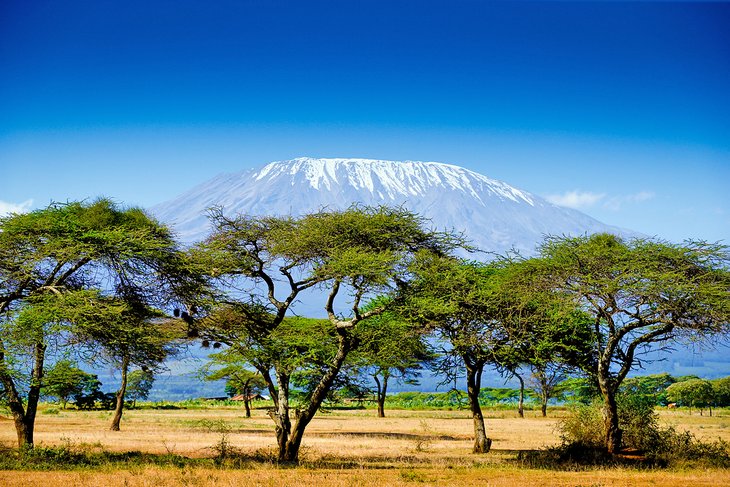
Beyond the world-famous safari parks lies a trove of coastal treasures. You can snorkel and dive fish-rich coral reefs, relax on pearly beaches, experience the melting pot of cultures and cuisines in Mombasa and Malindi, and explore tropical islands steeped in Swahili history.
Topographically, Kenya is stunning. Surrounded by calderas and mountain ranges, the Great Rift Valley divides the country. To the east of this sweeping valley, you can climb the peaks of Mount Kenya and fish for trout in crystal-clear streams. Hell's Gate National Park harbors obsidian caves, and hisses with natural geysers and hot springs.
To experience Kenya's colorful colonial history, captured in the film Out of Africa , head to Nairobi. Discover more places to visit in this fascinating country with our list of the top tourist attractions in Kenya.
Maasai Mara National Reserve
Amboseli national reserve, tsavo national park, samburu, buffalo springs, and shaba national reserves, lake nakuru national park, lamu island, lake naivasha, nairobi national park, david sheldrick wildlife trust elephant nursery, giraffe centre, mount kenya national park, hell's gate national park, ol pejeta conservancy.
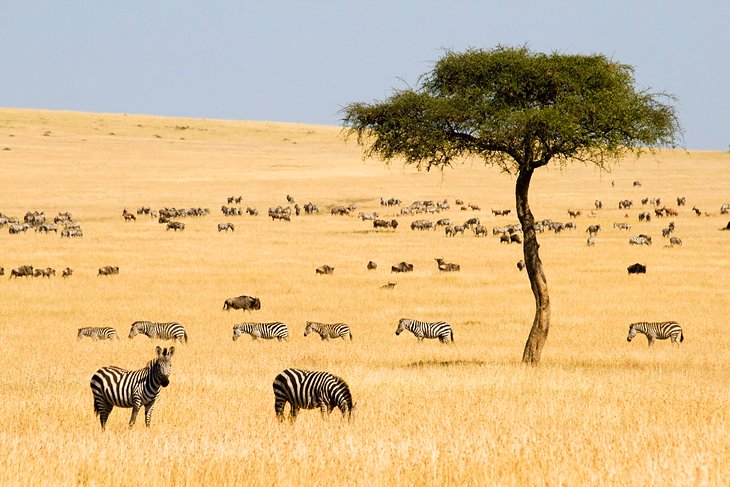
Maasai Mara National Reserve (also "Masai Mara") is one of Africa's most magnificent game reserves . Bordering Tanzania, the Mara is the northern extension of the Serengeti and forms a wildlife corridor between the two countries.
It's named after the statuesque, red-cloaked Maasai people who live in the park and graze their animals here, as they have done for centuries. In their language, Mara means "mottled," perhaps a reference to the play of light and shadow from the acacia trees and cloud-studded skies on the vast grasslands.
The park is famous for the Great Migration , when thousands of wildebeest, zebra, and Thomson's gazelle travel to and from the Serengeti, from July through October.
In the Mara River , throngs of hippos and crocodiles lurk. The park is also known for providing excellent predator sightings, thanks to its relatively large populations of lion, cheetah, and leopard - especially in the dry months from December through February.
Thanks to the park's altitude, the weather here is mild and gentle year-round.
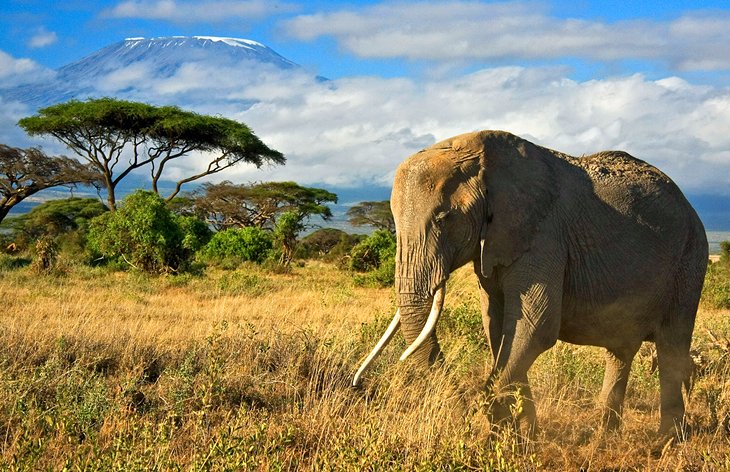
Crowned by Mount Kilimanjaro , Africa's highest peak, Amboseli National Reserve is one of Kenya's most popular tourist parks. The name "Amboseli" comes from a Maasai word meaning "salty dust," an apt description for the park's parched conditions.
The reserve is one of the best places in Africa to view large herds of elephants up close. Other wildlife commonly spotted in the park includes big cats, such as lion and cheetah, as well as giraffe, impala, eland, waterbuck, gazelle, and more than 600 species of birds.
Nature lovers can explore five different habitats here, ranging from the dried-up bed of Lake Amboseli , wetlands with sulfur springs, savannah, and woodlands. Look for the local Maasai people who live in the area around the park.
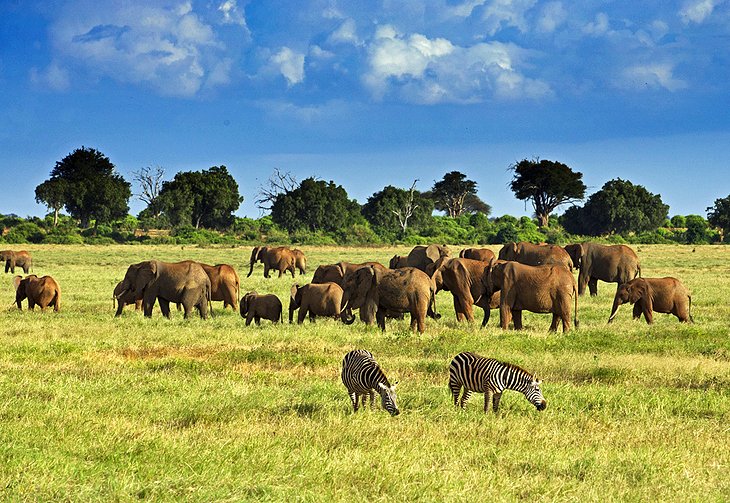
Kenya's largest park, Tsavo, is sliced in two: Tsavo West and Tsavo East. Together these parks comprise four percent of the country's total area and encompass rivers, waterfalls, savannah, volcanic hills, a massive lava-rock plateau, and an impressive diversity of wildlife.
Midway between Nairobi and Mombasa, Tsavo East is famous for photo-worthy sightings of large elephant herds rolling and bathing in red dust. The palm-fringed Galana River twists through the park, providing excellent game viewing and a lush counterpoint to the arid plains.
Other highlights here include the Yatta Plateau, the world's longest lava flow; Mudanda Rock; and the Lugard Falls, which spill into rapids and crocodile-filled pools.
Tsavo West is wetter and topographically more varied, with some of the most beautiful scenery in the northern reaches of the park. Highlights here are Mzima Springs , a series of natural springs with large populations of hippos and crocodiles; Chaimu Crater , a great spot for seeing birds of prey; and Ngulia Rhino Sanctuary .
Wildlife is not as easy to see in Tsavo West because of the denser vegetation, but the beautiful scenery more than compensates.
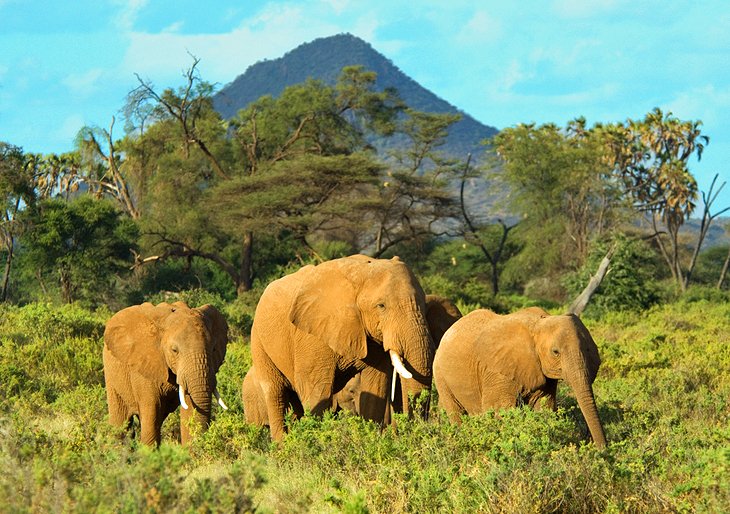
On the banks of the palm-lined Ewaso Nyiro River , Samburu, Buffalo Springs, and Shaba Reserves lie in an arid region in the remote north of Kenya.
Shaba National Reserve is one of two areas where George and Joy Adamson raised Elsa the lioness, made famous in the film Born Free .
The wildlife in all three reserves depends on the waters of the river to survive, and many species are specially adapted to the parched conditions. These include Grevy's zebras; Somali ostriches; and gerenuks, the long-necked antelope that stand on two rear legs to reach the fresh shoots on upper tree limbs.
A top attraction in Samburu National Reserve are the Sarara Singing Wells , local watering holes where Samburu warriors sing traditional songs while hauling water for their cattle to drink. You might also be rewarded with sightings of big cats and wild dogs.
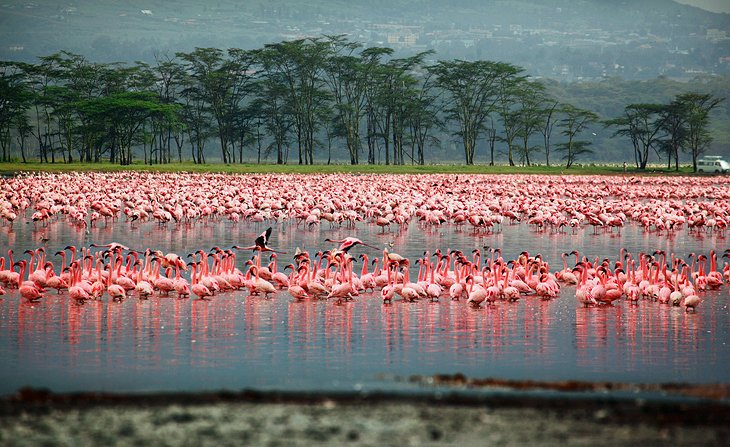
Lake Nakuru National Park, in Central Kenya, is famous for its huge flocks of pink flamingos. The birds throng on Lake Nakuru itself, one of the Rift Valley soda lakes that covers almost a third of the park's area.
The park was established in 1961, and more than 450 species of birds have been recorded here, as well as a rich diversity of other wildlife. Lions, leopards, warthogs, waterbucks, pythons, and white rhinos are just some of the animals you might see, and the landscapes range from sweeping grasslands bordering the lake to rocky cliffs and woodland.
The park also protects the largest euphorbia candelabrum forest in Africa . These tall, branching succulents are endemic to the region and provide a bold textural element to the arid landscapes.
Read More: Best Lakes in Africa
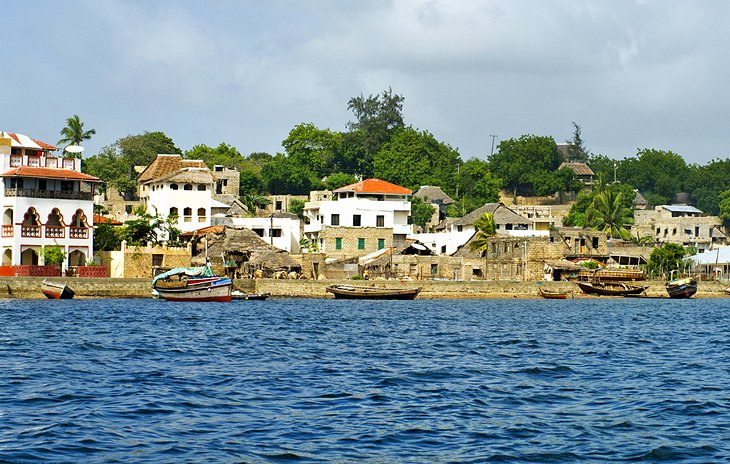
The small island of Lamu, northeast of Mombasa, oozes old-world charm. A UNESCO World Heritage Site, Lamu Old Town is Kenya's oldest continually inhabited settlement, with origins dating back to the 12th century.
Strolling the labyrinthine streets is one of the top things to do here. You can see the island's rich trading history reflected in the buildings. Architectural features from the Arab world, Europe, and India are evident, yet with a discernible Swahili technique. Intricately carved wooden doors, coral stone buildings, hidden courtyards, verandas, and rooftop patios are common features.
Sightseeing here is like stepping back in time. Dhows plow the harbor, few if any motorized vehicles exist here, and donkeys still rule the streets as they have done for centuries. Most of Lamu's population is Muslim, and both men and women dress in traditional attire.
Top attractions on the island include Lamu Museum, with displays on Swahili culture and the region's nautical history; Lamu Fort; and the Donkey Sanctuary.
Lamu Island is also home to Shela Beach, one of the best beaches in Africa . You can bask in the sun or plan for more adventure. Over the past number of years, the island has become a hot spot for kitesurfing. Wide-open spaces with little kite traffic and shallow warm water is perfect for learning near the village of Shela.
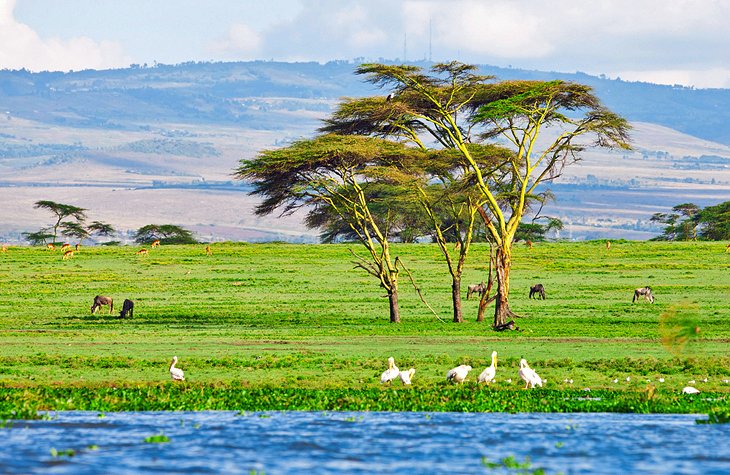
A haven for birders, Lake Naivasha lies at the highest point of the Great Rift Valley. More than 400 species of birds have been spotted here, including African fish eagles, jacanas, white-fronted bee-eaters, and several species of kingfishers.
One of the best ways to view the wildlife is by boat. Hippos slosh in the water, and giraffes, zebras, buffaloes, and eland graze around the edges of the lake. Keep a lookout for colobus monkeys in the canopies, too.
Near Lake Naivasha, the Crater Lake Game Sanctuary features a wildlife-rich nature trail.
Just south of Lake Naivasha , the relatively affordable Hell's Gate National Park protects a wide variety of wildlife and offers excellent climbing opportunities, with two extinct volcanoes and the red cliffs of Hell's Gate Gorge.
On the southern shore of Lake Naivasha, you can pop in for a cup of tea at the Elsamere Conservation Centre, the former home of the late Joy Adamson, author of Born Free , and her husband George.
Note that Lake Naivasha has been known to shrink considerably in times of extreme drought, and a flourishing floriculture industry in the area is also impacting water levels and quality. But the lake is typically lush and full of life.
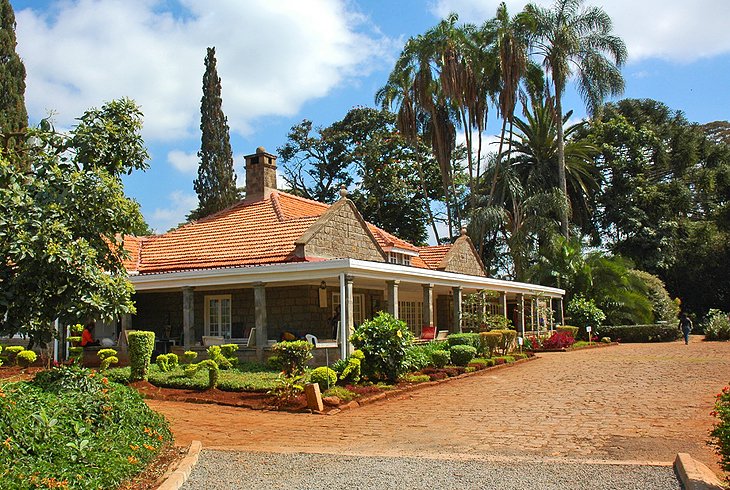
If you're looking for things to do in Kenya other than a safari, you'll have plenty of choices in the country's capital and largest city. Nairobi is legendary for its colorful colonial history. It was once the capital of British East Africa, luring settlers who came here to stake their fortune in the coffee and tea industries. Today, you can explore the city's famous historic sites and excellent wildlife-related attractions .
Craving some cultural attractions in Kenya? You'll find several worthwhile places to visit in Nairobi. The Nairobi National Museum is a great one-stop spot to see exhibits on Kenya's history, nature, culture, and contemporary art. Green thumbs will also enjoy the botanic gardens on the grounds.
Another popular tourist attraction is the Karen Blixen Museum, the restored residence of the famous Danish author of the book Out of Africa , also known by her pen name, Isak Dinesen.
To see wildlife without venturing far from the city center, visit Nairobi National Park , now a black rhino sanctuary and also home to a diversity of other African wildlife.
Read More: Best Cities in Africa
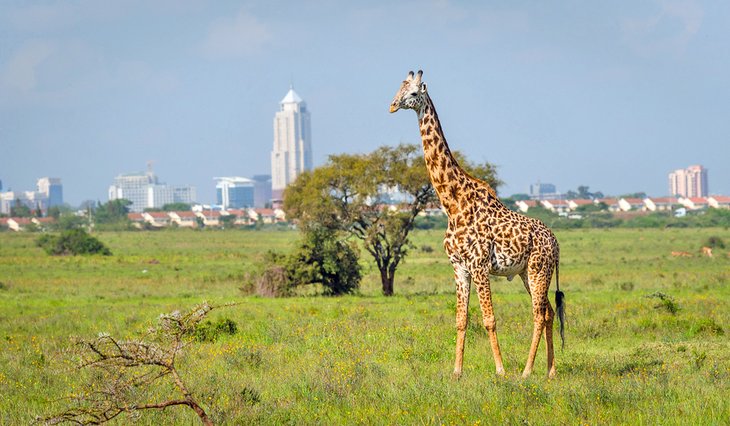
Who says you need to go far from Nairobi to enjoy a safari? A mere 15-minute drive from the clamor of Kenya's capital, you can gaze at a snoozing pride of lions or a graceful giraffe strutting through the golden grass at Nairobi National Park.
Visiting this wildlife-rich park is one of the top things to do if you're staying in Nairobi, and it makes a rewarding day trip - especially if you can't make it to one of the larger game reserves.
All the classic safari stars here, including buffalo, leopard, zebras, wildebeest, hippos, elephants, and cheetah, and you can also see some of the planet's most endangered species at the park's rhino sanctuary .
The Nairobi Safari Walk provides a rewarding opportunity to spot wildlife on foot, and birders will be happy to know that more than 400 species of birds also inhabit the park, including the beautiful grey crowned crane.
And no visit to the park would be complete without popping into the David Sheldrick Wildlife Trust Elephant Nursery at the park's main gates.
Official site: http://www.kws.go.ke/parks/nairobi-national-park
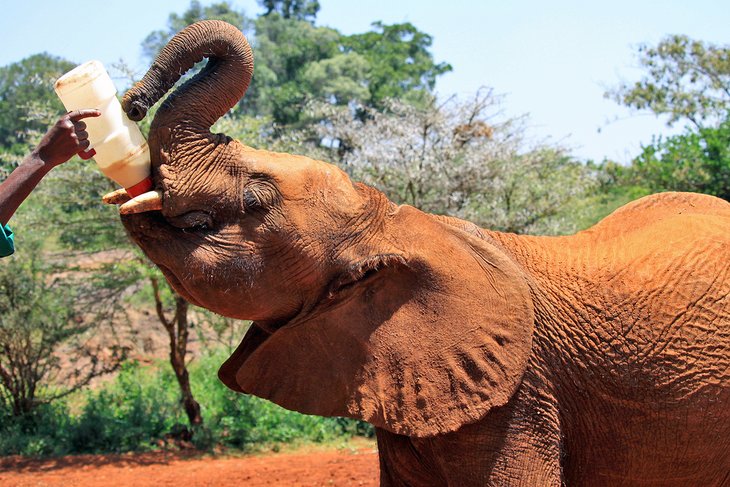
Who can resist a baby elephant? At the David Sheldrick Wildlife Trust, you can mingle with impossibly cute baby pachyderms and feel good about supporting an important conservation organization at the same time.
This famous wildlife sanctuary rescues and rehabilitates orphaned elephants and offers you the chance to see these lovable creatures up close. This is where the youngest elephants are hand-reared until about two or three years of age, and you can watch the keepers bottle-feed the babies.
From the sanctuary, staff relocate the elephants to a reintegration center in Tsavo East National Park before they are eventually released back into the wild.
Watching these playful pint-sized pachyderms wallow in the mud or nudge a soccer ball around is something you will never forget. If you want to do more to help these magnificent animals, consider adopting an orphaned elephant, giraffe, or rhino before you go, and you'll receive regular updates on its progress.
Conveniently, the nursery sits right at the main gates of Nairobi National Park , so you can visit both of these famous tourist attractions in the same day.
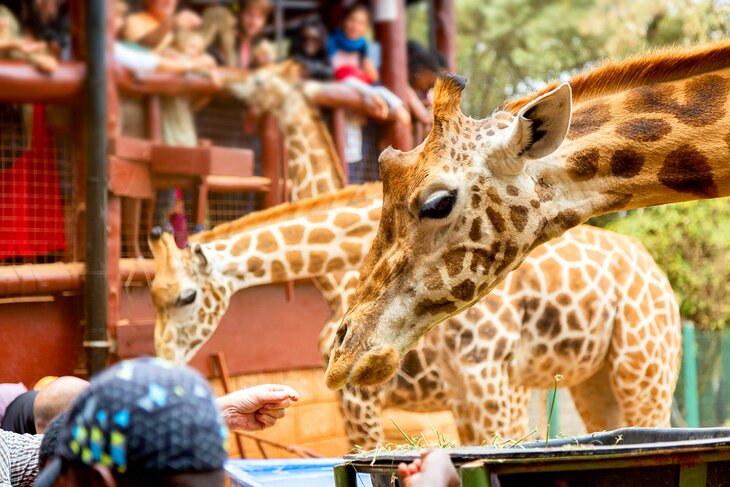
Located near the David Sheldrick Wildlife Trust Elephant Nursery, the Giraffe Center is a must-visit attraction near Nairobi National Park. The center is devoted to the rehabilitation and reintroduction of the Rothschild Giraffe to the wildlife parks of Kenya. As part of a visit, the staff explain their work during a 15- to 20-minute overview.
A visit here allows you to get up close and personal with these gentle giants. Equipped with your very own bowl of giraffe food, you'll be able to feed these curious creatures. The feeding area is on a raised platform, which puts you close to head height of the giraffes, who will stoop down slightly and extend their giant blackish, grey tongues to scoop up what you have on offer.
Although perhaps not as beautiful as the giraffes, several warthogs also roam the property and are also willing to eat the giraffe food should you be inclined to share with them.
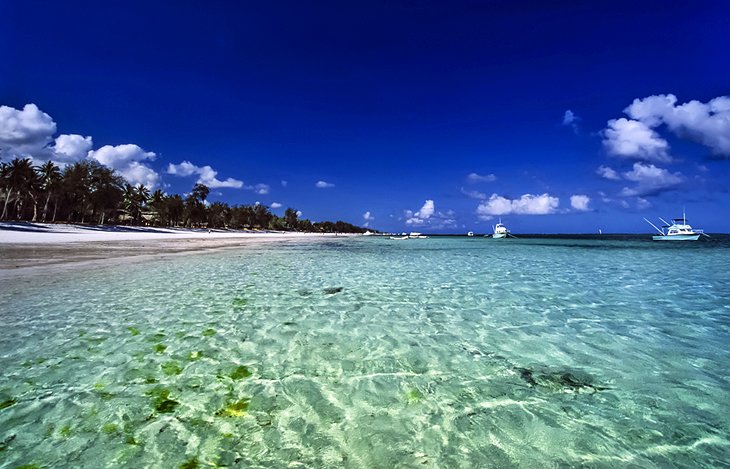
North of Mombasa on the Kenyan coast, Malindi has a split personality. This popular beach town is part historic old town, part modern tourist hub. Thanks to its rich trading history, it is also a melting pot of cultures and cuisines.
Travelers, many from Europe, come here to sun on the white sands of Watamu Beach and dive the coral reefs of the Malindi and Watamu Marine National Parks . If you're looking for free things to do in Kenya, you can do worse than bask on a beautiful Malindi Beach.
You can also soak up a dose of Swahili history in the historic town, which dates from the 12th century. Here, you can visit the Jami Mosque; two pillar tombs from the 14th century; and the Church of St. Francis Xavier, one of East Africa's oldest churches.
On the promontory, the Vasco De Gama Cross is one of the oldest standing monuments in Africa.
Another popular tourist attraction is the Falconry of Kenya , a rehabilitation center for sick and injured birds.
Also worth visiting, about 30 kilometers northeast of Malindi is the Marafa Depression . Also called Hell's Kitchen or Nyari this set of sandstone gorges sculpted by the wind and rain is like a mini Grand Canyon.
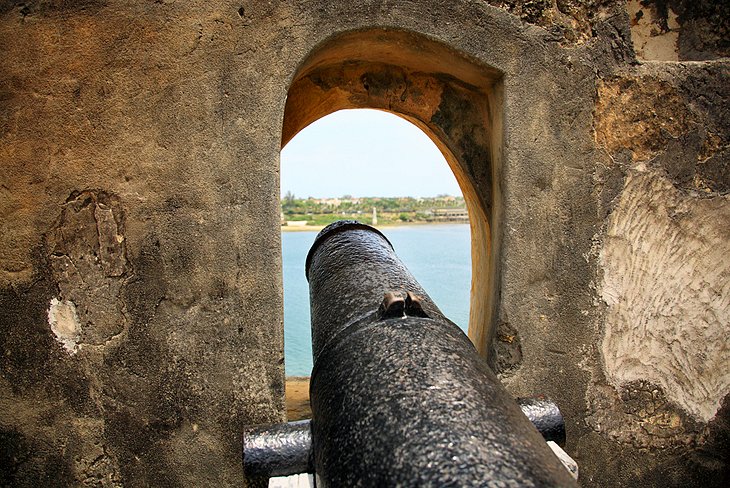
Mombasa is a multicultural tourist magnet. It's also Kenya's second largest city and biggest port. British, Portuguese, Arab, Indian, and Asian immigrants add to the rich cultural mix, and their influence is evident in the architecture, as well as the many different types of cuisine.
Mombasa is actually an island connected to its mushrooming development on the mainland by a causeway, bridges, and ferries. Coral reefs fringe the coast for 480 kilometers, providing fantastic snorkeling and diving opportunities, especially at Mombasa Marine National Park and around Wasini Island. Dolphin watching and deep-sea fishing are also popular things to do in Mombasa.
You'll find plenty of tourist attractions along the Kenyan coast here. History buffs will enjoy exploring the 16th-century Fort Jesus and Old Town with its narrow streets, ancient Swahili dwellings, markets, and souvenir shops.
Other Mombasa tourist attractions cram the city's north shore, including Mombasa Go-Kart, cinemas, sports, and a cornucopia of restaurants.
This being a coastal hub, beach lovers will find some worthy strands nearby. North of the city, Nyali and Bamburi Beaches are favorites, while the white strands of Shelly, Tiwi, and Diani Beaches are popular spots south of Mombasa.
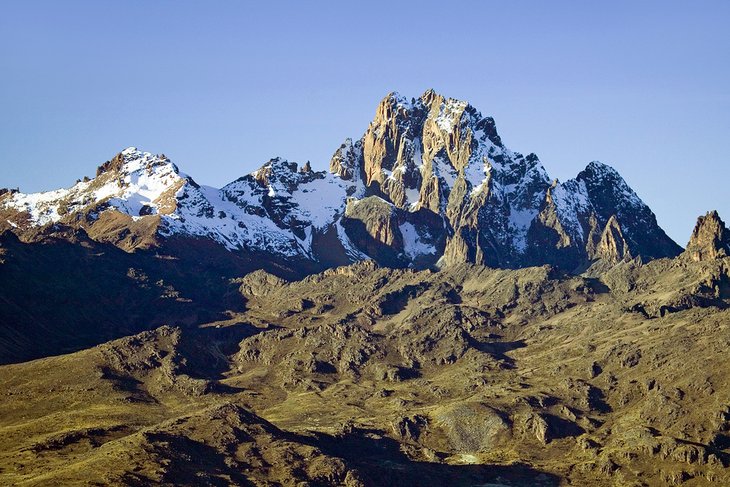
In the Central Highlands, east of the Great Rift Valley , Mount Kenya National Park is a UNESCO World Heritage Site that provides the rare spectacle of equatorial snow . It encompasses the country's namesake highest mountain at 5,199 meters.
Formed by a series of volcanic eruptions, Mount Kenya is actually comprised of three glacier-cloaked peaks. The highest is Batian, although Nelion, the next highest, is a tougher climb. The lowest peak, Lenana, is considered the easiest climb, although unpredictable weather can pose challenges.
Bring your camera. The striking scenery varies from glaciers, lakes, and mineral springs to alpine forest and dense pockets of bamboo.
The diversity of flora and fauna provides rewarding opportunities for safaris. Among the wildlife here, you may spot black and white colobus monkeys, buffalo, elephant, tree hyrax, leopard, and hyena.
Planning to spend a few days here? Nestled in the foothills, the famous Fairmont Mount Kenya Safari Club is a luxury retreat with trout fishing, golf, and tennis.
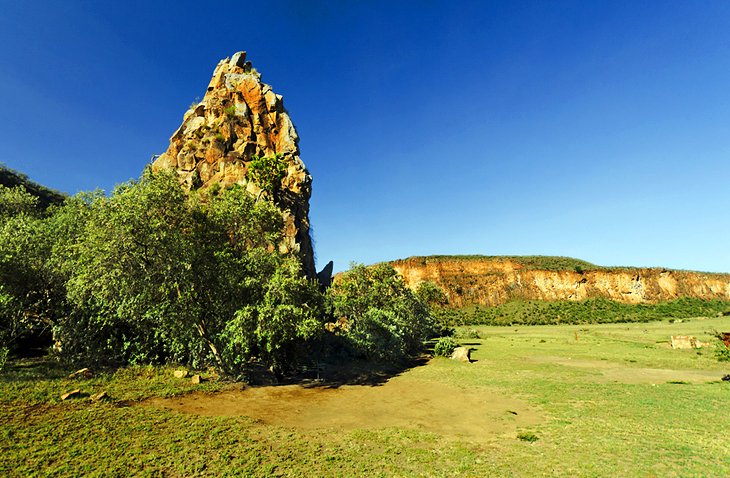
A hot spot for climbers, Hell's Gate National Park is one of the few parks in Kenya that allows camping and enables you to explore on foot or bicycle.
Hell's Gate offers excellent climbing and hiking opportunities, with two extinct volcanoes; the red cliffs of Hell's Gate Gorge; ObsidianCaves ; and the pointed column of rock known as Fischer's Tower , a former volcanic plug.
Geothermal features include hot springs and natural geysers hissing steam through vents in the earth's crust. The park also protects a wide variety of wildlife, including leopards, baboons, hartebeest, eland, ostriches, gazelles, and more than 100 species of birds. Eagle and vulture breeding grounds also lie within the park.
The Oloor Karia Maasai Cultural Centre within the park is also worth a visit, with Maasai singing, dancing, and jewelry-making demonstrations.
Interestingly, Olkaria Geothermal Station lies within Hell's Gate National Park. It generates power from heated, pressurized water underground and is the first of its kind in Africa.
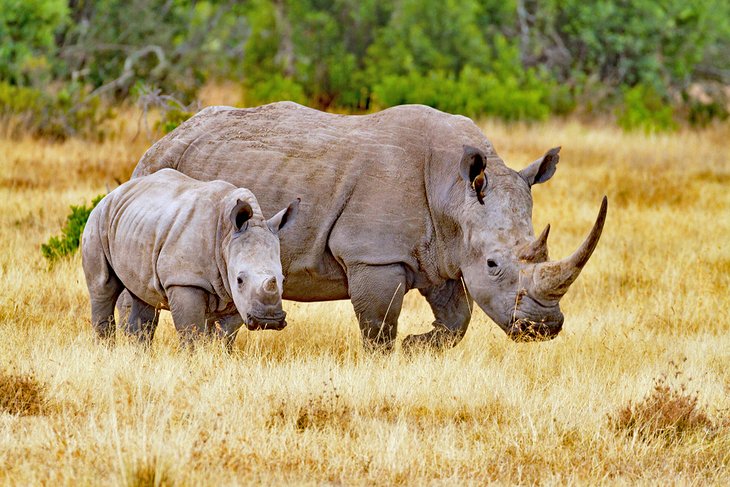
About 200 kilometers north of Nairobi, near Mount Kenya National Park , Ol Pejeta Conservancy is a prime place for close-up wildlife encounters.
Conservation and sustainability are key at this 90,000-acre private game reserve, where you can view the Big Five (lion, leopard, rhino, elephant, and buffalo), as well as other animals such as cheetah, hyenas, zebra, and hartebeest - all set against the breathtaking backdrop of snowcapped Mount Kenya.
The conservancy is perhaps best known for its northern and southern white rhinos, including Baraka, a blind black rhino, who lucky visitors might have the chance to feed.
You can view the wildlife on self-drive or guided tours, and entry includes a visit to the chimpanzee sanctuary . Day visitors are welcome, and if you want to extend your wilderness adventure, you can stay overnight in accommodations that range from bush camps and safari cottages to a charming colonial ranch house.
Official site: http://www.olpejetaconservancy.org/

More on Kenya
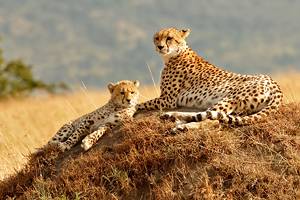

Home » Travel Guides » Kenya » 15 Best Places to Visit in Kenya
15 Best Places to Visit in Kenya
Kenya lies at the very heart of the East African Rift Valley. A place of world-class wildlife viewing and legendary game reserves, it’s surely amongst the most-visited of countries in the region.
Just check out the bucket-list-busting migrations that take place in the vast Mara, or look to the soaring heights of Mount Kenya, surrounded by flamingos and rare rhinos and wildebeest and more! However, Kenya’s isn’t just about 4X4s across the savannahs to spot elephants and lions.
It’s also got mile upon mile of beautiful coastline along the Indian Ocean.
And that means beaches! Yep, travelers flock to the shorelines around Malindi and Mombasa to taste all the exoticism of Zanzibar, all mixed up with the smells of Keralan curries and Arabic tagines thanks to the multi-layered history.
And then there are the cities, topping out with the heady and energetic mass that is Nairobi – one of the largest metropolises in all of East Africa!
Lets explore the best places to visit in Kenya :
1. Maasai Mara

Home to perhaps the single most famous safari park in the world (sorry Kruger), this relatively small national reserve magnesites thousands of travelers to the reaches of East Africa every year.
It’s bordered to the south (and immediately contiguous with) Tanzania’s acclaimed Serengeti National Park, and displays the quintessential backcountry of the East African Rift: undulating savannah plains peppered with galloping zebra herds; swaying grasslands punctuated with the lanky stalks of giraffes; meadows of topi and waterholes dotted with cape buffalo.
Safari is – of course – the biggest pull, with countless people heading in for The Great Migration and to see the fabled Big Five of African mammals.
2. Lamu Island

Ringed by sandbanks, bobbing dhows, mangrove swamps and the lapping waters of the Indian Ocean on the eastern edge of Kenya, little Lamu Island still plays host to one of the most historically rich towns in the nation.
Named – appropriately – Lamu Old Town, this historic port of whitewashed facades and tropical timber wood houses is tagged by UNESCO for its exposition of traditional Swahili building methods.
But that’s not it, because the villages of Shela and Matondoni further along the coast of Lamu also boast a series of fascinating ports and mosques from centuries gone by, while the age-old celebrations of Mawlid are a must for any culture vultures!
3. Amboseli National Park

Amboseli lives up to its reputation as one of the crème de la crème of East African safari parks, and not least of all with that fine location below the colossal outline of none other than Mount Kilimanjaro! In the shadow of that snow-topped massif – the highest on the continent – this protected reserve spreads out in a patchwork of dusty plains and savannahs, fields of curious sulphur spouts and riparian wetlands all trodden by some of the largest elephant herds in the country.
Today, wildlife lovers flock here to safari and see the great galumphing beasts next to cheetahs, wildebeest, giraffes, zebra and more!

Sprawling, steel-clad Nairobi isn’t the prettiest of African cities at first glance, granted.
But there’s real charm and energy to be found in this nigh on four-million-strong capital in the southern heart of Kenya for sure.
For starters, the town is famed as the only great metropolis with a bona fide safari park smack bang within city limits – just check out the Nairobi National Park, where giraffes meet cheetahs against the meanders of the Mbagathi River.
Add to that a series of great central markets that bubble with East African hotpots and foods, along with one of Kenya’s best nightlife scenes, and bingo: you’ve got yourself a town that’s really worth the stopover!
5. Hell’s Gate National Park

Sat midway between the city of Nairobi and the backcountry town of Nakuru, Hell’s Gate covers a humble 68 square kilometers in the midst of southern Kenya.
A place of real natural beauty, it’s defined by startling and unforgettable rock formations that rise like splinters from the scrub-dressed ground.
Considered by many to have been the inspiration for the Disney film The Lion King, the area has high escarpments and deep valleys carved through its terrain, each bearing curious monikers like Fischer’s Tower and the great Embarta.
Between the gorges and canyons, you can expect to see wildebeest and vultures, African buffalo and Thomson’s gazelle, not to mention packs of lions to boot!
6. Tsavo East National Park

One of the oldest and largest national parks in all of East Africa, the great stretches of Tsavo East rarely fail to top charts of the finest safari destinations on the planet.
They can be found cascading down from the sun-baked highlands of the Chyulu Hills that straddle the border with Tanzania to the south; a mosaic of swaying savannah grasses and red-hued rocks that rise like escarpments from the dusty, arid grounds.
The eastern edge of the park is delineated by the flow of the Athi River, which gives way to the great stones of Yatta – one of the largest lava channels in the world.
And then there are the animals: everything from white-tailed mongooses to cape buffalo, ground pangolins to cheetahs!

With overtones as exotic as nearby Zanzibar and a history as deep as any of East Africa’s cities, Mombasa is an enigmatic and wonderful place to visit.
Swahili roots and traditions die hard, even after the influence of the erstwhile Portuguese and Arabic rulers raised colonial edifices and grand mosques between the streets.
Take some time to wander the European-flavoured Old Town, sample the spicy Indian-influenced curries and take in the energy of Mombasa port.
But don’t linger too long, because the beaches await, going from the shimmering white stretches along Bamburi to the palm tree groves of Shanzu!

Ah Malindi: a town of tin-shack homes and old mosque towers from centuries gone by, where the sea has never been so warm and the sand has never been so white! Yep, this humble little trading town on Kenya’s Indian Ocean coast has risen and risen in recent decades to become the favourite choice of European and American visitors looking to taste the sun and salt water of East Africa.
Monuments to the great Portuguese explore Vasco da Gama Pillar still mark the center of the place – a testimony to its long past – while strips of palm-backed beaches and resorts, pretty piazzas and even pizza restaurants bring in the biggest crowds.
9. Samburu National Reserve

The Samburu National Reserve marks the very heart of Kenya as a whole.
Hundreds of miles from the coast, and just edging up to the rising highlands that define East Africa, the area gets its lifeblood from the meanders of the trickling Ewaso Ng’iro, which drops down this way from the ice-caked top of Mount Kenya itself.
The terrain is defined by flat-topped acacia trees and the occasional riparian oases of palms, while the wildlife includes lions and gazelles, Tanzanian cheetahs, waterbucks, crocodiles and olive baboons.
10. Lake Nakuru

Lake Nakuru now sits at the heart of its very own national park.
Just a small speck of blue on the Kenyan map, this curious body of water rises above the Great Rift Valley from between the acacia groves and meadows that surround it.
It’s famed primarily for its truly kaleidoscopic array of birdlife, which is defined by the pinkish glow of flamingos for most of the year.
Head up to the high-perched lookout points of Baboon Cliff for some dramatic views of the area, before hitting the winding dirt tracks that ring the water’s edge to spot Eastern black rhinos, baboons and countless migrating birds alike.
11. Laikipia

The rise and rise of the Laikipia District as one of Kenya’s prime ecotourist hotspots has defied all expectations.
Without any totemic national parks or game reserves, the region entered the scene with just the pulls of its natural backcountry.
And as soon as the tour companies caught on to the unspoilt beauties of the sweeping green highlands and hills that rise and fall here, the rest was history.
Today, oodles of safari folk flock come to enjoy off-the-beaten-track wildlife spotting, with destinations like the Sosian Game Ranch, the Ol Ari Nyiro Conservancy and others boasting the likes of Grevy’s zebras, wild dogs and uber-rare black rhinos.
12. Lake Naivasha

Like Nakuru, Lake Naivasha’s little brother, located just to the north-west, this mirror-like body of water is one of the real jewels of the Kenyan Rift.
Shining in hues of sky-blue beneath the red rock ridges of the aforementioned Hell’s Gate park, the spot is widely famed for its thriving birdlife.
For example, there are uber-rare bearded vultures to see, along with ospreys, hawks and eagles.
Add to that the geothermal power plants and geological phenomenon that occur in the nearby mountains, and it’s easy to see why Naivasha is now considered such a fascinating place to visit!

With one foot in Lake Victoria and the other on the great highways that lead east to Nairobi, Mombasa and the port towns of the Indian Ocean, it’s hardly surprising that Kisumu cut its teeth in the mercantile trade.
However, things have ebbed and flowed a lot in the last couple of decades, with the steam boats and transports dropping off for some time.
Revival is now in the works, but Kisumu has a regained respect for its historical traditions and natural attractions too.
So, forget the great freights and oil pipes, and look instead to the biodiversity of Dunga Beach, or the curious architecture of the Kisumu Town Clock in the center of the city.

Nyeri is very much the self-proclaimed gateway to the Central Highlands of Kenya.
At heart, it’s a dusty transport hub of a town, with purring scooters and rickshaws moving through the square-cut blocks and between the low-rise marketplaces.
However, its enviable location on the very edge of the Aberdare Mountains, within reach of the Aberdare National Park (home to leopards, African wild dogs, giant forest hogs, cape buffalos, rhinos and more), Mount Suswa and the South-western Mau Reserve makes it a real magnet for outdoorsy types!
15. Marsabit

Rising in a medley of ramshackle tin homes and lean-to timber shacks from the midst of the great Kenyan deserts in the north, this largely untrodden town is one for the conservation buffs and ethical tourists.
It’s currently the focus of a number of humanitarian missions, which are attempting to provide schooling, clean water and the like to the local tribal communities.
More than 422 kilometers from Nairobi, the town is far-flung to say the least, but that means an authentic view of Kenyan life, and a chance to see the wilder (if that’s possible!), more arid and unexplored section of this popular East African country.
15 Best Places to Visit in Kenya:
- Maasai Mara
- Lamu Island
- Amboseli National Park
- Hell's Gate National Park
- Tsavo East National Park
- Samburu National Reserve
- Lake Nakuru
- Lake Naivasha
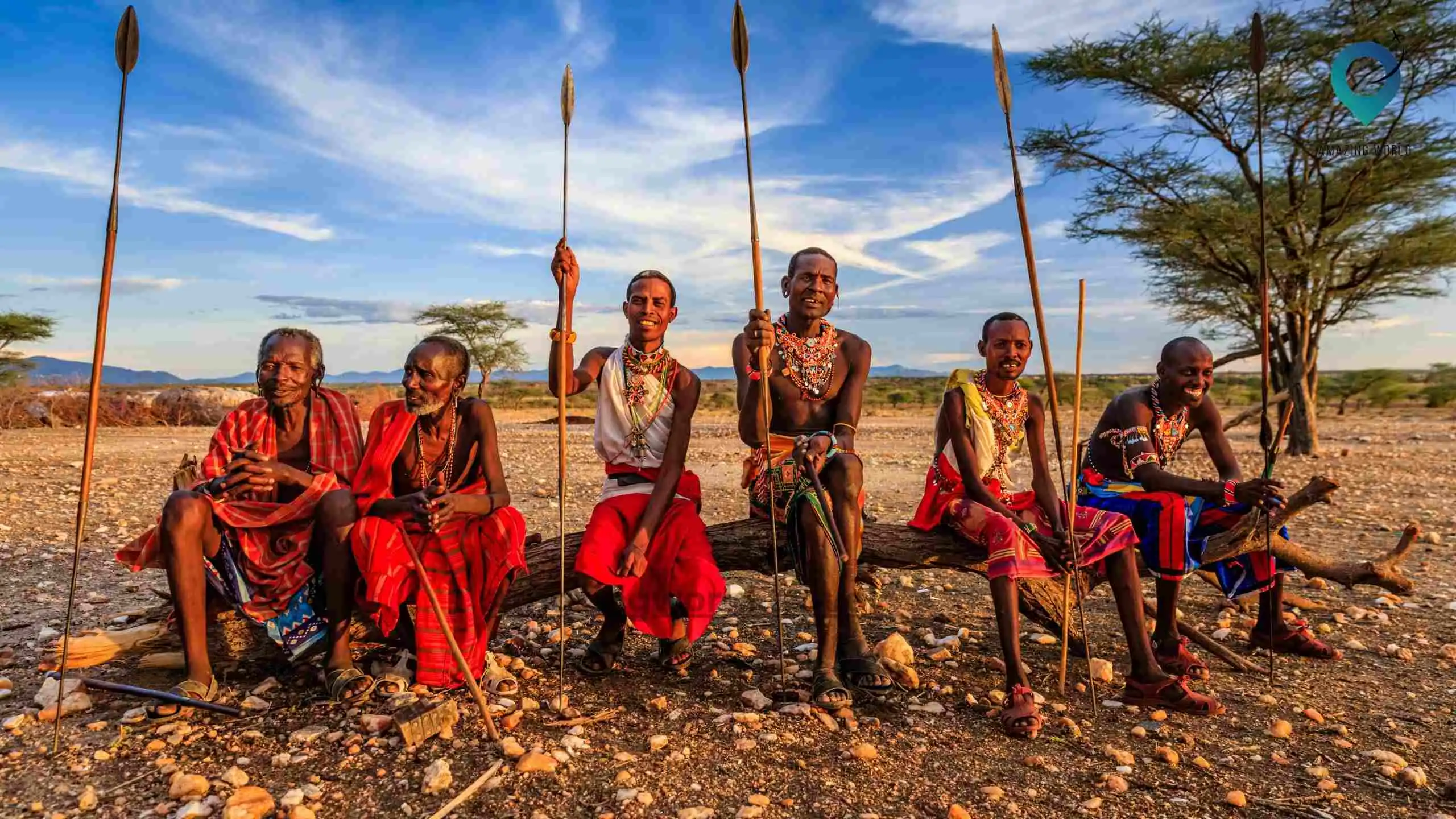
Discover Kenya: 35 Best Tourist Places To Visit in Kenya 2024
- 26 minute read
- September 17, 2023
35 Best Places to Visit In Kenya
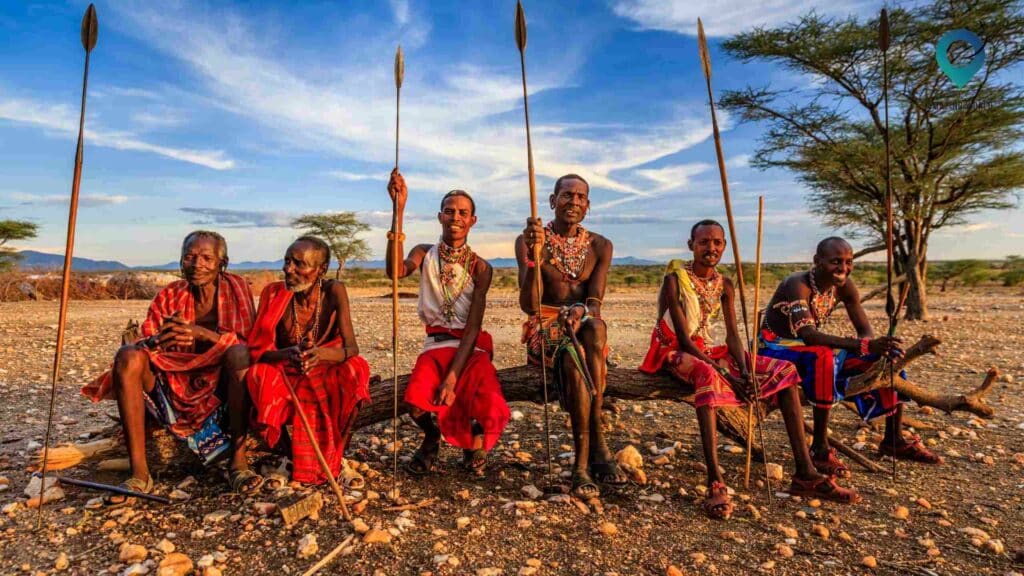
About Kenya Tourism and Its Overview
Kenya’s tourism industry is a vibrant tapestry of natural wonders, cultural diversity, and thrilling adventures. Situated in East Africa and graced with a breathtaking coastline along the Indian Ocean, Kenya is a land of contrasts and spectacular landscapes. From the vast savannahs and majestic mountains to the deep valleys of the Great Rift, Kenya’s geography is nothing short of remarkable.
One of the primary draws for tourists is Kenya’s remarkable wildlife. The country is synonymous with thrilling safari experiences, where travelers can encounter the famed “Big Five” – lions, leopards, elephants, buffalos, and rhinoceros – in their natural habitat. The Maasai Mara Reserve, with its annual wildebeest migrations, and Amboseli National Park, offering stunning views of Mount Kilimanjaro in neighboring Tanzania, are just a glimpse of the incredible wildlife experiences Kenya has to offer.
Kenya’s cultural richness is another jewel in its tourism crown. The nation is home to numerous ethnic groups, each with its own vibrant traditions and customs. Visitors have the opportunity to immerse themselves in Kenyan culture, whether by engaging with local communities, attending colorful cultural festivals, or discovering the beauty of traditional art, music, and dance.
Adventure enthusiasts find Kenya to be an exhilarating playground. Hot air ballooning over the savannah, hiking expeditions up Mount Kenya, or exploring the depths of the Great Rift Valley are just a few of the heart-pounding activities that await the daring traveler.
So, if you’re looking for an unforgettable journey filled with adventure, wildlife, and cultural richness, Kenya should be at the top of your travel list.
Also, if you are looking best hotels and Homestay deals then we recommend booking your hotels and homestay with priceline.com
1. Nairobi

Nairobi, the capital and largest city of Kenya, is a dynamic urban center uniquely nestled on the edge of the Great Rift Valley. This juxtaposition allows visitors to enjoy both the conveniences of a modern city and the breathtaking views of the natural world. The city has a vibrant atmosphere with a mix of cultures and experiences.
How to Reach There: Nairobi is well-connected internationally through Jomo Kenyatta International Airport, making it easily accessible by air for travelers from around the globe. For local transportation, visitors can choose from buses, matatus (shared minivans), or taxis.
Place Known for: Nairobi is renowned for several attractions, including the Nairobi National Park, a remarkable wildlife sanctuary located just a short drive from the city center. It’s a place where you can spot lions, giraffes, and rhinos against the backdrop of the city skyline. Other notable destinations include the David Sheldrick Wildlife Trust, where you can get up close with orphaned elephants, and the Giraffe Centre, home to endangered Rothschild giraffes.
Safety Tips: While Nairobi is generally safe, like any major city, visitors should exercise caution in crowded areas and avoid walking alone at night. It’s advisable to keep a close eye on your belongings and stay informed about local safety conditions.
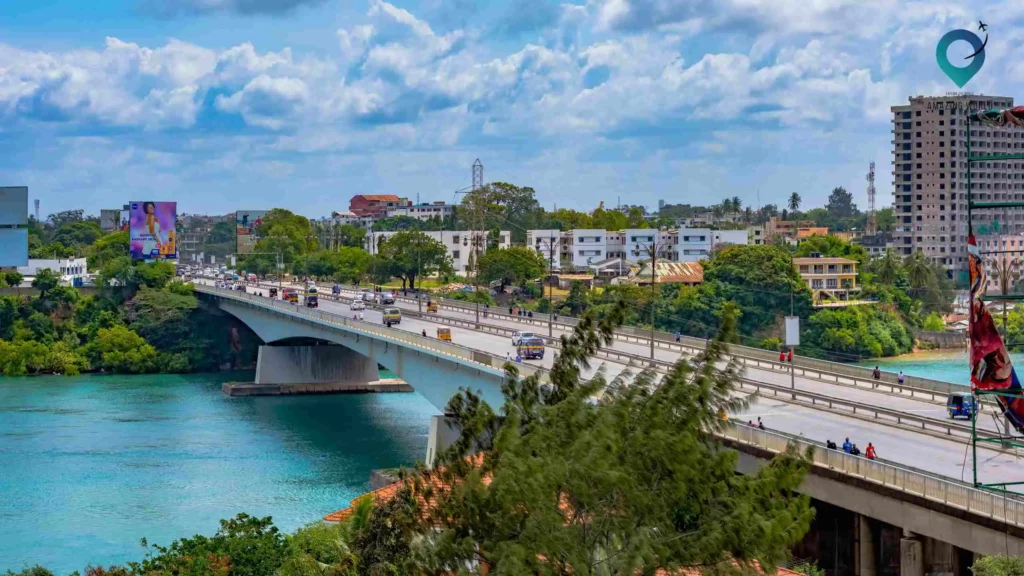
Mombasa, often referred to as Kenya’s coastal jewel, offers a different charm from Nairobi. Located on the shores of the Indian Ocean, it boasts pristine beaches, a rich historical heritage, and a bustling port. The city seamlessly combines the influences of various cultures, including Arab, Swahili, and European.
How to Reach There: Moi International Airport serves as the gateway to Mombasa for international travelers. If you prefer a scenic journey, you can also reach Mombasa by road from Nairobi, enjoying the picturesque landscapes along the way.
Place Known for: Mombasa is famous for its stunning beaches, where you can relax, swim, and engage in water sports. Fort Jesus, a UNESCO World Heritage Site, stands as a testament to the city’s historical significance. Old Town, with its Swahili architecture and narrow winding streets, offers a glimpse into the past. Don’t miss exploring vibrant markets like Kongowea Market, where you can immerse yourself in local culture.
Safety Tips: While enjoying Mombasa’s beaches, be cautious of beach touts offering various services. As with any tourist destination, it’s wise to safeguard your belongings and stay aware of your surroundings.

Kisumu, situated on the picturesque shores of Lake Victoria, is known for its natural beauty and vibrant cultural scene. It’s the third-largest city in Kenya and serves as the capital of Kisumu County.
How to Reach There: Kisumu International Airport provides convenient access to the city by air. If you prefer overland travel, you can reach Kisumu by road from Nairobi, offering a scenic drive through Kenya’s landscapes.
Place Known for: Kisumu is renowned for Lake Victoria, Africa’s largest freshwater lake. While swimming in the lake isn’t advisable due to its strong currents, you can explore other attractions like the Impala Sanctuary, which hosts various wildlife species. The city also comes alive with cultural festivals like the Luo Festival, where you can experience the local culture.
Safety Tips: When visiting Lake Victoria, it’s essential to heed safety warnings about swimming due to the lake’s unpredictable currents. Always prioritize your safety when near water bodies.

Nakuru, a town in the Rift Valley, is famous for Lake Nakuru, known for its flocks of flamingos and diverse wildlife. It’s a nature lover’s paradise and a must-visit for those seeking unique wildlife experiences.
How to Reach There: Nakuru is easily accessible by road from Nairobi, making it a popular destination for day trips or longer stays.
Place Known for: Nakuru’s fame is anchored in Lake Nakuru National Park, a protected area that hosts a variety of wildlife, including rhinos, lions, and numerous bird species. The lake’s pink shoreline, caused by the thousands of flamingos that inhabit it, is a sight to behold. Additionally, Menengai Crater, a dormant volcano, offers hiking opportunities and panoramic views of the surrounding region.
Safety Tips: When visiting Lake Nakuru National Park, it’s crucial to follow park rules, stay inside your vehicle while observing wildlife, and respect the natural environment. Wildlife encounters should be approached with caution and from a safe distance.
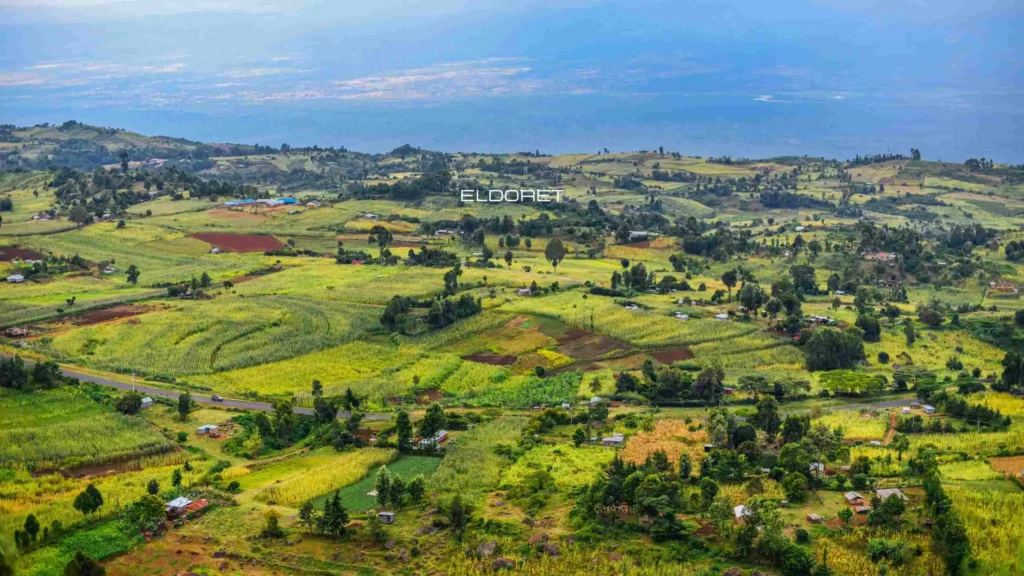
Eldoret, often referred to as the “City of Champions,” is a bustling town situated in the Uasin Gishu County of Kenya. This city has earned its nickname due to its association with world-class long-distance runners who have achieved international acclaim.
How to Reach There: Eldoret International Airport serves the region, offering air connectivity. If you prefer ground travel, Eldoret is well-connected by road from Nairobi and other major cities in Kenya.
Place Known for: Eldoret’s claim to fame lies in its role as the training ground for many renowned Kenyan athletes who have dominated long-distance running events globally. It’s a city that takes pride in its athletic heritage. Additionally, Eldoret is an agricultural hub, known for its maize and wheat farming.
Safety Tips: Eldoret is generally considered safe for travelers. However, as with any urban area, it’s advisable to take typical precautions in crowded places and remain vigilant about your personal belongings.

Thika is a town in Kenya known for its unique blend of agriculture, particularly pineapple farming, and natural beauty. It’s located approximately 45 kilometers (28 miles) from Nairobi, making it a popular day trip destination.
Thika is often referred to as the “Pineapple City” due to the abundance of pineapple farms in the region. The fertile soils and favorable climate make it an ideal location for pineapple cultivation. Visitors to Thika can explore these pineapple farms, where they can witness the various stages of pineapple cultivation, from planting to harvesting.
How to Reach There : Thika is easily accessible from Nairobi by road, and the journey typically takes around one hour, depending on traffic conditions. You can take a matatu (shared minibus) or hire a taxi to get to Thika.
Place Known for : Thika is famous for Thika Falls, a spectacular waterfall located on the Chania River. Thika Falls is a popular attraction for both locals and tourists. The waterfall is surrounded by lush greenery and offers a serene environment for picnics and relaxation. It’s an excellent place for nature lovers and photographers to capture the beauty of the Kenyan landscape.
Safety Tips :
- When visiting Thika Falls, it’s essential to exercise caution and stay within designated safe areas, as the area can be slippery.
- Respect local customs and the environment by disposing of trash properly and avoiding any harm to the natural surroundings.
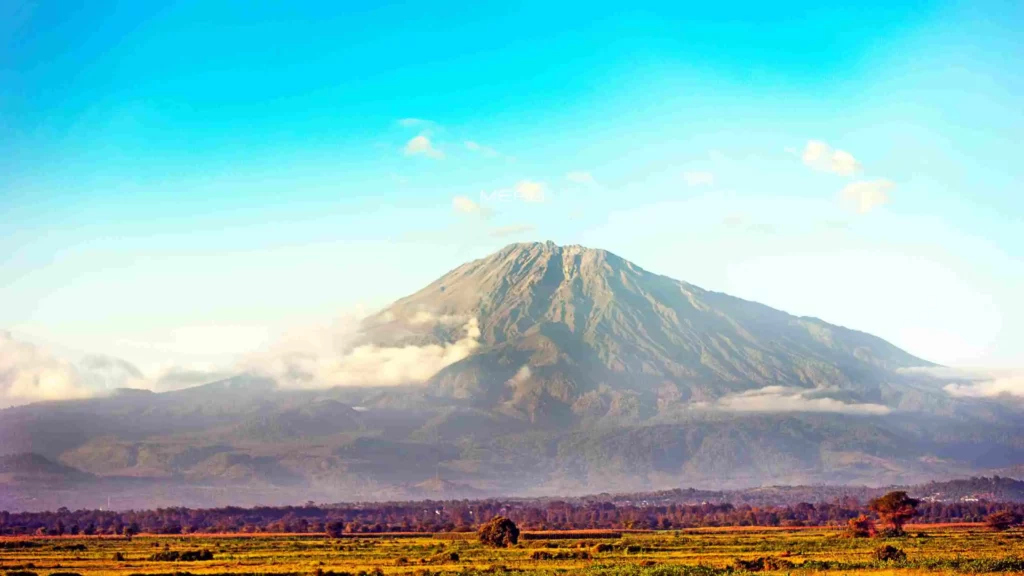
Meru is a town located in eastern Kenya and is known for its rich cultural heritage and proximity to Meru National Park, a significant wildlife conservation area. It’s a diverse region that offers a unique blend of wildlife and culture.
Meru Town is the gateway to Meru National Park, one of Kenya’s less crowded but incredibly diverse national parks. The park is known for its abundant wildlife, including elephants, leopards, lions, and various bird species. Visitors can embark on thrilling safaris and game drives to witness these majestic creatures in their natural habitat.
How to Reach There : Meru can be reached by road from Nairobi and other major Kenyan cities. Meru National Airport also serves the region, providing domestic flight options for travelers.
Place Known for Meru National Park is the primary attraction in the region. Apart from the wildlife, the park is famous for its scenic landscapes, including rivers, forests, and diverse vegetation. The park offers a unique and less crowded safari experience compared to some of the more famous parks in Kenya.
- While on a safari in Meru National Park, it’s crucial to follow the guidelines provided by your safari guide or park authorities. Maintain a safe distance from wild animals for your safety and theirs.
- Respect the local culture and traditions of the Meru people when interacting with local communities.
8. Kakamega
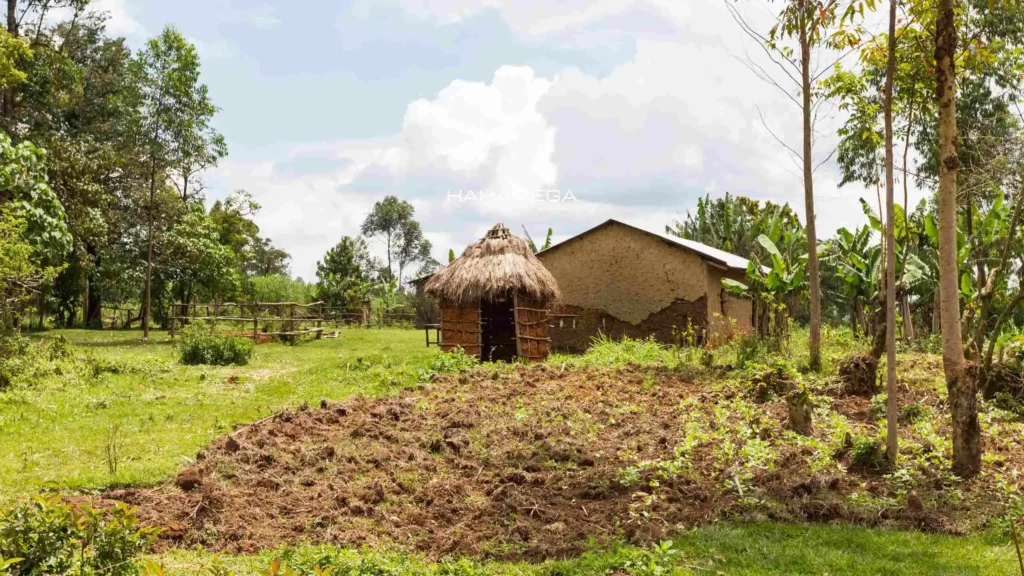
Kakamega is a region in western Kenya known for its unique and lush Kakamega Forest. This forest is one of the last remnants of tropical rainforest in Kenya, making it a significant ecological and biodiversity hotspot.
Kakamega Forest is a natural treasure, covering approximately 238 square kilometers (92 square miles). It’s characterized by towering trees, thick undergrowth, and a dense canopy. The forest is home to a wide range of flora and fauna, including primates like colobus monkeys, over 300 bird species, and various insects and butterflies.
How to Reach There : Kakamega can be reached by road from Nairobi and other major cities. The town of Kakamega serves as a gateway to the forest.
Place Known for : Kakamega Forest is famous for its biodiversity and the opportunity to explore a tropical rainforest in Kenya. Visitors can embark on guided nature walks and birdwatching tours within the forest to witness its natural beauty up close. It’s a paradise for nature enthusiasts and researchers interested in tropical ecosystems.
- When exploring Kakamega Forest, it’s advisable to go with an experienced guide who knows the trails and can provide insights into the forest’s biodiversity.
- Respect the forest’s delicate ecosystem by not disturbing plants and animals and avoiding littering.

Kitale is a charming town situated in Kenya’s Rift Valley region, and it’s known for its agriculture, scenic landscapes, and a taste of rural Kenyan life. It’s surrounded by picturesque farms and greenery, making it a tranquil destination.
Kitale’s primary claim to fame is its fertile farmlands, where various crops such as maize, sugarcane, and wheat are cultivated. The region’s favorable climate and rich soils contribute to its agricultural productivity. Visitors to Kitale can explore these farms, interact with local farmers, and learn about agricultural practices in Kenya.
How to Reach There : Kitale is accessible by road from Nairobi and other major cities. Kitale Airport also serves the region with domestic flights.
Place Known for : Kitale is renowned for its scenic landscapes, characterized by rolling hills, tea plantations, and the backdrop of Mount Elgon. Mount Elgon, an extinct volcano, offers opportunities for trekking and hiking, and it’s a popular destination for adventure seekers.
- When hiking on Mount Elgon or exploring the region’s agricultural areas, it’s advisable to have a local guide who knows the terrain well.
- Respect the environment and local customs when interacting with the community.
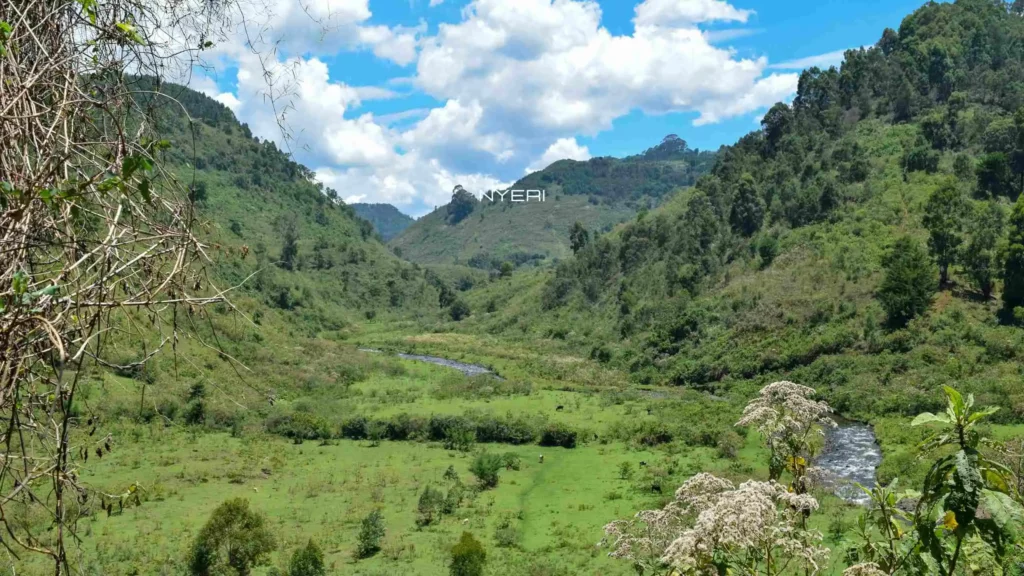
Nyeri is a town located at the base of Mount Kenya, Kenya’s highest mountain. It’s famous for its tea and coffee farming, lush landscapes, and rich colonial history.
Nyeri’s economy is heavily reliant on agriculture, with tea and coffee being the primary cash crops. Visitors to Nyeri can explore the vast tea and coffee plantations, where they can witness the cultivation and processing of these globally renowned products. The region’s stunning greenery and scenic beauty make it a delightful place to visit.
How to Reach There : Nyeri is accessible by road from Nairobi and other major Kenyan cities. Nyeri also has an airstrip, making it accessible by air.
Place Known for : Mount Kenya National Park, a UNESCO World Heritage Site, is one of the standout attractions near Nyeri. The park is known for its diverse ecosystems, including glaciers, bamboo forests, and diverse wildlife like buffaloes, elephants, and various bird species. Nyeri also has historical sites associated with the Mau Mau uprising, offering insights into Kenya’s struggle for independence.
- When hiking on Mount Kenya, it’s crucial to acclimatize properly to avoid altitude sickness. It’s advisable to hire an experienced guide and have suitable gear for trekking.
- When visiting historical sites, be respectful of their significance and follow any guidelines provided.
11. Kericho

Kericho is a picturesque town located in the highlands of western Kenya, and it’s often referred to as the “Tea Capital of Kenya.” This region is known for its lush tea plantations and agriculture.
Kericho’s rolling hills are covered in vibrant green tea bushes, creating a stunning landscape. The tea estates here produce some of Kenya’s finest tea, which is exported worldwide. Visitors to Kericho can tour the tea plantations, learn about the tea-making process, and even enjoy a cup of freshly brewed tea.
How to Reach There : Kericho is accessible by road from Nairobi and other major Kenyan cities. It’s a scenic drive through the Rift Valley region.
Place Known for : Apart from tea plantations, Kericho offers breathtaking views of the surrounding landscapes. The town’s elevation provides a cooler climate compared to other lowland areas in Kenya, making it a pleasant destination for those seeking a break from the heat.
Safety Tips : When touring tea plantations, follow the guidelines provided by the estate staff. Be cautious while walking on uneven terrain in the plantations.
12. Naivasha
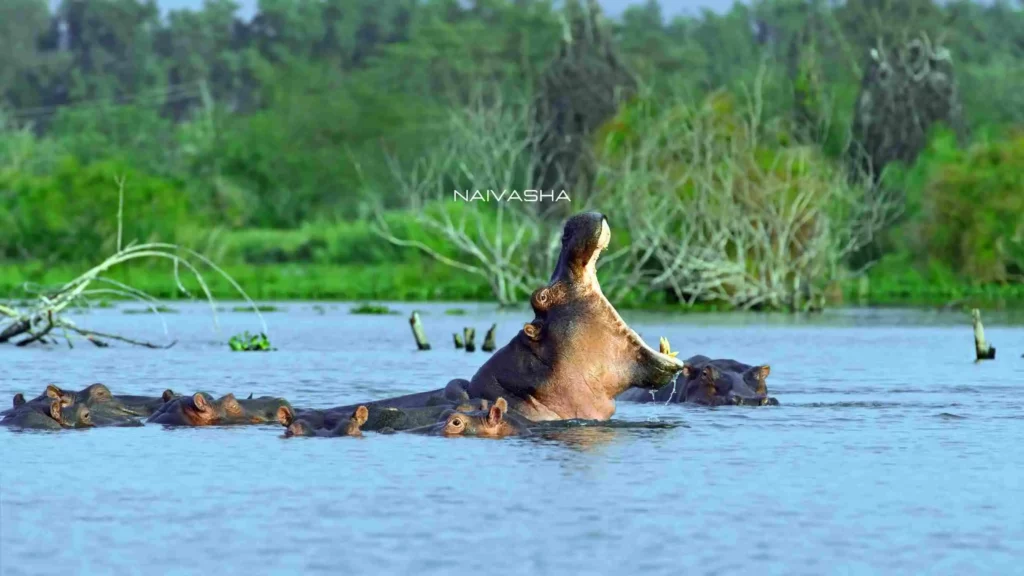
Naivasha is a beautiful town located near Lake Naivasha, one of Kenya’s freshwater lakes. It’s known for its abundant wildlife, horticulture, and stunning landscapes.
Lake Naivasha is the highlight of this region, offering opportunities for boat safaris to spot hippos, various bird species, and other wildlife. The lake’s shores are lined with flower farms, showcasing the region’s vibrant horticultural industry. Visitors can take leisurely walks around the lake and explore the nearby Hell’s Gate National Park, known for its dramatic landscapes and hiking trails.
How to Reach There : Naivasha is easily accessible by road from Nairobi and other major cities. It’s approximately a two-hour drive from Nairobi.
Place Known for : Lake Naivasha is famous for its rich birdlife, including African fish eagles, pelicans, and cormorants. The nearby Crescent Island Game Park provides a unique experience where you can walk among wildlife such as giraffes, zebras, and wildebeests.
- When taking a boat safari on Lake Naivasha, follow the safety instructions provided by your guide. Keep a safe distance from hippos, which can be dangerous.
- While hiking in Hell’s Gate National Park, stay on designated trails and carry enough water and supplies.
13. Malindi

Malindi is a coastal town situated along the Indian Ocean, making it a popular beach destination in Kenya. It’s known for its pristine beaches, vibrant marine life, and historical sites.
Malindi’s beaches are its main attraction. The soft, sandy shores and crystal-clear waters offer excellent opportunities for swimming, sunbathing, and water sports. The town also has a rich history, with landmarks like the Vasco da Gama Pillar, a testament to its Portuguese colonial past.
How to Reach There : Malindi has its airport, Malindi Airport, with domestic flight options. It’s also accessible by road from Mombasa and other coastal towns.
Place Known for : Malindi is famous for its vibrant marine life and coral reefs. Visitors can go snorkeling and diving to explore the underwater world teeming with colorful fish, coral formations, and even dolphins. The Malindi Marine National Park is a protected area that conserves the marine ecosystem.
- When engaging in water activities like snorkeling and diving, ensure you have proper gear and follow safety guidelines provided by tour operators.
- Respect the marine environment by not touching or damaging coral reefs.

Lamu is an island paradise located in the Indian Ocean and is part of the Lamu Archipelago. It’s renowned for its historic town, Swahili culture, and pristine beaches.
Lamu Town, a UNESCO World Heritage Site, is a well-preserved Swahili settlement that dates back to the 14th century. Its narrow, winding streets, coral stone buildings, and intricate woodwork reflect centuries of history and culture. The island’s beaches are untouched and offer a tranquil escape.
How to Reach There : Lamu is accessible by domestic flights to Lamu Airport or by boat from Mombasa and other coastal towns. The absence of cars on the island gives it a unique charm, with donkeys being the primary mode of transportation.
Place Known for : Lamu is famous for its rich Swahili culture, showcased in its architecture, music, and festivals. The island hosts the Lamu Cultural Festival, a vibrant celebration of Swahili traditions, every year. The beaches on Lamu, such as Shela Beach, are ideal for relaxation and water sports.
- While exploring Lamu Town, be mindful of the narrow streets and respect the privacy of local residents.
- When enjoying water activities, ensure you have life jackets and necessary safety equipment.
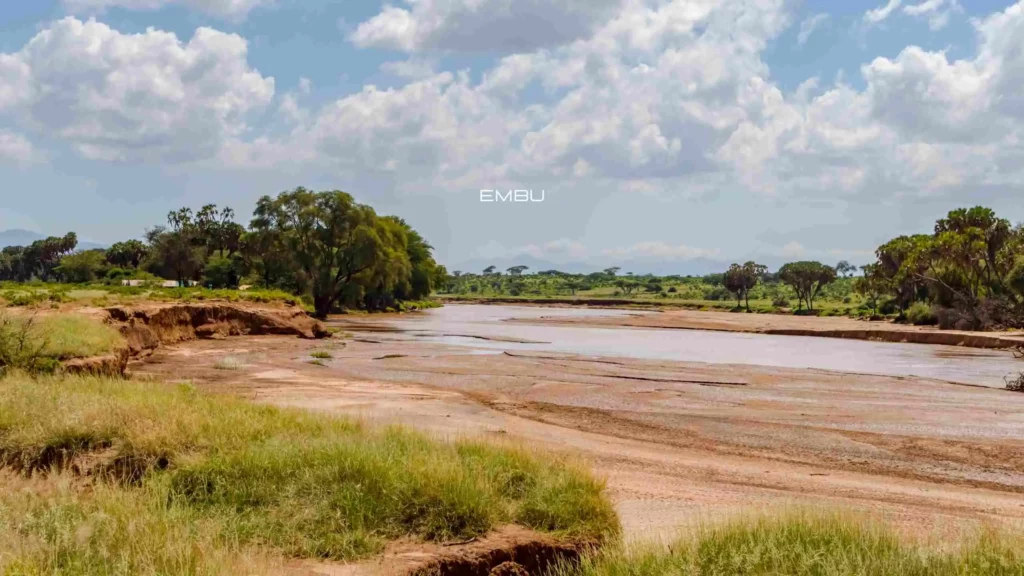
Embu is a town located in central Kenya and is known for its agricultural activities and scenic beauty. It’s nestled amid the beautiful landscapes of the Mount Kenya region.
Agriculture is the primary livelihood in Embu, with coffee and tea farming being prominent. Visitors to Embu can tour coffee and tea estates, gaining insights into the production processes. The region’s rolling hills and lush greenery make it a serene destination for nature lovers.
How to Reach There : Embu is accessible by road from Nairobi and other major cities. It’s approximately a three-hour drive from Nairobi.
Place Known for : Embu is known for its picturesque scenery, including tea and coffee plantations, forests, and rivers. The Chuka Falls, located near Embu, are a natural attraction worth visiting. The falls cascade down a rocky gorge, creating a mesmerizing spectacle.
- When exploring natural attractions like Chuka Falls, adhere to safety guidelines and avoid venturing into prohibited areas.
- When visiting agricultural estates, respect the property and follow any instructions provided by the staff.
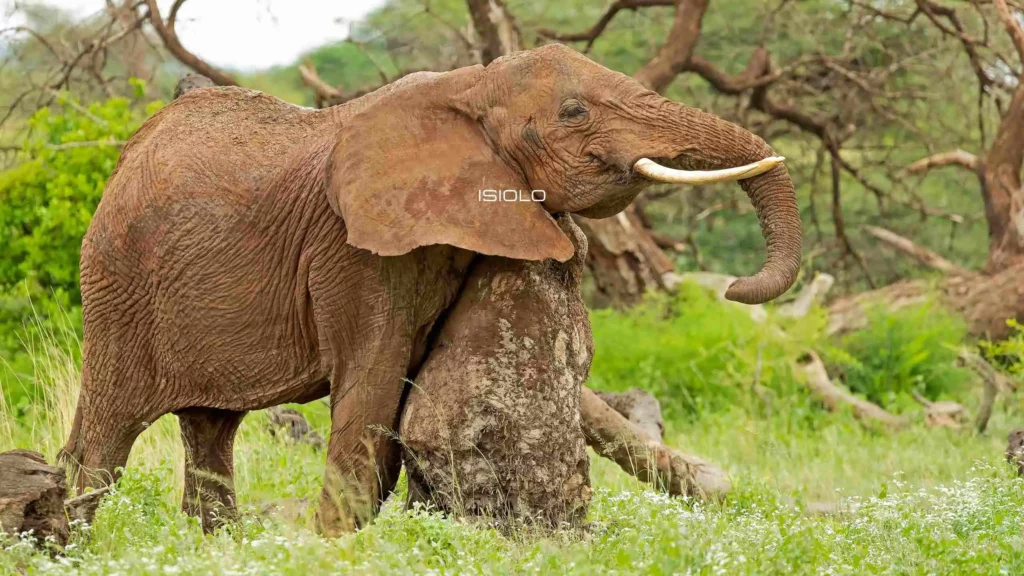
Isiolo is a town located in northern Kenya, often referred to as the “Gateway to Northern Kenya.” It’s known for its unique position as a meeting point of different cultures, wildlife, and natural beauty.
Isiolo serves as a starting point for safaris into the northern frontier of Kenya. The region is home to a diverse range of wildlife, including elephants, zebras, and giraffes. Visitors can experience the traditional culture of the Samburu and Borana people who inhabit the area.
How to Reach There : Isiolo is accessible by road from Nairobi and other major cities. The town also has an airport, Isiolo Airport, with domestic flight connections.
Place Known for : Isiolo is famous for its wildlife safaris, with several game reserves and conservancies in the vicinity. Buffalo Springs National Reserve and Shaba National Reserve are popular destinations for spotting wildlife. The town itself offers a glimpse into the unique culture of the northern Kenyan tribes.
- When on a wildlife safari, adhere to the instructions of your safari guide for your safety and the protection of the animals.
- When interacting with local communities, be respectful of their traditions and customs.
17. Bungoma
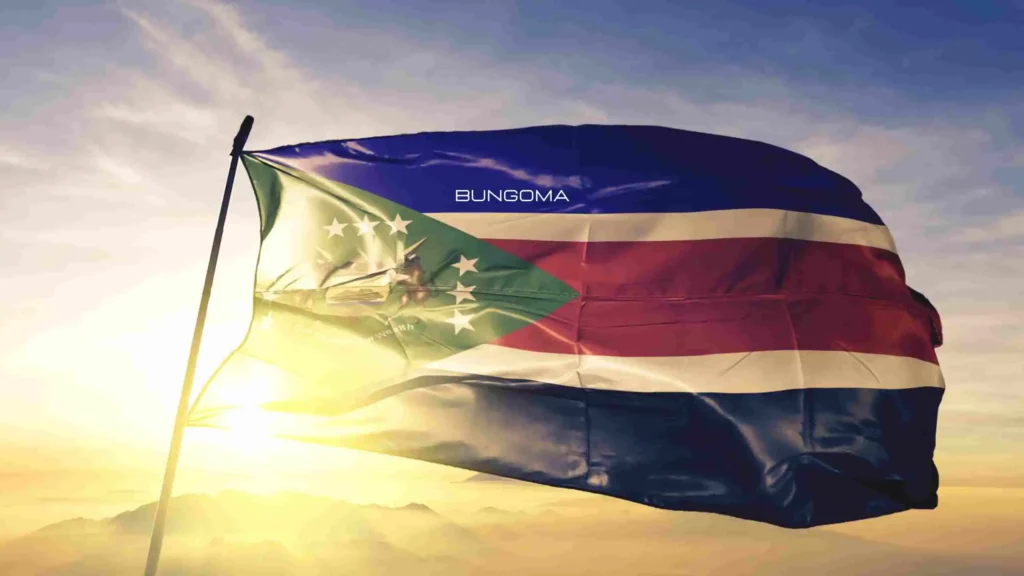
Bungoma is a town known for its scenic landscapes and rich agricultural activities. It’s located in western Kenya and offers a peaceful escape from the hustle and bustle of urban life.
The region surrounding Bungoma is characterized by rolling hills, lush farmlands, and picturesque scenery. Agriculture, including maize and sugarcane farming, is the backbone of the local economy. Visitors can immerse themselves in the rural life of Kenya, exploring farms and enjoying the serene landscapes.
How to Reach There : Bungoma is accessible by road from major Kenyan cities like Nairobi and Kisumu.
Place Known for : Bungoma is primarily known for its beautiful natural surroundings and the opportunity it provides for a rural Kenyan experience. Travelers can witness the daily life of local farmers and enjoy the peaceful ambiance.
Safety Tips : While exploring the countryside, be cautious on uneven terrain and respect the privacy of local residents.
18. Nanyuki

Nanyuki is a town located at the foothills of Mount Kenya, Africa’s second-highest peak. It’s known for its proximity to the mountain, its status as a military base, and its abundant wildlife.
Nanyuki is often the starting point for expeditions to Mount Kenya. The town itself is nestled amid breathtaking landscapes, with views of the mountain. It’s also home to a British Army training base. Nearby, visitors can explore the Ol Pejeta Conservancy, known for its rhino sanctuary and Big Five game viewing.
How to Reach There : Nanyuki is accessible by road from Nairobi and other major towns. It’s approximately a four-hour drive from Nairobi.
Place Known for : Nanyuki is famous for its proximity to Mount Kenya, making it a gateway for trekkers and climbers. The town offers various outdoor activities, including hiking, wildlife safaris, and birdwatching.
- When embarking on mountain expeditions, ensure you have proper gear, guides, and acclimatize to the altitude.
- While visiting wildlife areas, follow safety guidelines and maintain a safe distance from wild animals.
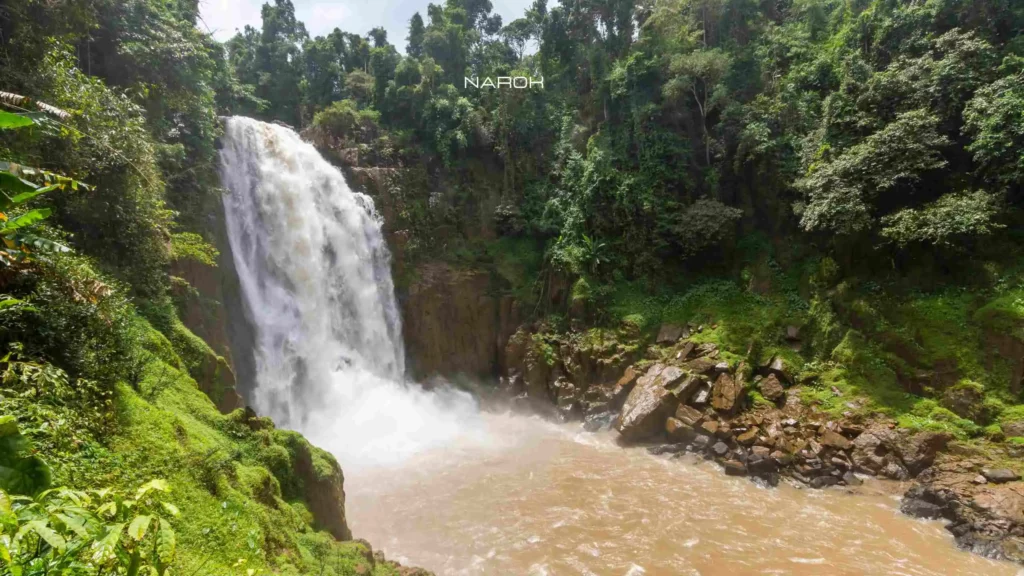
Narok is a town located near the renowned Maasai Mara National Reserve, making it a gateway to one of Africa’s most iconic wildlife destinations. It’s known for its wildlife and cultural experiences.
Maasai Mara is famous for its annual wildebeest migration, a natural spectacle where millions of wildebeests and zebras cross the Mara River. Narok town serves as a starting point for safaris to the reserve. Additionally, Narok offers opportunities to experience the vibrant Maasai culture.
How to Reach There : Narok is accessible by road from Nairobi and other major cities. It’s approximately a four-hour drive from Nairobi to the Maasai Mara.
Place Known for : Narok is renowned for its connection to the Maasai Mara, which is famous for its incredible wildlife sightings, including lions, elephants, cheetahs, and more. Visitors can also engage in cultural experiences, such as visiting Maasai villages and witnessing traditional dances.
- When on a safari in Maasai Mara, follow your guide’s instructions for a safe and respectful wildlife viewing experience.
- When interacting with the Maasai community, be culturally sensitive and seek permission before taking photos.
20. Machakos
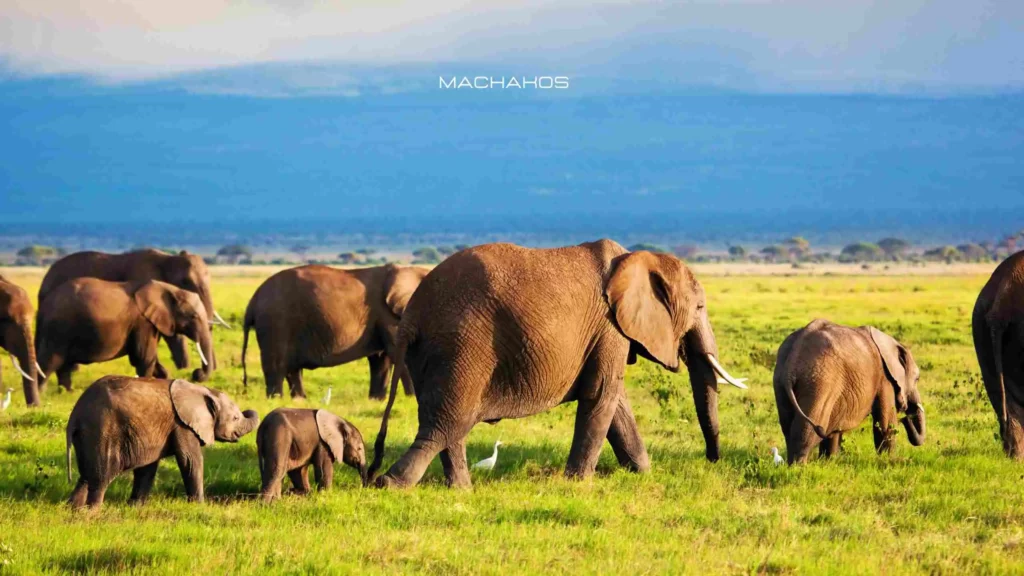
Machakos is a town located in southeastern Kenya and is known for its scenic beauty and the People’s Park, a vibrant urban recreational space.
The town is surrounded by picturesque landscapes, including rolling hills, valleys, and unique rock formations. Machakos is an ideal destination for nature lovers and those seeking a peaceful retreat. The People’s Park, situated in the town center, offers a variety of recreational activities.
How to Reach There : Machakos is accessible by road from Nairobi, and it’s approximately an hour’s drive from the capital city.
Place Known for : Machakos is known for its scenic beauty, and the People’s Park is a central attraction. The park features well-manicured gardens, a man-made lake, and walking trails. It’s a popular spot for picnics and relaxation.
Safety Tips : When visiting People’s Park, follow park regulations and guidelines to ensure a safe and enjoyable experience.
21. Nandi Hills
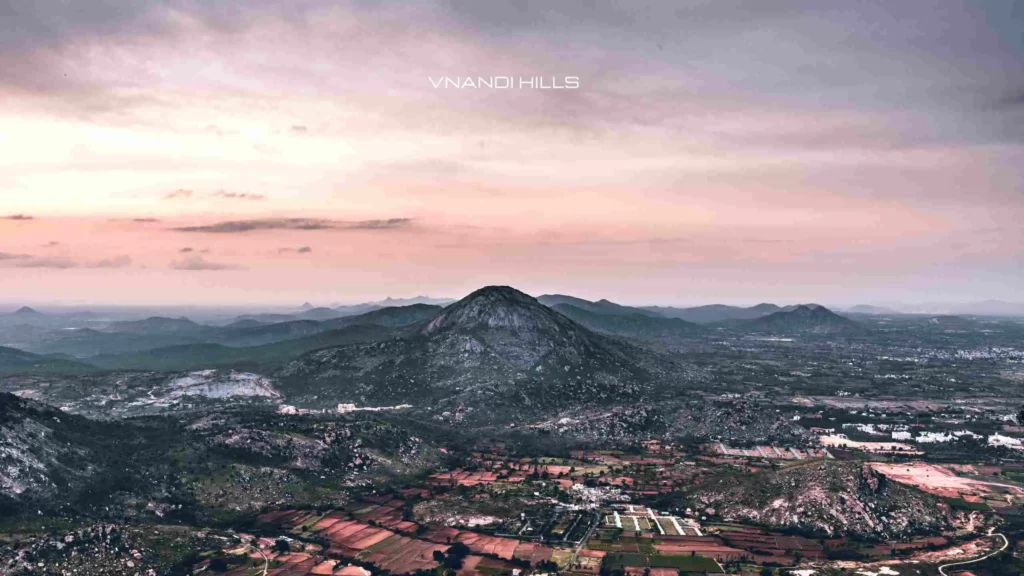
Nandi Hills is a region known for its tea and coffee farming, scenic views, and cool climate. It’s located in the Rift Valley highlands of western Kenya.
The lush greenery of Nandi Hills is dominated by tea and coffee plantations. The area’s high altitude provides a temperate climate, making it suitable for these crops. Visitors can tour the estates, sample freshly brewed tea, and enjoy the panoramic views of the surrounding hills.
How to Reach There : Nandi Hills is accessible by road from major Kenyan cities like Nairobi and Eldoret.
Place Known for : Nandi Hills is renowned for its tea and coffee farming. The estates here produce some of Kenya’s finest tea leaves and coffee beans. The region’s scenery, with rolling hills and misty mornings, offers a serene atmosphere for relaxation.
Safety Tips : When touring tea and coffee estates, follow the guidelines provided by the estate staff. Be cautious while walking on uneven terrain in the plantations.
22. Homa Bay
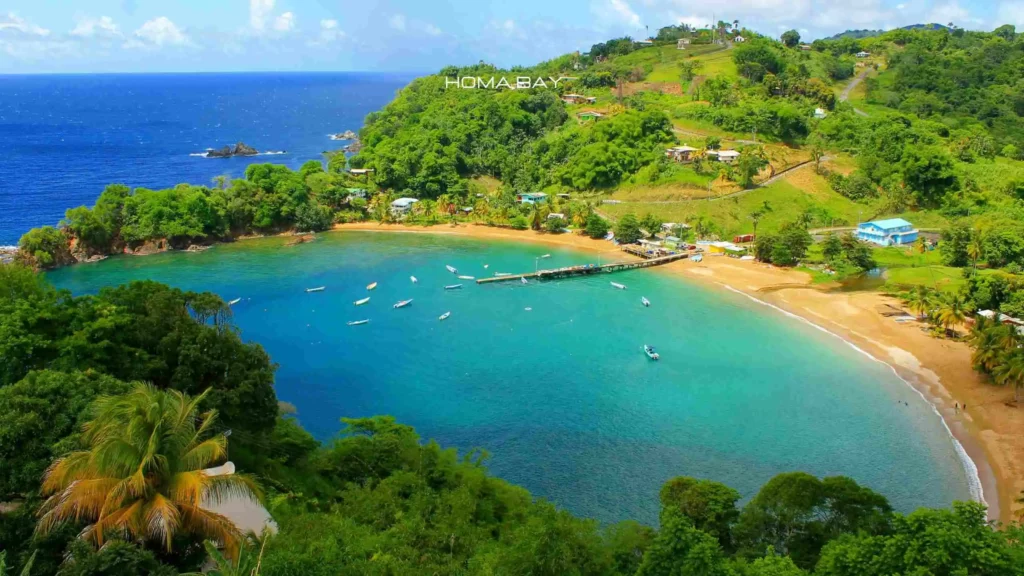
Homa Bay is a town situated on the shores of Lake Victoria, the largest freshwater lake in Africa. It’s known for its fishing industry, cultural heritage, and scenic beauty.
Lake Victoria is the lifeblood of Homa Bay, supporting the local fishing communities. Visitors can experience traditional fishing methods and enjoy freshly caught fish dishes. The town also has a rich cultural heritage, with the Suba people being one of the prominent ethnic groups.
How to Reach There : Homa Bay is accessible by road from Nairobi and other major Kenyan cities. It’s approximately a six-hour drive from Nairobi.
Place Known for : Homa Bay is famous for its connection to Lake Victoria, offering fishing excursions and boat rides. The town also provides cultural experiences where you can learn about the Suba traditions and history.
- When taking part in fishing activities, ensure you have proper equipment and follow safety instructions provided by local fishermen.
- Respect the local culture and seek permission when photographing or interacting with community members.
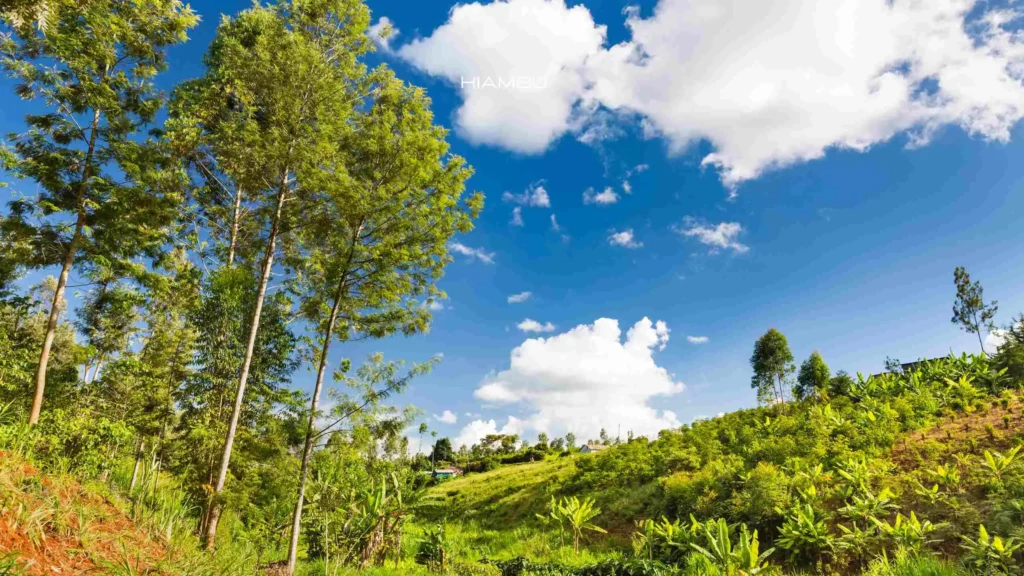
Kiambu is a county located just north of Nairobi, Kenya’s capital. It is known for its rich agriculture, the Kiambu Forest, and its vibrant culture.
Kiambu’s fertile land is ideal for agriculture, and it’s famous for producing a variety of crops, including tea, coffee, and bananas. The Kiambu Forest offers a lush green escape, perfect for nature lovers. The county also has a vibrant cultural scene with traditional music and dance performances.
How to Reach There : Kiambu is easily accessible from Nairobi by road, and it’s just a short drive away from the capital.
Place Known for : Kiambu’s agricultural significance is well-known, and it’s a great place to learn about Kenya’s farming practices. The Kiambu Forest is an excellent destination for hiking and birdwatching, providing a serene natural environment.
- When exploring the Kiambu Forest, wear appropriate hiking gear and carry essentials like water and insect repellent.
24. Karatina
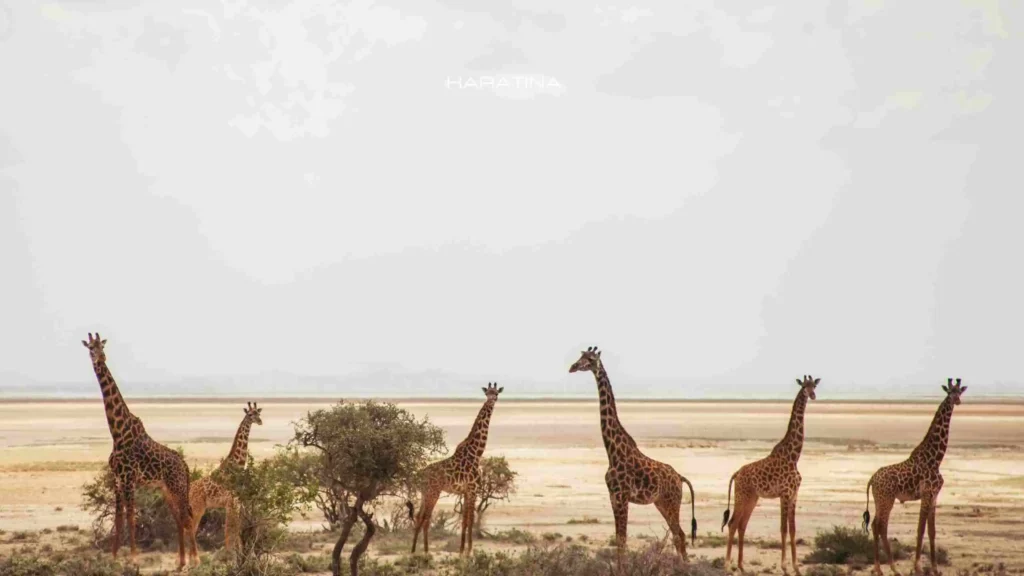
Karatina is a town situated in central Kenya and is renowned for agriculture, particularly coffee farming.
Karatina and the surrounding areas are major coffee-producing regions in Kenya. Coffee enthusiasts can visit local coffee farms to learn about the cultivation and processing of coffee beans. The town itself offers a taste of Kenyan rural life and hospitality.
How to Reach There : Karatina is accessible by road from Nairobi and other major towns in central Kenya.
Place Known for : Karatina is famous for its coffee farms and their contribution to Kenya’s coffee industry. Visitors can tour coffee estates, participate in coffee-tasting sessions, and purchase freshly roasted beans.
Safety Tips : When visiting coffee farms, respect the property and follow the instructions of the farm owners or guides.
25. Voi Town
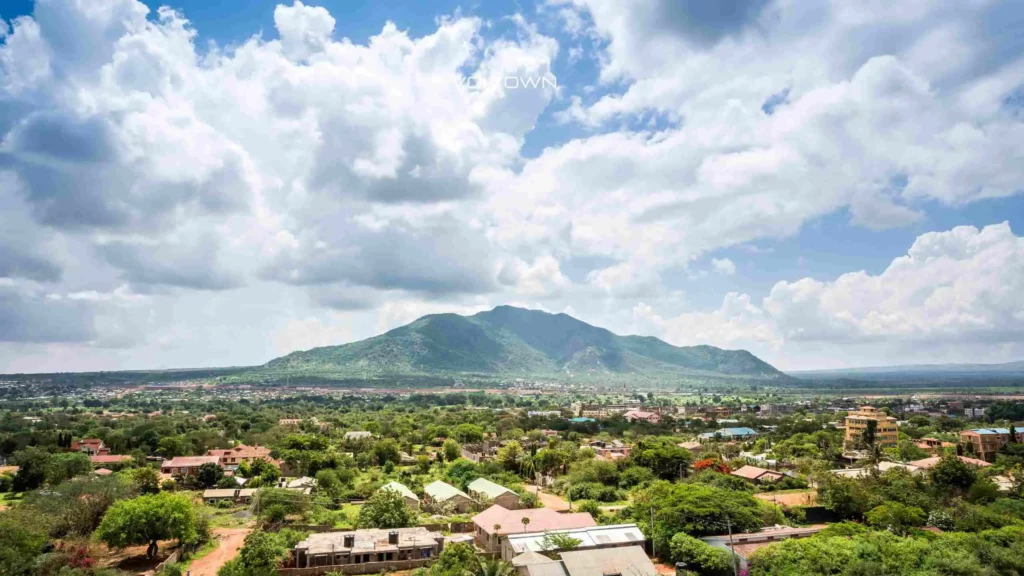
Voi is a town located at the entrance to Tsavo National Park, one of Kenya’s largest and most iconic wildlife reserves. It is known for its proximity to wildlife and natural beauty.
Voi serves as a gateway to Tsavo National Park, and its surroundings are teeming with diverse wildlife. Visitors can embark on safaris to witness the Big Five (lion, elephant, buffalo, leopard, and rhinoceros) and other animals in their natural habitat.
How to Reach There : Voi is accessible by road and rail from Nairobi and Mombasa. It’s approximately a four-hour drive from Nairobi.
Place Known for : Voi is famous for its connection to Tsavo National Park, offering incredible opportunities for wildlife viewing and birdwatching. The town also boasts scenic landscapes, including the Taita Hills.
- When on a safari in Tsavo National Park, follow your guide’s instructions for a safe and respectful wildlife viewing experience.
- Stay within designated areas and adhere to park regulations.
26. Murang’a
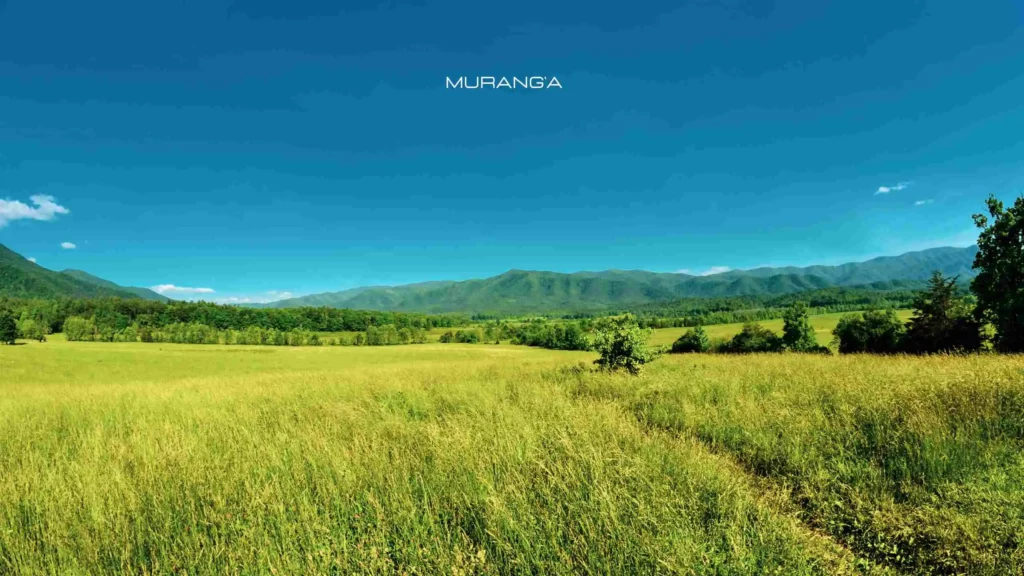
Murang’a County is located in central Kenya and is known for its agriculture, particularly tea and coffee farming, and its scenic landscapes.
The county is characterized by lush green tea and coffee estates that stretch as far as the eye can see. It offers a serene escape from the hustle and bustle of urban life. Visitors can tour the tea and coffee plantations, learning about the cultivation and processing of these famous Kenyan exports.
How to Reach There : Murang’a is accessible by road from Nairobi and other major towns in central Kenya.
Place Known for : Murang’a is famous for its tea and coffee farming, providing a glimpse into the agricultural practices that contribute to Kenya’s reputation as a top coffee and tea producer. The county’s scenic beauty is an added attraction.
27. Garissa

Garissa is a town located along the Tana River in northeastern Kenya. It is known for its connection to the Tana River, wildlife, and rich cultural heritage.
Garissa is situated in a semi-arid region, and the Tana River plays a crucial role in sustaining the local communities. Visitors can explore the riverbanks, enjoy boat rides, and observe the diverse birdlife. The town is also home to various ethnic groups, each with its unique traditions.
How to Reach There : Garissa is accessible by road from Nairobi and other towns in eastern Kenya. It’s approximately a seven-hour drive from Nairobi.
Place Known for : Garissa is famous for its connection to the Tana River, offering opportunities for river-based activities and birdwatching. It also provides insights into the diverse cultures of northeastern Kenya.
- When participating in river activities, use life jackets and follow safety instructions provided by local guides.
- Show respect for the local culture and traditions when interacting with residents.
28. Kerugoya

Kerugoya is a picturesque town located in Kirinyaga County, central Kenya. It is renowned for its agricultural activities and scenic beauty.
Nestled amidst rolling hills and lush landscapes, Kerugoya is a haven for nature enthusiasts. The town is surrounded by tea and coffee plantations, adding to its natural charm.
How to Reach There : Kerugoya is accessible by road from Nairobi and other major towns in central Kenya.
Place Known for : Kerugoya’s primary claim to fame is its agricultural significance, particularly in coffee farming. Visitors can explore the scenic beauty of the region, take leisurely walks through tea estates, and enjoy the tranquil environment.
Safety Tips : When visiting agricultural areas, it’s essential to respect the property and follow any guidelines provided by estate staff.
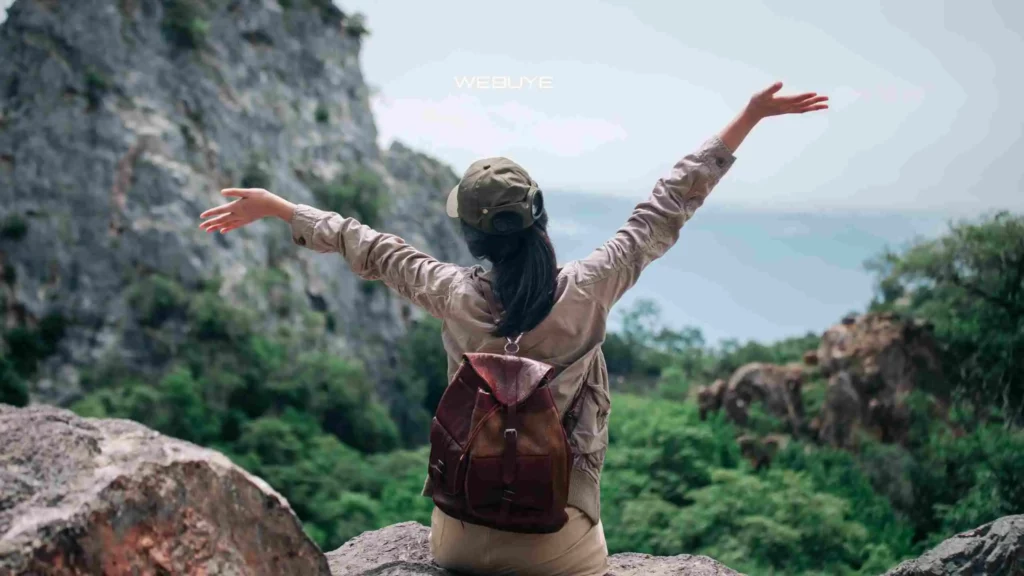
Webuye is a town in western Kenya known for its Pan Paper Mills and its role in agriculture.
Webuye’s industrial landscape revolves around the Pan Paper Mills, which is a vital contributor to the local economy. The town also has a strong presence in agriculture, with farms cultivating a variety of crops.
How to Reach There : Webuye is accessible by road from Nairobi and other major towns in western Kenya.
Place Known for : Webuye is famous for the Pan Paper Mills, representing the industrial sector in Kenya. While it may not be a traditional tourist destination, it provides insights into the country’s industrial and agricultural sectors.
- When visiting industrial areas like the Pan Paper Mills, it’s essential to adhere to safety regulations and guidelines provided by the facility’s management.
- Show respect for the local communities and their way of life.
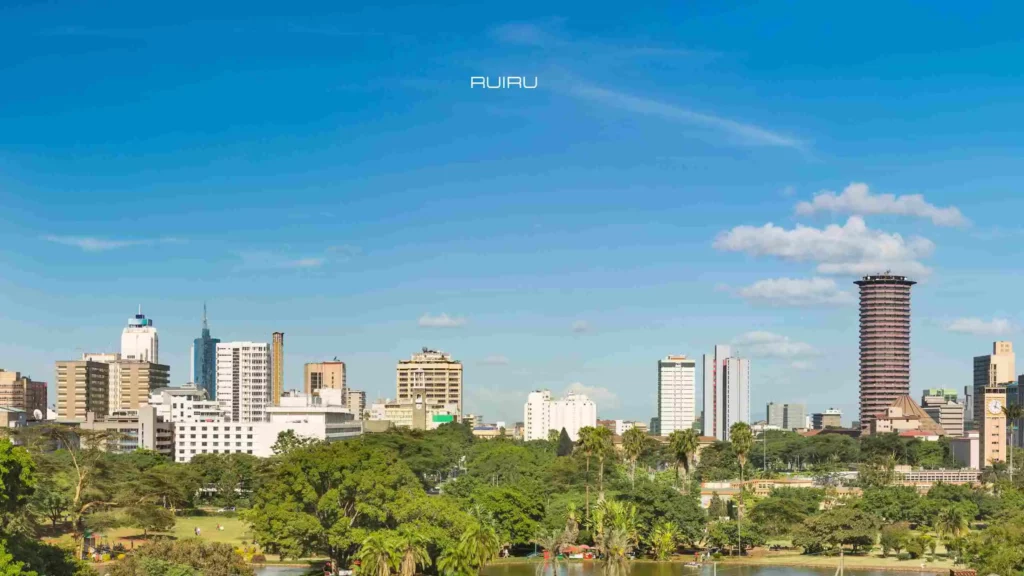
Ruiru is a bustling town situated along Thika Road and is known for its agricultural activities and the Thika Road Mall.
Located along one of Kenya’s major highways, Ruiru is a transportation hub that connects Nairobi to other parts of the country. The town is surrounded by farmlands where various crops are cultivated. Additionally, the Thika Road Mall offers shopping and entertainment options for visitors.
How to Reach There : Ruiru is easily accessible by road, especially from Nairobi and other towns in central Kenya.
Place Known for : Ruiru is renowned for its agricultural activities, reflecting Kenya’s role as a producer of crops like maize, beans, and vegetables. The Thika Road Mall is a popular shopping and leisure destination in the area.
- When visiting agricultural areas, it’s essential to respect the property and follow any guidelines provided by local farmers or guides.
- When visiting malls, exercise standard safety precautions, such as securing your belongings and being aware of your surroundings.
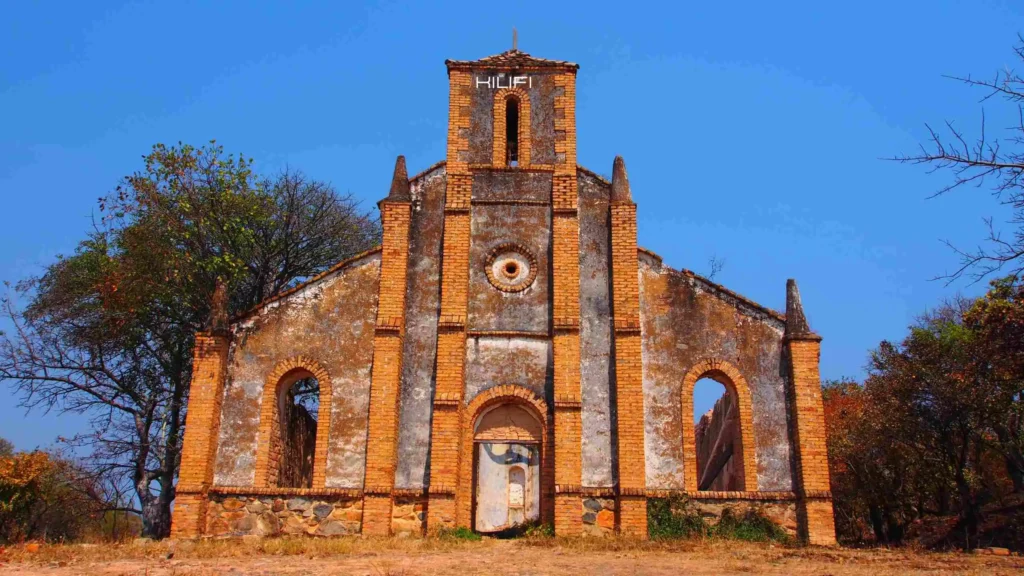
Kilifi is a coastal town located along the shores of the Indian Ocean. It is known for its stunning beaches, diverse marine life, and historical sites.
Kilifi is a tropical paradise, boasting pristine white-sand beaches and clear turquoise waters. The town also holds historical significance, with ancient ruins and Swahili architecture offering insights into Kenya’s coastal heritage.
How to Reach There : Kilifi is easily accessible by road from Mombasa, Nairobi, and other major cities. It’s a sought-after destination for those seeking a tranquil beachside escape.
Place Known for : Kilifi is famous for its beautiful beaches, where visitors can indulge in sunbathing, swimming, and various water sports. The town’s historical sites, such as the Gede Ruins and Jumba la Mtwana, add cultural depth to the experience.
Safety Tips : When swimming or engaging in water activities, pay attention to tides and currents. Always follow safety guidelines provided by local authorities.
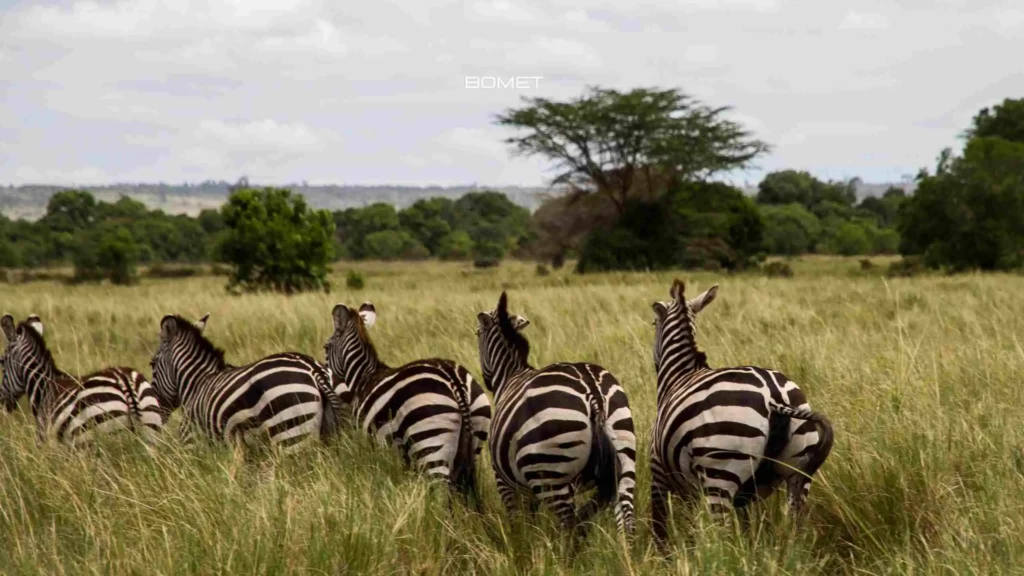
Bomet is a town located in southwestern Kenya, known for its agriculture, especially tea farming, and its scenic landscapes.
Bomet County is renowned for its lush tea plantations that cover the rolling hills. The region’s picturesque beauty and favorable climate make it an attractive destination for nature enthusiasts.
How to Reach There : Bomet is accessible by road from Nairobi and other towns in western Kenya.
Place Known for : Bomet is famous for its tea farming, offering opportunities for tea plantation tours and tasting sessions. The town’s scenic vistas and cool climate provide a refreshing break from urban life.
- When visiting tea plantations, respect the property and follow any guidelines provided by estate staff.
- Be cautious when walking on uneven terrain in the hilly tea estates.
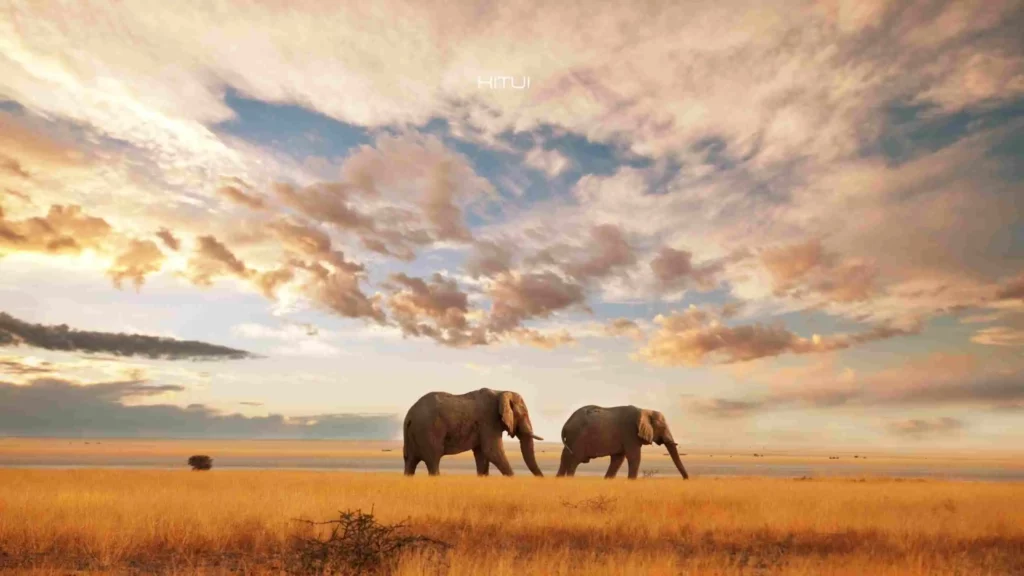
Kitui is a town located in eastern Kenya, known for its proximity to Chyulu Hills and its rich cultural heritage.
Nestled amidst the stunning landscapes of eastern Kenya, Kitui offers visitors a unique blend of natural beauty and cultural experiences. The town is surrounded by rolling hills, making it an ideal destination for hiking and nature enthusiasts.
How to Reach There : Kitui is accessible by road from Nairobi and other major towns in eastern Kenya.
Place Known for : Kitui’s primary attraction is its proximity to Chyulu Hills, a volcanic mountain range known for its unique landscapes and diverse wildlife. Additionally, the town showcases Kenya’s cultural heritage, with opportunities to learn about local traditions and practices.
Safety Tips : When hiking in Chyulu Hills, it’s important to be prepared with suitable gear and follow safety guidelines provided by local guides.
34. Lamu Archipelago
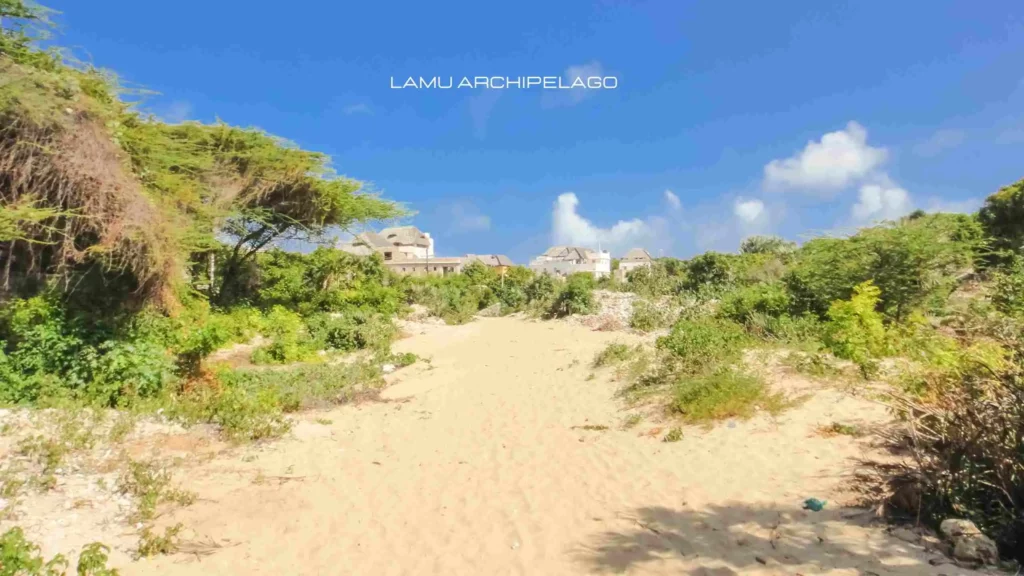
The Lamu Archipelago is a group of islands located along the northern coast of Kenya. It is often referred to as an island paradise and is famous for its Swahili culture and stunning beaches.
The Lamu Archipelago is a tropical paradise where time seems to stand still. Its islands, including Lamu Island, Manda Island, and Pate Island, are renowned for their historical significance and breathtaking natural beauty.
How to Reach There : You can reach the Lamu Archipelago by boat or air from Mombasa or Nairobi. Once on the islands, transportation is primarily by boat or donkey, as there are no cars on Lamu Island.
Place Known for : The Lamu Archipelago is famous for its pristine beaches, where visitors can relax, swim, and enjoy water sports. The islands also boast a rich Swahili culture, with well-preserved old towns, narrow streets, and centuries-old architecture.
- When exploring the islands, be sure to respect local customs and traditions.
- Follow any safety guidelines provided for water activities and boat trips.
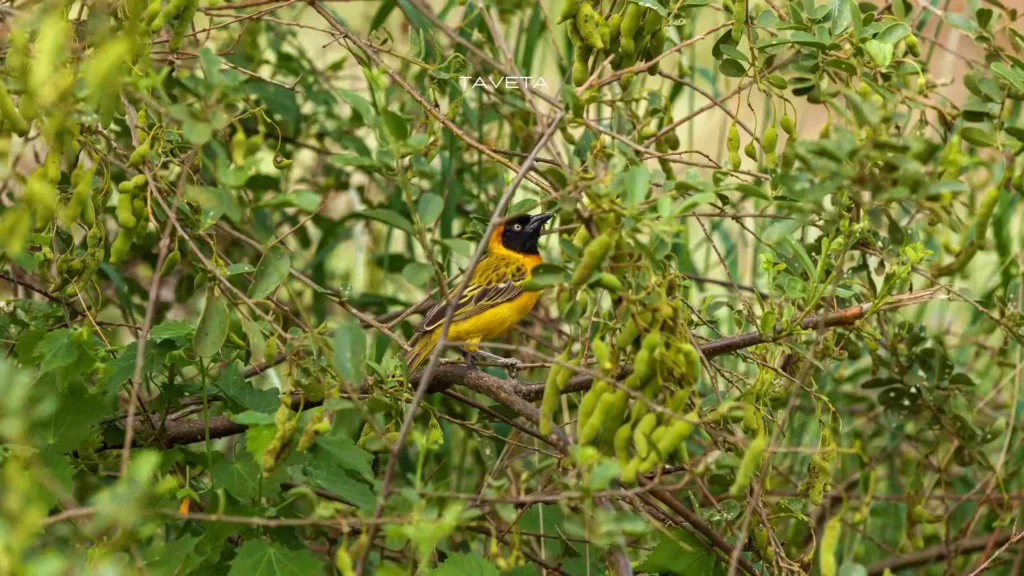
Taveta is a town located near the border with Tanzania and is known for its proximity to Tsavo West National Park and its abundant wildlife.
Taveta is a gateway to the wilderness of Tsavo West National Park, one of Kenya’s largest and most diverse wildlife reserves. It offers a unique opportunity to experience the natural wonders of Kenya.
How to Reach There : Taveta is accessible by road from Nairobi and other major towns. It serves as an entry point to Tsavo West National Park.
Place Known for : Taveta is famous for its proximity to Tsavo West National Park, where visitors can embark on thrilling safaris to witness the park’s diverse wildlife, including elephants, lions, and a variety of bird species.
- When on a safari in Tsavo West National Park, it’s crucial to follow safety instructions provided by experienced guides.
- Respect the wildlife and maintain a safe distance from animals.
Conclusion .
Kenya is a country of immense beauty and diversity, offering a wealth of experiences for travelers. Whether you’re drawn to the bustling urban life of Nairobi, the coastal charm of Mombasa, the cultural richness of Kisumu, or the natural wonders of its national parks and reserves, Kenya has something to offer every type of explorer. The country’s landscapes range from lush forests and savannahs to vibrant cities and tranquil lakeshores.
Kenya’s people are warm and welcoming, and its wildlife is among the most spectacular on Earth. While exploring this incredible nation, it’s essential to take safety precautions, as with any travel destination, but the experiences and memories you’ll create in Kenya are bound to be unforgettable. So, pack your bags, prepare for adventure, and immerse yourself in the beauty and culture of Kenya.
How much did you like Our detailed 35 Best Places to Visit In Kenya ? Review Also, please share these Blogs with your friends on social media.
Recommended
- UNITED STATES
35 Best Places to Visit In Kenya FAQs
How to reach kenya.
Kenya is accessible by air, and most international travelers arrive at Jomo Kenyatta International Airport in Nairobi, which is the country's largest and busiest airport. There are also international airports in Mombasa and Kisumu. Several major airlines operate flights to Kenya from various parts of the world. Travelers can check for direct flights or connect through other major African or international hubs.
Why Kenya is famous for tourism?
Kenya is famous for tourism primarily due to its stunning natural beauty and diverse wildlife. The country boasts an incredible array of national parks and reserves, making it a top destination for safaris and wildlife enthusiasts. Additionally, Kenya offers rich cultural experiences, including interactions with various ethnic groups like the Maasai and Samburu. Its beautiful coastal areas, historical sites, and activities like hot air ballooning over the Maasai Mara further contribute to its popularity.
What is the tourism trend in Kenya?
Kenya has seen a steady increase in tourism over the years, with a growing trend towards eco-tourism, sustainable travel, and cultural experiences. Visitors are increasingly interested in conservation efforts and community-based tourism initiatives. The country is also attracting adventure seekers and hikers interested in exploring its diverse landscapes.
Is it expensive to travel in Kenya?
Traveling in Kenya can vary in cost depending on your preferences. Safari lodges and high-end accommodations can be expensive, but there are budget-friendly options available, including hostels and campsites. Transportation costs, such as safari tours and flights to national parks, can also impact the overall expense. Dining in local restaurants is usually affordable.
What is the best month to go to Kenya?
The best time to visit Kenya depends on your interests. The dry season, from late June to October, is ideal for wildlife viewing, especially in national parks like Maasai Mara. The short rains from November to December and the long rains from March to May are less popular due to potential muddy conditions, but they can still be rewarding for certain experiences.
Is it still safe to travel to Kenya?
Kenya is generally safe for tourists, but like any travel destination, it's essential to stay informed about current safety conditions. Some areas, particularly near the borders, may have travel advisories due to security concerns. It's advisable to check government travel advisories and consult with local authorities or tour operators for the latest safety information.
How many days in Kenya is enough?
The ideal duration for a trip to Kenya depends on your interests and the places you want to visit. A typical safari in Maasai Mara or other national parks can last 3-5 days. If you plan to explore more regions or engage in various activities, a 10–14-day trip would allow for a more comprehensive experience.
What makes people want to go to Kenya?
People are drawn to Kenya for its incredible wildlife, iconic landscapes, rich cultures, and the opportunity to engage in exciting activities like safaris, hiking, and hot air ballooning. Kenya's reputation as a prime destination for eco-tourism and adventure travel also attracts nature enthusiasts and adventure seekers.
How much do I need to visit Kenya?
The cost of a trip to Kenya varies widely based on your preferences and travel style. A budget traveler could manage on around $50-100 per day, while mid-range travelers might spend $150-300 per day. Luxury safaris and accommodations can cost considerably more.
What is Kenya best known for?
Kenya is best known for its wildlife, national parks, and safaris. The country is also famous for its diverse cultures, stunning landscapes, including Mount Kenya and the Great Rift Valley, and its vibrant capital city, Nairobi.
Is Kenya safe for solo female travelers?
Kenya can be safe for solo female travelers, but it's essential to take precautions. This includes avoiding walking alone at night, dressing modestly, and staying in reputable accommodations. Researching and planning your trip carefully can contribute to a safe and enjoyable experience.
What is the most beautiful thing in Kenya?
Kenya's beauty lies in its natural landscapes, from the rolling savannahs of Maasai Mara to the pristine beaches of the coast. The Great Migration of wildebeest and zebras in Maasai Mara is often considered one of the most breathtaking natural spectacles on Earth.
How safe is Nairobi for tourists?
Nairobi, like any major city, has areas that may be less safe, but many parts of the city are safe for tourists. It's advisable to stay in well-traveled and secure areas, use reputable transportation, and take standard urban safety precautions.
What is the number one tourist attraction in Kenya?
The Maasai Mara National Reserve, known for its incredible wildlife, particularly during the Great Migration, is often considered the number one tourist attraction in Kenya. It offers some of the best safari experiences on the continent.
What makes Kenya so unique?
Kenya's uniqueness stems from its combination of diverse landscapes, cultures, and wildlife. Few places on Earth offer the opportunity to witness the Big Five (lion, elephant, buffalo, leopard, and rhinoceros) in their natural habitat while also experiencing vibrant cultures and stunning scenery.
How can I get a tourist visa for Kenya?
To get a tourist visa for Kenya, you can typically apply online through the eVisa portal or obtain one on arrival at major international airports and border crossings. Requirements may vary depending on your nationality, so it's advisable to check with the Kenyan embassy or consulate in your home country.
Can I get a Kenyan visa on arrival?
Yes , many travelers can obtain a Kenyan visa on arrival at international airports and border crossings. However, it's essential to check the latest visa regulations and requirements, as they can change, and some nationalities may need to apply for an eVisa in advance.

Meet David Hoper, a passionate travel Blog writer with 7+ years of experience in travel content. Through his exemplary storytelling and engaging narratives, he shares his experiences and brings destinations to life. With a keen eye for detail and a love for exploration, he has cultivated a diverse portfolio of travel blogs that inspire and inform readers worldwide.
In this article:

Post written by: David Hoper
Leave a reply.
Your email address will not be published. Required fields are marked *
Save my name, email, and website in this browser for the next time I comment.
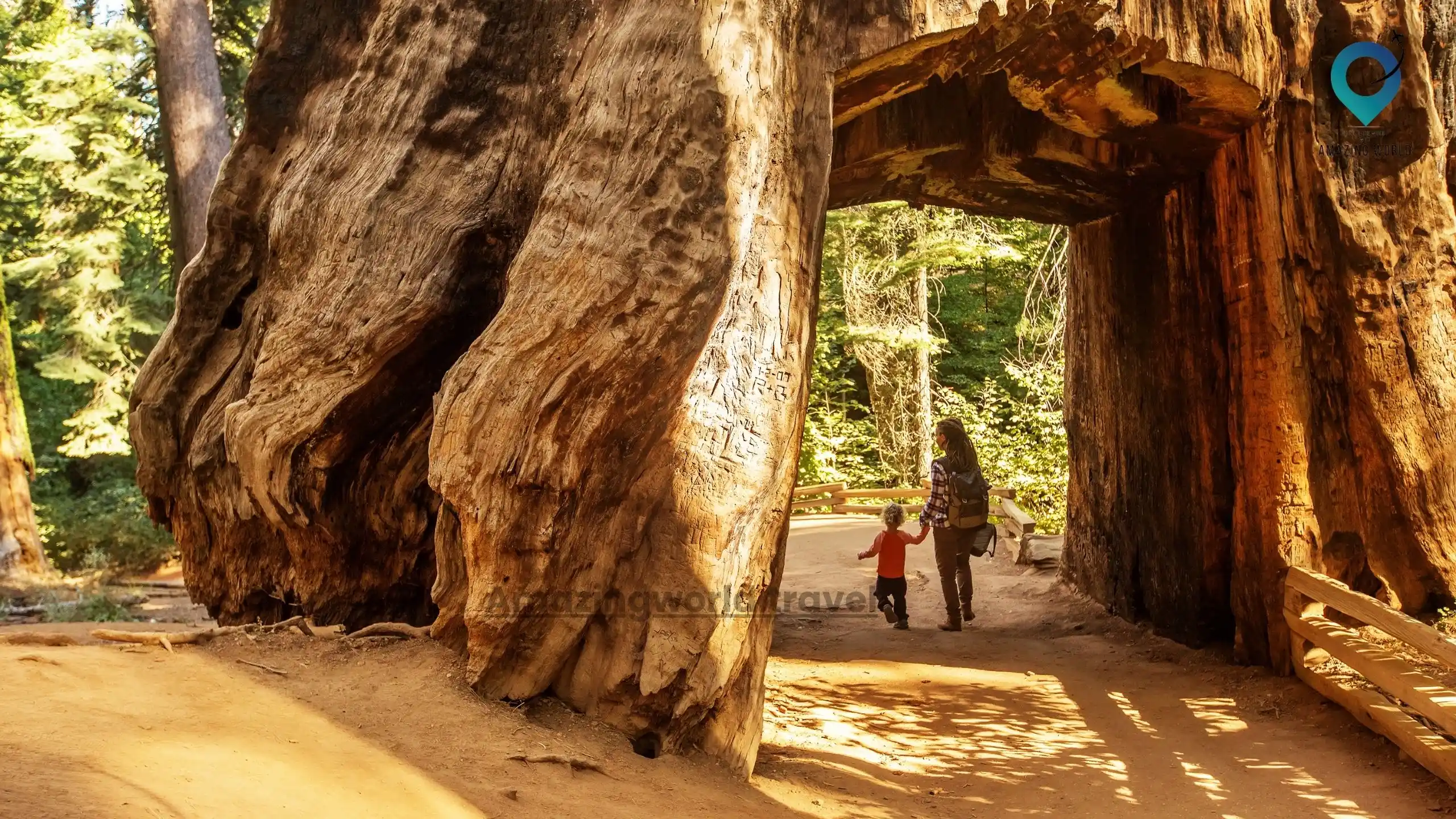
United states Capturing USA National Parks: My Personal Experience Adventure Stories

- September 18, 2023
Travel Photography and Videography Mastering Twilight Photography: Tips and Techniques for Stunning Day-to-Night Shots
You may also like.
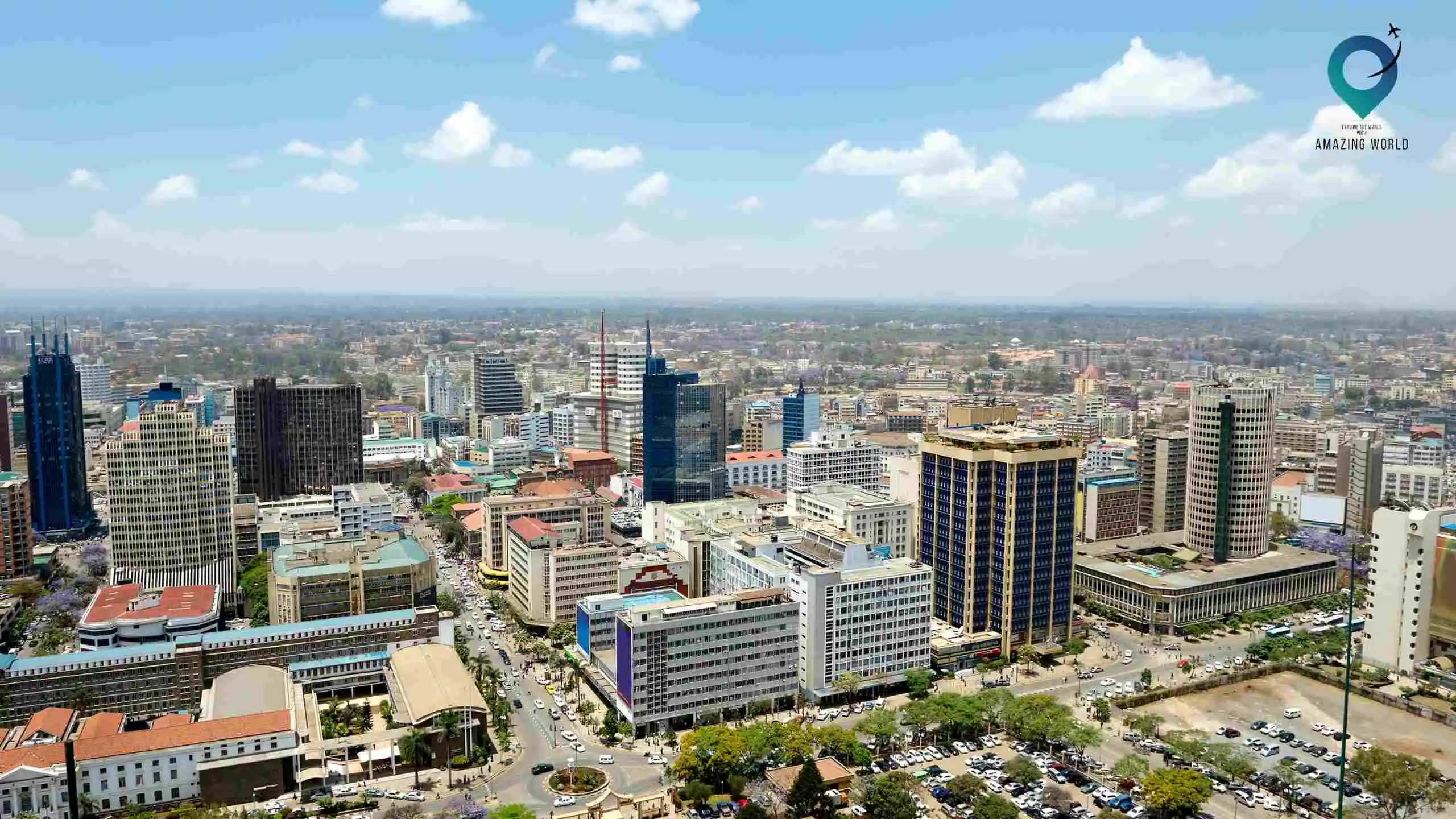
Nairobi Travel Guide: 25 Fun Things to Do and Top-Rated Tourist Attractions in 2024
- 27 minute read

Masai Mara – Nature’s epic safari destination in Kenya
- 6 minute read
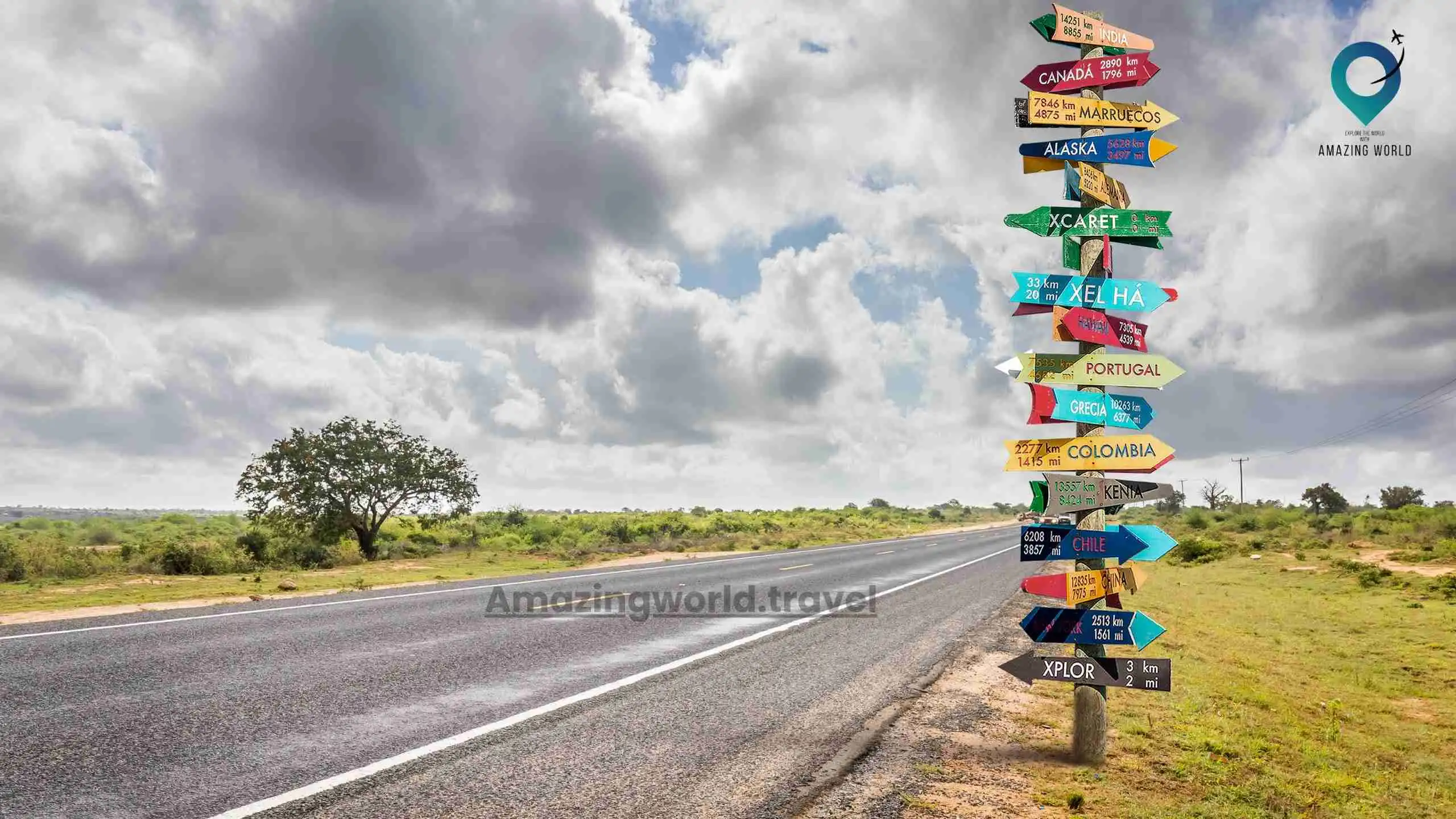
Kenya Travel Guide: Best Time to Visit Kenya.
- 8 minute read
Our Latest Instagram Posts
@amazingworld.travel8.
- Search Please fill out this field.
- Newsletters
- Destinations
- Africa & Middle East
12 Best Things to Do in Kenya
:max_bytes(150000):strip_icc():format(webp)/DSC00412-5b73daf7c9e77c0057ca2198.jpg)
Perceived by many as the original safari destination , Kenya is still one of the best choices for a classic African experience. Lion prides range across the vast open spaces of the Maasai Mara, while wildebeest and zebra arrive by the millions for the annual Great Migration and in some places, pastoralist Maasai and Samburu tribespeople continue to live as they have done for thousands of years. There's a lot more to this country than its popular game reserves , however, as Nairobi offers multi-faceted culture while the Swahili Coast sports historic towns and picture-perfect beaches. Here’s a look at 12 of Kenya 's top attractions, all places you should check out on your next trip.
Spend Some Time in Nairobi
Verónica Paradinas Duro / Getty Images
Most visitors to Kenya will find themselves flying into Jomo Kenyatta International Airport in Nairobi . Instead of continuing your journey right away, consider spending a night or two in the capital. From museums, wildlife experiences, and crafts markets during the day to a rollicking nightlife and foodie scene at night, there's plenty to keep you busy for a few days before (or after) a safari adventure, especially in and around the affluent suburb of Karen, home of the city's central business district.
It's easy to get around town via taxi or by taking Kenya Bus or a traditional matatu minivan. Visit the Nairobi National Museum and the Nairobi Gallery to learn more about the city's thriving history, art, and culture. Spot wild lions and black rhinos at Nairobi National Park , watch rescued baby elephants being fed at the Sheldrick Wildlife Trust elephant orphanage, and come face-to-face with rehabilitated Rothschild's giraffes at the Giraffe Center . Out of Africa fans will love the Karen Blixen Museum , located in the author's own home at the foot of the Ngong Hills.
Enjoy Kenya's Coast and Marine National Parks
Antonio Zanghì / Getty Images
Balance some time in the bush with seaside relaxation along the white-sand beaches of Kenya's idyllic central coast. Malindi is a lively option, as an established resort destination with upscale hotels, restaurants, and bars, while neighboring Watamu charms with its rural atmosphere and protected palm-fringed shores.
Popular beach town activities include sunset dhow cruises, scuba diving, snorkeling, and deep-sea fishing. It's just a five-hour train ride or a one-hour flight from Nairobi to Mombasa, then a two-hour drive up the coast, or you can fly one hour straight into Malindi from Nairobi. Watamu Marine National Park & Reserve is a great place to see green turtles living among its coral gardens as well as the humpback whales that pass through the area from July to October.
Located at the bottom-right corner of the country near the border with Tanzania, Kisite-Mpunguti Marine Park & Reserve is also worth a visit, with the chance to see endemic sea life like dolphins, sea turtles, whales, coral reef systems, and more than 250 species of fish, making it a prime spot for snorkeling and diving. Bird watching is also popular here, as migratory birds use the area to nest in large colonies.
Take a Hike in Hell's Gate National Park
Nigel Pavitt / Getty Images
Situated about three hours northwest of Nairobi, Hell's Gate National Park is unlike any other place in Kenya. Part of the Great Rift Valley, the area is a center of geothermal activity, boasting a mix of soaring cliffs, plunging gorges, and immense rock pillars. Plumes of escaping steam and swimmable thermal springs only add to the sense of drama here.
Unlike the country's other national parks, Hell's Gate allows walking safaris and has designated trails just for hiking and mountain biking. Sites like Fischer's Tower are popular among rock climbers while birders flock to the Mervyn Carnelley Raptor Hide to see nesting birds of prey in the wild, including Egyptian vultures and the majestic Verreaux's eagle.
Witness the Great Migration
Piper Mackay / Getty Images
Every year, millions of wildebeest, zebra, and antelope make their way from Serengeti National Park in Tanzania to Maasai Mara National Reserve in Kenya. While their exact movements are dictated by the rains, the herds typically enter the country in August and spend September and November grazing on its lush southern plains.
The Great Migration (and the Mara River crossing in particular) is one of the world's most iconic natural spectacles. The area is also home to the Big Five (elephant, lion, leopard, black rhinoceros, African buffalo) and known for its robust predator sightings. To make sure you get front-row seats to all the action, consider staying in a mobile camp like Enaidura or Nkorombo .
Visit Both Sides of Tsavo National Park
Alberto Ghizzi Panizza / Getty Images
In the far southeastern part of Kenya is Tsavo National Park, which makes up Kenya's largest protected wildlife area and is split into two distinct sections: Tsavo East and Tsavo West . Though the safari experience in each park is quite different, both sides offer a chance to spot the Big Five and 600 species of birds.
Tsavo East is known for its picturesque red dust plains, intersected by the beautiful Galana River, which attracts diverse wildlife, including large elephant herds. This park is also home to the world's longest lava flow, the Yatta Plateau. Tsavo West, on the other hand, is wetter, greener, and even more scenic—be sure to visit Mzima Springs—although the animals living here can be harder to spot.
Discover Swahili History on Lamu Island
Nigel Pavitt / Getty Images
Head to northern Lamu Island to immerse yourself in Kenya's Swahili culture. The UNESCO World Heritage site of Old Town has been continually inhabited for more than 700 years and is the oldest and best-preserved Swahili settlement in East Africa. Visit landmarks like Lamu Fort (which now houses the fascinating Lamu Museum) or wander through labyrinthine streets admiring the traditional coral stone and mangrove timber houses.
The Arabic, Persian, European, and Indian architectural influences you’ll see are a testament to Lamu Island's rich trading history. There are no motorized vehicles on the island, just donkey carts and dhows offering beach trips, snorkeling tours, and other touristic activities like swimming with dolphins.
Photograph Flamingoes at Lake Nakuru National Park
mantaphoto / Getty Images
Located in central Kenya, Lake Nakuru National Park is situated on the floor of the Great Rift Valley. It’s perhaps best known for its vast soda lake, which takes up approximately a third of the park's total area and attracts hundreds of thousands of greater and lesser flamingoes who come to mate, raise their young, and feed on the lake's algae.
Although pollution has caused the flamingoes to migrate elsewhere in past years, recent clean-up efforts have seen many of them return to the area. Flamingoes aside, Lake Nakuru National Park is a birding hotspot, with more than 450 different avian species calling it home. You’ll also be able to see lions, leopards, and white rhinos, while its spectacular euphorbia forest is the largest in Africa.
Trek to the Top of Mount Kenya
Mount Kenya is Africa's second tallest mountain and the inspiration for the country's modern name . Those who wish to climb it can choose between three peaks: Batian (17,057 feet/5,199 meters), Nelion (17,021 feet/5,188 meters), and Point Lenana (16,355 feet/4,985 meters).
While the first two peaks require technical equipment and training, it's possible for amateur trekkers to reach the summit at Point Lenana. Mount Kenya's slopes are cloaked in forest and moorland, which gives way to layers of rock, ice, and snow. The best time to climb is during the drier months of January to February or from July to October. Whenever you go, be sure to book with a reputable operator like Go to Mount Kenya .
Search for Elephants at Amboseli National Park
oversnap / Getty Images
If seeing large herds of elephants up close is at the top of your Kenya wish list, visit Amboseli National Park . Located in the southern part of the country, the reserve is known for amazing elephant sightings set against the dramatic backdrop of snow-capped Mount Kilimanjaro , which is visible across the Tanzanian border. The best time to visit is from June to October.
A diverse array of habitats also makes the park a hotspot for other animal and bird species. Keep an eye out for all three big cats, the endangered African wild dog, and more than 600 different types of birds. Maasai villages situated around the edge of Amboseli National Park offer opportunities for insightful cultural visits.
Admire the Desolate Beauty of Lake Turkana
Also known as the Jade Sea because of its pale green color, Lake Turkana is the largest permanent desert lake on the planet and a great off-the-beaten-track spot for those who appreciate stark beauty.
The barren shores and saline waters also happen to house the world's largest concentration of Nile crocodiles, who breed in Central Island National Park among a vivid landscape that includes three active volcanoes. Hippos and large flocks of flamingoes can also be seen here, though the park’s main attraction is its lunar scenery. Lake Turkana also has great anthropological importance as the discovery site of some of the earliest hominid fossils ever found.
Book a Stay on a Kenyan Conservancy
Daryl Balfour / Getty Images
For a more exclusive safari experience, book a stay on one of Kenya's famous conservancies—like Recommended conservancies include Lewa , Loisaba , and Ol Pejeta —or tracts of land owned by Indigenous communities that are rented by eco-tourism companies and operated as private game reserves.
Choosing this type of accommodation comes with many benefits. Firstly, you can rest assured knowing your money is directly benefiting the local community, which helps to reduce conflict between traditional landowners and native wildlife, thereby promoting conservation. Secondly, conservancies aren't restricted by the same rules as national parks so they can offer special perks like night drives and walking safaris.
Explore the Cultures and Landscapes of Northern Kenya
Bartosz Hadyniak / Getty Images
Kenya's most iconic game reserves may be located in the south, but it's well worth venturing north to check out Samburu , Shaba, and Buffalo Springs National Reserves. Located virtually next door to one another among an arid landscape dotted with granite outcrops and twisted acacias, the three National Reserves straddle the banks of the life-giving Ewaso Ng’iro River. The unique habitat is home to equally unique wildlife, including the desert-adapted gerenuk and oryx antelopes, the endangered Grévy's zebra, and the reticulated giraffe, which is also endangered.
Animals are not the only attraction here, as this area is home to the semi-nomadic, pastoralist Samburu Indigenous people. Cultural tours here provide fascinating insights into their way of life.
Related Articles
More related articles.

JAMBO KENYA – HELLO WORLD!

Region in Kenya
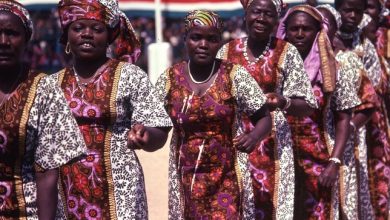
KENYA VIDEOS
Unforgettable adventures in kenya, kenya discover the magic, kenya minister of tourism najib balala skydiving, maasai and masai mara kenya, global travel news.
- Latest Travel News
- Previous page
ITE HCMC 2024 Positions Itself as Asia’s Premier Tourism Cooperation Event
Ho Chi Minh City, Vietnam, August 15, 2024 / TRAVELINDEX / The…
Announcing Brand Identity of 18th International Travel Expo Ho Chi Minh City 2024
Ho Chi Minh City, Vietnam, August 9, 2024 / TRAVELINDEX / With…
ITE HCMC 2024 Aims to Elevate Vietnam’s Tourism By Leveraging Sustainability
Ho Chi Minh City, Vietnam, July 25, 2024 / TRAVELINDEX / The…
Discover Profound Spiritual Growth in the Heart of Nepal
Are you a spiritual seeker navigating the labyrinth of midlife, yearning to…
Travel Guide Kenya
Book your individual trip , stress-free with local travel experts
Select Month
- roughguides.com
- Travel guide
- Itineraries
- Local Experts
- Travel Advice
- Accommodation
Plan your tailor-made trip with a local expert
Book securely with money-back guarantee
Travel stress-free with local assistance and 24/7 support
We really got to be "on vacation" and just take it all in, knowing that you had everything planned and organised.
Lapped by the Indian Ocean, straddling the equator, and with Mount Kenya rising above a magnificent landscape of forested hills, patchwork farms and wooded savanna, Kenya is a richly rewarding place to travel. The country’s dramatic geography has resulted in a great range of natural habitats, harbouring a huge variety of wildlife, while its history of migration and conquest has brought about a fascinating social panorama, which includes the Swahili city-states of the coast and the Maasai of the Rift Valley.
Where to go in Kenya
Elephants and the environment, kenya’s peoples, kenya’s wildlife websites, travel ideas for kenya, created by local experts.

Bush To Beach Safari
Explore Kenya's vast national parks such as Lake Nakuru, the famous Maasai Mara and the well-known 'red' elephants in the Tsavo National Park. After a few days of waking up early to spot wildlife, relax on the fine sandy beaches of Diani in the Mombasa area.

Best of Kenya & Tanzania
A fascinating trip across the Maasai Mara and the Serengeti and Ngorongoro Conservation Areas in Kenya and Tanzania. Learn more about the traditions and cultures of the Maasai and stare in awe at the wild roaming wildlife on your several game drives in different national parks.

Family Safari in Kenya
Take your (grand)children and embark on the adventure of a (family) lifetime: 7 days in Kenya, with up-close animal encounters, game drives to see the Big 5 and plenty of fun day activities.
Kenya’s world-famous national parks, tribal peoples and superb beaches lend the country an exotic image with magnetic appeal. Treating it as a succession of tourist sights, however, is not the most stimulating way to experience Kenya. If you get off the beaten track, you can enter the world inhabited by most Kenyans: a ceaselessly active scene of muddy farm tracks, corrugated-iron huts, tea shops and lodging houses, crammed buses and streets wandered by goats and children. Both on and off the tourist routes, you’ll find warmth and openness, and an abundance of superb scenery – rolling savanna dotted with Maasai herds and wild animals, high Kikuyu moorlands grazed by cattle and sheep, and dense forests full of monkeys and birdsong. Of course the country is not all postcard-perfect: Kenya’s role in fighting Al-Shabaab terrorists in Somalia has resulted in reprisal attacks, while if you start a conversation with any local you’ll soon find out about the country’s deep economic and social tensions.
The coast and major game parks are the most obvious targets. If you come to Kenya on an organized tour, you’re likely to have your time divided between these two attractions. Despite the impact of human population pressures, Kenya’s wildlife spectacle remains a compelling experience. The million-odd annual visitors are easily absorbed in such a large country, and there’s nothing to prevent you escaping the predictable tourist bottlenecks: even on an organized trip, you should not feel tied down.
Experiencing difficulties with planning? Get travel ideas with our Kenya itineraries .
The major national parks and reserves, watered by seasonal streams, are mostly located in savanna on the fringes of the highlands that take up much of the southwest quarter of the country. The vast majority of Kenyans live in these rugged hills, where the ridges are a mix of smallholdings and plantations. Through the heart of the highlands sprawls the Great Rift Valley, an archetypal East African scene of dry, thorn-tree savanna, splashed with lakes and studded by volcanoes.
The hills and grasslands on either side of the valley – Laikipia and the Mara conservancies, for example – are great walking country, as are the high forests and moors of the Central Highlands and Mount Kenya itself – a major target and a feasible climb if you’re reasonably fit and take your time.
Nairobi, at the southern edge of the highlands, is most often used just as a gateway, but the capital has plenty of diversions to occupy your time while arranging your travels and some very worthwhile natural and cultural attractions in its own right.
In the far west, towards Lake Victoria, lies gentler countryside, where you can travel for days without seeing another foreign visitor and immerse yourself in Kenyan life and culture. Beyond the rolling tea plantations of Kericho and the hot plains around the port of Kisumu lies the steep volcanic massif of Mount Elgon, astride the Ugandan border. The Kakamega Forest, with its unique wildlife, is nearby, and more than enough reason to strike out west.
In the north, the land is desert or semi-desert, broken only by the highlight of gigantic Lake Turkana in the northwest, almost unnaturally blue in the brown wilderness and one of the most spectacular and memorable of all African regions.
Kenya’s “upcountry” interior is separated from the Indian Ocean by the arid plains around Tsavo East National Park. Historically, these have formed a barrier that accounts in part for the distinctive culture around Mombasa and the coastal region. Here, the historical record, preserved in mosques, tombs and the ruins of ancient towns cut from the jungle, marks out the area’s Swahili civilization. An almost continuous coral reef runs along the length of the coast, beyond the white-sand beaches, protecting a shallow, safe lagoon from the Indian Ocean.
Discover more places in Kenya

- The North Travel Guide
- The Rift Valley Travel Guide
- Western Kenya Travel Guide
Local overpopulation of elephants is usually the result of old migration routes being cut off, forcing the elephants into reserves – like the Maasai Mara and its neighbouring conservancies – where their massive appetites can appear destructive. Adults may consume up to 170kg of plant material daily, so it’s estimated that several thousand tonnes of foliage pass through the Maasai Mara elephant population’s collective gut each month. This foliage destruction puts new life into the soil, however, as acacia seeds dunged by elephants are released when dung beetles tackle the football-sized droppings, breaking them into pellets and pulling them into their burrows where the seeds germinate. Elephants also dig up dried-out waterholes with their tusks, providing moisture for other animals. Elephants are architects of their environment , setting the inter-species agenda by knocking over trees, creating deadwood habitats for invertebrates and causing hundreds of other impacts, all of which are natural functions in a dynamic ecosystem. The jury is still out on how it works when the wildlife corridors are closed, or the parks fenced in. What is not in doubt is that their ivory is increasingly valuable and poaching is on the rise again. And when they are closely managed and secured in safe sanctuaries, the elephant populations quickly reach unsustainable levels. The Kenya Wildlife Service is getting proficient at translocating elephants, moving them around to balance the numbers.
• With an area of 580,400 square kilometres, Kenya is about two and a half times the size of the UK and nearly one and a half times the size of California. The population , which for many years had a growth rate higher than that of any other country, is now beginning to stabilize and currently stands at around 44 million.
• Kenya regained independence in 1963 after nearly eighty years of British occupation and colonial rule. The Republic of Kenya is a multiparty democracy with more than fifty registered political parties.
• With few mineral resources (though potentially viable oil reserves were confirmed recently), most of the foreign currency Kenya needs for vital imports is earned from coffee and tea exports, and tourism. Most Kenyans scrape a living through subsistence agriculture and remittances from one or two family members in paid employment.
• Kenyan society consists of a huge, impoverished underclass, a small but growing middle class and a tiny elite whose success often owes much to nepotism and bribery. Unbridled corruption percolates every corner of the country and affects every aspect of the economy.
• More positively, more than 93 percent of Kenyans have a mobile phone , an exceptionally high figure for a developing country. The mobile money service M-Pesa, allowing anyone with a mobile phone to send money to another phone user, is one of the most advanced in the world, and has transformed the lives of many poor Kenyans working far away from their families.
For Kenya’s forty-plus ethnic groups, the most important social marker is language and the best definition of a tribe (a term with no pejorative connotation) is people sharing a common first language. It’s not uncommon for people to speak three languages – their own, Swahili and English – or even four if they have mixed parentage.
The largest tribe, the Kikuyu , based in the central highlands, make up about 20 percent of the population; the Kalenjin from the Rift Valley 15 percent; the Luhya of western Kenya 14 percent; the Luo from the Nyanza region around Kisumu 12 percent; and the Kamba from east of Nairobi 11 percent. Many people from these big ethnic groups have had a largely Westernized orientation for two or three generations and their economic and political influence is considerable. Which isn’t to say you won’t come across highly educated and articulate people from every tribal background. “Tribes” have never been closed units and families often include members of different ethnic background, nowadays more than ever. Politics still tends to have an ethnic dimension, however: people retain a strong sense of whether they are locals or newcomers. Inter-tribal prejudice, although often regarded as taboo, or at best an excuse for humour, is still quite commonplace and occasionally becomes violent.
Smaller ethnic groups include the closely related Maasai and Samburu peoples, who make up little more than two percent of the population. Well known for their distinctive and still commonly worn traditional dress and associated with the national reserves named after them, they herd their animals across vast reaches of savanna and, when access to water demands it, drive them onto private land and even into the big towns. Many Turkana and some of the other remote northern groups also retain their traditional garb and rather tooled-up appearance, with spears and other weapons much in evidence.
Kenya has a large and diverse Asian population (perhaps more than 100,000 people), predominantly Punjabi- and Gujarati-speakers from northwest India and Pakistan, mostly based in the cities and larger towns. Descendants in part of the labourers who came to build the Uganda railway, they also include many whose ancestors arrived in its wake, to trade and set up businesses. There’s also a dispersed Christian Goan community, identified by their Portuguese surnames, and a diminishing Arabic community, largely on the coast.
Lastly, there are still an estimated 30,000 European residents – from British ex-servicemen to Italian aristocrats – and another 30,000 temporary expats. Some European Kenyans maintain a scaled-down version of the old farming and ranching life, and a few still hold senior civil service positions. Increasingly, however, the community is turning to the tourist industry for a more secure future.
East African Wildlife Society eawildlife.org . Influential Kenya-based group, centrally involved in the movement to ban the ivory trade. Publishes the excellent Swara magazine.
Ecotourism Society of Kenya ecotourismkenya.org . This local organization promotes sustainable tourism by awarding ratings to lodges, tented camps and tour operators.
Friends of Nairobi National Park fonnap.wordpress.com. Works to keep open the migration route into the park, and raise awareness about the remarkable environment on Nairobi’s doorstep.
Green Belt Movement greenbeltmovement.org . Grassroots conservation and women’s movement founded by the Nobel Peace Prize winner Wangari Maathai, who died in 2011.
Kenya Forests Working Group kenyaforests.org . Promotes sound forest management and conservation.
Nature Kenya naturekenya.org . The website of the East African Natural History Society organizes regular activities and has a good online newsletter.
Wildlife Direct wildlifedirect.org. Chaired by Richard Leakey, this is where conservation fundraising meets a network of conservationists, including more than 50 bloggers from the field in Kenya.
It's safe to say that Kenya is the safari capital of Africa. To maximize your experience, explore our guide to the best time to go on safari in Kenya .
Travel advice for Kenya
From travel safety to visa requirements, discover the best tips for visiting Kenya
- Crime and personal safety tips Kenya
- Culture and Etiquette in Kenya
- Eating and drinking in Kenya
- National Parks in Kenya
- Travel Tips Kenya for planning and on the go
- Shopping tips for Kenya
- Entertainment and sport
- How to get to Kenya
- Getting around Kenya: Transportation Tips
- Travel Health Kenya
- Sports and Outdoor activities in Kenya
- Best time to visit Kenya
- 10 days in Kenya — 5 travel itineraries
The Rough Guides to Kenya and related travel guides
In-depth, easy-to-use travel guides filled with expert advice.

Find even more inspiration for Kenya here

Planning your own trip? Prepare for your trip
Use Rough Guides' trusted partners for great rates
written by Rough Guides Editors
updated 03.06.2024
Ready to travel and discover Kenya?
Get support from our local experts for stress-free planning & worry-free travels.
- Travel advice
- Where to stay

Touropia Travel
Discover the World
17 Top Attractions & Places to Visit in Kenya
By Alex Schultz · Last updated on May 4, 2024
One of the best places to go on safari in the world, Kenya is renowned for its rich wildlife and innumerable nature reserves. While most people come to see the Big 5, pearly white beaches and historic Swahili settlements line its stunning coast.
Located in East Africa alongside the Indian Ocean, it has long been one of the most popular countries to visit on the continent. Incredibly diverse, its national parks encompass everything from mountains and deserts to wetlands, plains, and lakes. They host an abundance of wildlife with the Maasai Mara and its wildebeest migration being the most famous of the lot.
The wildlife safaris have been the top tourist attractions in Kenya for decades. Other things to do include trekking Mount Kenya, ballooning over the Masai Mara and snorkeling in Malindi on the Indian Ocean coast. This makes for a nice change after days spent looking for elephants, giraffes and lions.
17. Lake Naivasha
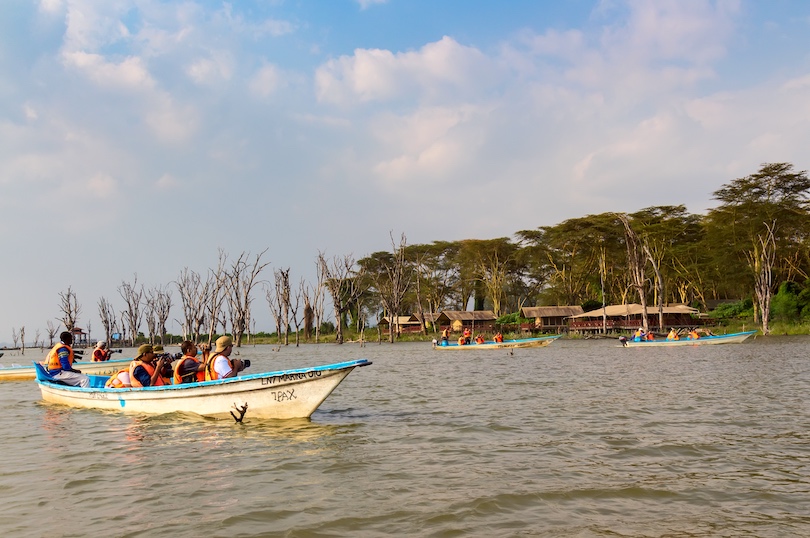
A lovely day trip destination or a quiet weekend away, Lake Naivasha lies only two hours’ drive from Nairobi. Although often overlooked in favor of the nearby Lake Nakuru and its famous flamingos, it too is known for its bountiful birdlife and beautiful scenery.
Part of the Great Rift Valley, the shallow freshwater lake’s name actually means ‘rough water’ in the Maasai language. Other than a sizeable population of hippos, it is home to around 400 bird species. These include not just egrets and African fish eagles but cormorants, pelicans, and kingfishers too. Big buffaloes and towering giraffes can also be spotted along its shores.
To see as many animals and birds as possible, lots of people take scenic boat trips out on the lake. You can also stay overnight at the comfy lodges that look out over its sparkling surface.
16. Karen Blixen Museum
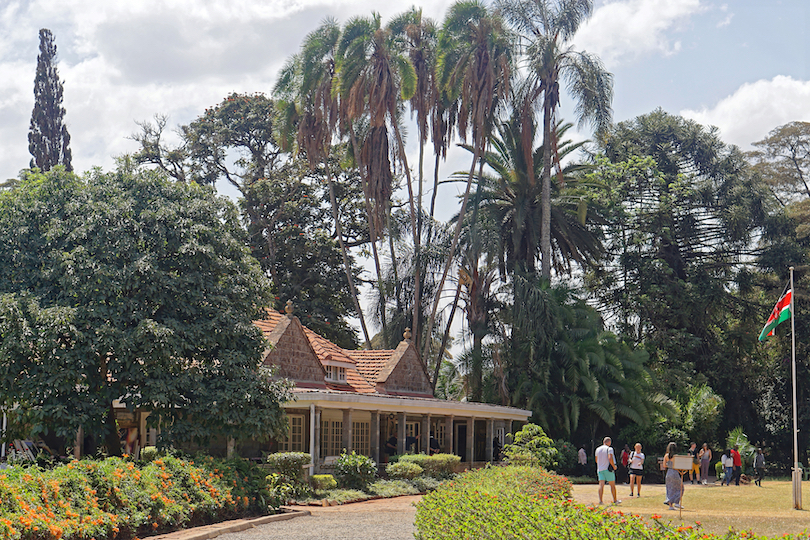
Lying on the southwestern outskirts of the capital, not far from Nairobi National Park, is the brilliant Karen Blixen Museum. Her former home provides an interesting look at the life of the Out of Africa author in Kenya.
From 1917 to 1931, the renowned Danish writer lived in a bungalow-style farmhouse at the foot of the Ngong Hills. Her famous memoir recounts what living on the coffee plantation was like. It also explores Kenya’s rich culture and colonial rule in British East Africa.
Now a historic house museum, its rooms are full of period pieces and original artifacts owned by the author. Surrounded by lush, green grounds, it makes for a nice break from the hustle and bustle of the centre of Nairobi.
15. Tsavo East National Park
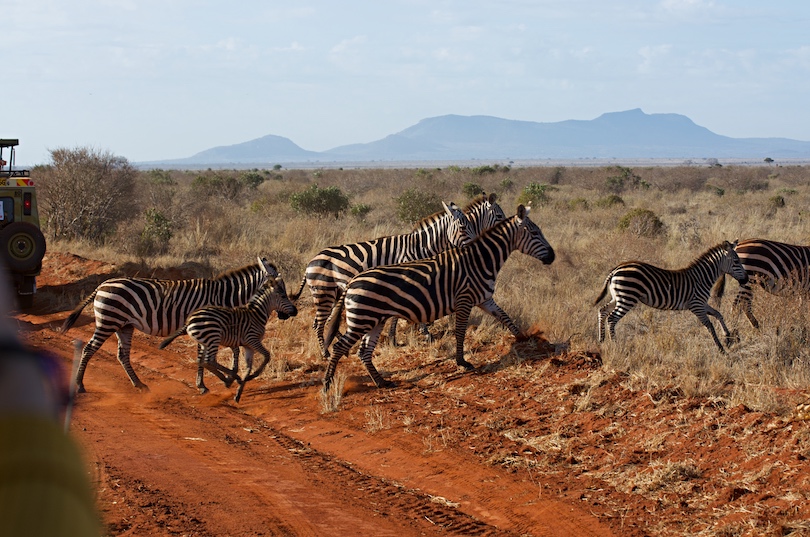
One of Kenya’s oldest and largest national parks, Tsavo East is situated in the southeast, on the way to the coast from Nairobi. A great choice if you’re wondering where to go on safari, it boasts loads of awesome wildlife.
Once the hunting grounds of the Waliangulu and Kamba tribes, its sprawling savanna and semi-arid grasslands have been protected since 1948. As well as the Big 5, you can also spy huge hippopotami and camouflaged crocodiles alongside the Galana River. Overhead, crowned cranes and sacred ibis flap about beneath the park’s bright blue skies.
Constantly in contact with other guides, your driver will somehow get you up close to every animal imaginable. Thanks to them, we saw a family of elephants enjoying a red dust bath right beside the jeep. Although often seen throughout the park, this scene was still one of our favorite memories from our time in Kenya.
14. Tsavo West National Park
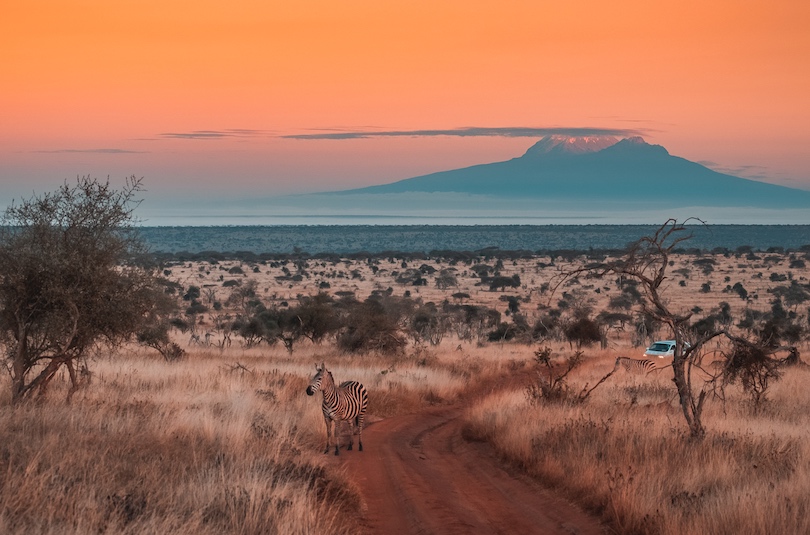
Much more mountainous and swampy than its nearby namesake, Tsavo West lies just across a river and the A109 from the neighboring national park. Due to its more varied scenery and specially protected rhino sanctuary, it is slightly more popular to visit.
Also named after the Tsavo River, its rugged reaches are dotted by dramatic black lava flows and volcanic cones. Some exciting rock climbing can also be had up its craggy cliff faces. Here too, you’ll find the marvelous Mzima Springs where you can see hippos, crocs, and turtles.
This time, the highlight of our safari was seeing an incredibly rare eastern black rhinoceros. It stopped in the middle of the road before staring at us for what seemed like an eternity before slowly plodding back into the bush.
13. Fort Jesus, Mombasa
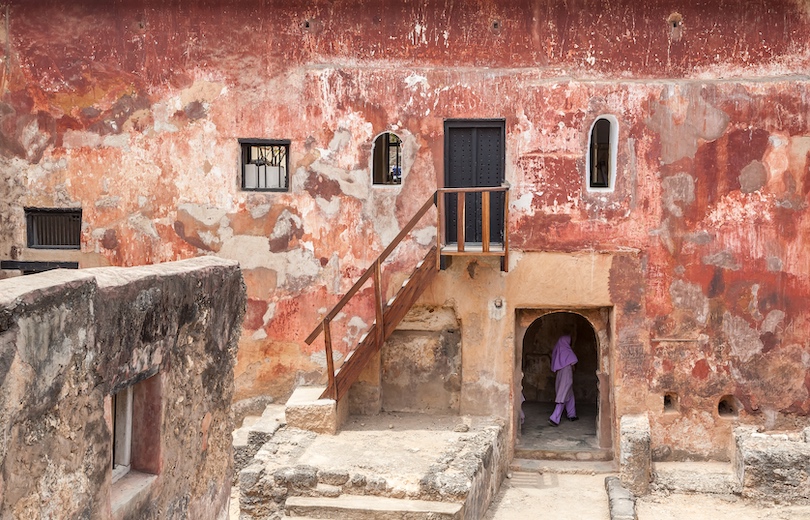
The coastal city’s main tourist attraction, the formidable Fort Jesus watches over the Old Port from Mombasa island. A fascinating place, it has some seriously impressive architecture and an extensive collection of artifacts for visitors to enjoy.
Built between 1593 and 1596, the crumbling old fort marks the first time a European power exerted its influence over trade in the Indian Ocean. An outstanding example of Portuguese Renaissance architecture, it is roughly square in shape with four bulwarks at its corners. Local Swahili people are thought however to have provided most of the labour, materials, and expert masonry techniques.
While we enjoyed seeing the fort and learning about its past, we preferred getting lost in the Old Town outside. Full of life, its traditional Swahili buildings house little local restaurants and souvenir shops selling masks, textiles, and jewellery.
12. Aberdare National Park
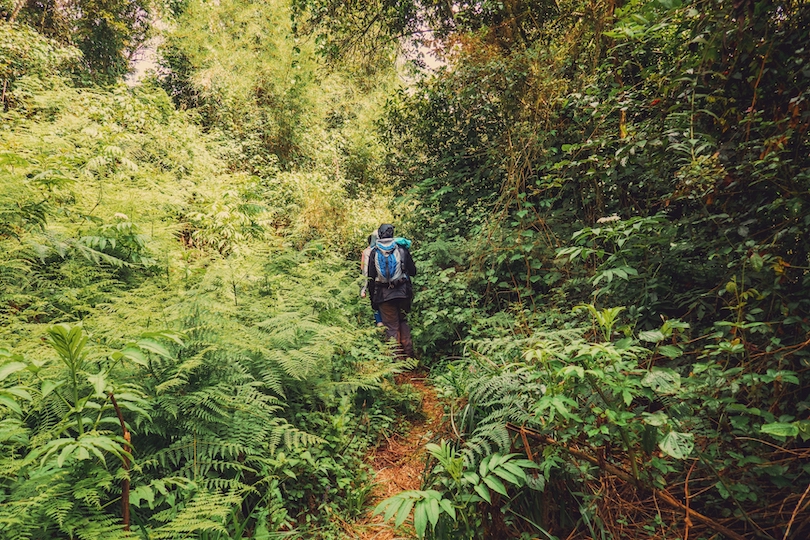
Unlike most of the country’s parks, Aberdare is more known for its scenic hikes and waterfalls than its abundant wildlife. Certain to delight nature lovers, it is nestled amongst the Central Highlands on the way from Nairobi to Nakuru.
Established back in 1950, it protects part of the Aberdare Mountains that range from 2,000 to 4,000 metres in height. Covering its vast valleys and the lower slopes of its prominent peaks are rivers, forests, and even some waterfalls. A large population of eastern black rhinos and elephants also live amongst these diverse landscapes.
Some of the best hikes are to Mount Satima’s summit or along the challenging yet rewarding Elephant Hills trail. Not to be missed are the stunning Chania and Karuru falls, both of which make for some epic photos and viewing hidden away amidst the verdant forest.
11. Diani Beach
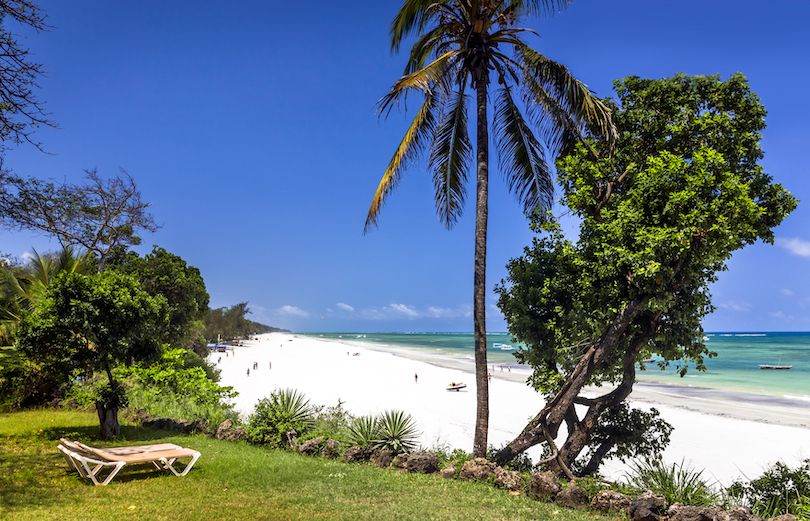
If after all the safaris and sightseeing you just want to relax and unwind, then the idyllic Diani Beach is definitely the place to go. Set just south of Mombasa, all its wide, white sands are a treat to lounge on lazily. Here you can also enjoy a wealth of fun watersports.
Stretching around seventeen kilometers in length, the relaxing resort area lies alongside the twinkling Indian Ocean. Dotted up and down the palm tree-fringed beach are countless luxury hotels and resorts. Many offer all-inclusive packages and can arrange safari trips for guests.
Besides being one of the best beaches we’ve been to (it really does look breathtaking), there are loads of things to do to try. Kite surfing and jet skiing are both super fun while scuba diving and snorkeling highlight its rich marine life. You can also take sightseeing cruises along the coast or quad-biking trips around the nearby villages.
10. Hell’s Gate National Park
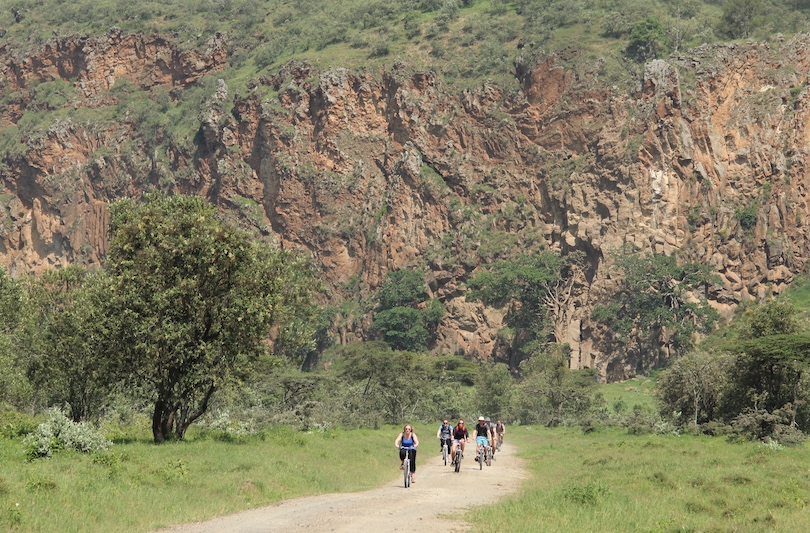
For those after an active holiday, Hell’s Gate National Park is a good bet thanks to its excellent hiking, biking, and rock climbing. Its relatively close proximity to Nairobi and cheaper entrance fees also mean that plenty of people head here.
Lying just to the south of Lake Navaisha, it is named after a narrow gap in the park’s colossal cliffs. Asides from the slender gorge’s ruddy red rocks, there are also a couple of long-extinct volcanoes to explore. Some of the most arresting formations to photo are those created long ago by cooling molten lava.
As very few predators reside within this part of the Great Rift Valley, many visitors hike or bike about the park. While visiting its hot springs and Maasai Cultural Centre, keep an eye out for the local wildlife. Other than African buffaloes and elands, you can sometimes see hyenas, baboons, and ostriches amidst the undergrowth.
9. Nairobi National Park
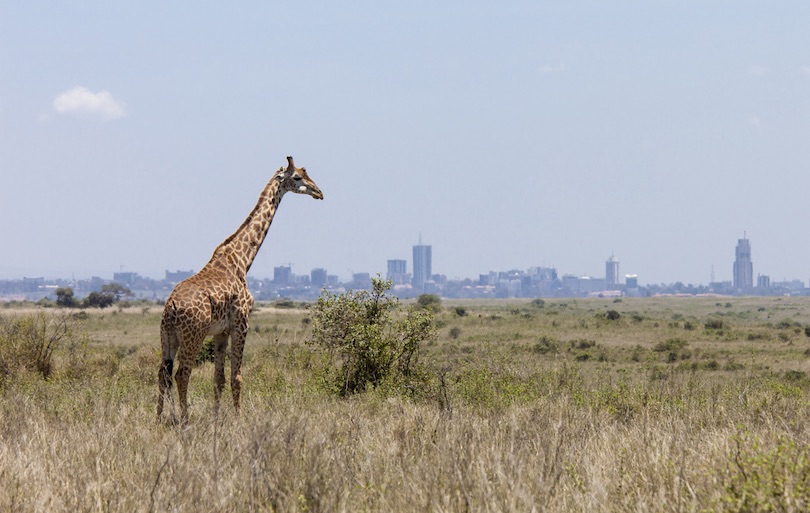
The only nature reserve of its kind in the world, Nairobi National Park literally lies right on the doorstep of the country’s capital. Seeing its skyline as you look at lions, elephants, and giraffes is a surreal feeling that needs to be experienced.
Set aside in the forties to protect the region’s dwindling wildlife, it mainly consists of endless open grass plains. Here and there though, you’ll find pockets of forests along rivers and small rocky gorges scattered about. Living in the park are everything from gazelles and cheetahs to crocodiles, jackals, and common eland.
While we did do several safaris in Kenya, we are still happy we went here. Its diverse wildlife and delightfully different views made the visit quite special. After all, there aren’t many cities in the world where wildebeest and zebra migrations take place almost right through it.
8. Lamu Island
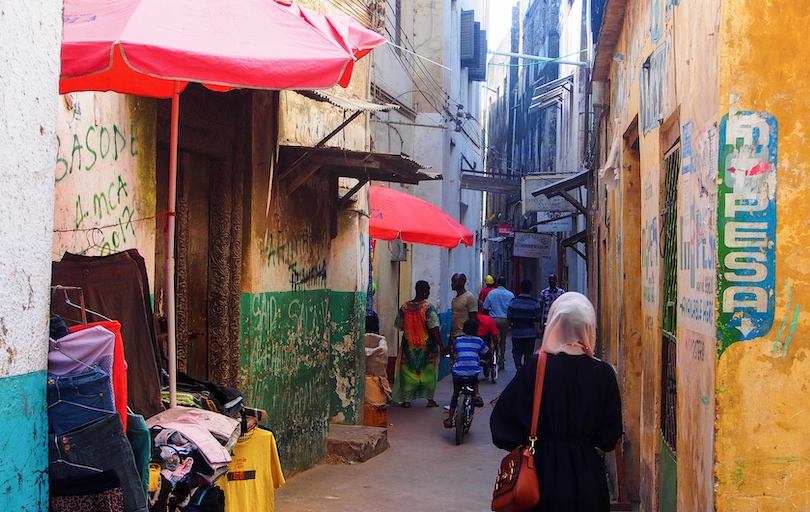
One of the best places in East Africa to experience traditional Swahili culture is the lovely little Lamu Island. Located along Kenya’s northeastern coastline, it is a very relaxing spot that feels like you’ve traveled back in time.
Part of the attractive archipelago of the same name, Lamu is the oldest continuously inhabited settlement in the nation. Founded in the twelfth century, the labyrinthe-like streets of its Old Town are lined by charming coral stone buildings and quiet inner courtyards.
More peaceful and better preserved than Zanzibar’s Stone Town, it is known for its intricately carved wooden doors and cute donkeys. After seeing its museum and fort, you can relax on its white sandy beaches or explore some other nearby villages. Many people also take tranquil dhow boat trips about the archipelago.
7. Mount Kenya
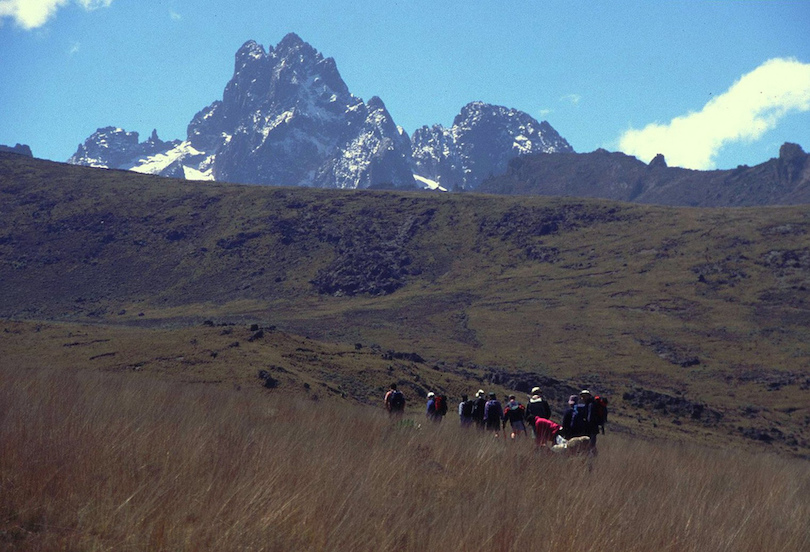
The second-highest peak in Africa after Kilimanjaro, Mount Kenya towers 5,199 meters above the plains, valleys, and forests below. Now protected as a national park, it generally takes four or five arduous days to reach its soaring summit. Climbing the summit is probably one of the most difficult and rewarding things to do in Kenya.
Formed around three million years ago, the enormous, extinct stratovolcano is actually where the country’s name came from. One of its main symbols and sights, its slopes are very heavily eroded while ice caps coat its upper reaches.
The mighty mount has three separate peaks for avid adventurers to summit with Batian being the loftiest of the lot. Although Nelion is the toughest of the three, Lenana’s unpredictableness can pose a problem. After braving the steep climb and challenging weather conditions though, spectacular views greet you at the top.
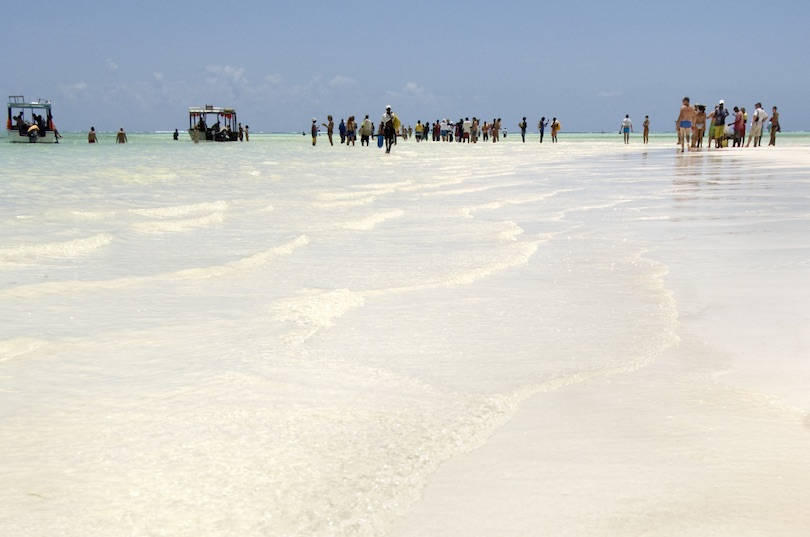
Another popular place to head if you’re after some sun, sea, and sand is Malindi. Located along the Indian Ocean, it has lots of fantastic beaches, hotels, and nature parks for you to stop by.
Long a hub for Italian tourists, its string of pearly white beaches is actually where Vasca da Gama landed in 1498. Still standing in the same spot overlooking the ocean is the coral pillar he erected all those years ago. For more historic sites, you can explore the Gede Ruins which protect the crumbling remains of a twelfth-century Swahili town.
Most holidaymakers however come to Malindi for its beaches. Bordered by twinkling turquoise waters, their sweeping white sands make for quite the sight. The ocean does sometimes turn a murky brown color though around the mouth of the Sabaki River.
5. Sheldrick Wildlife Trust
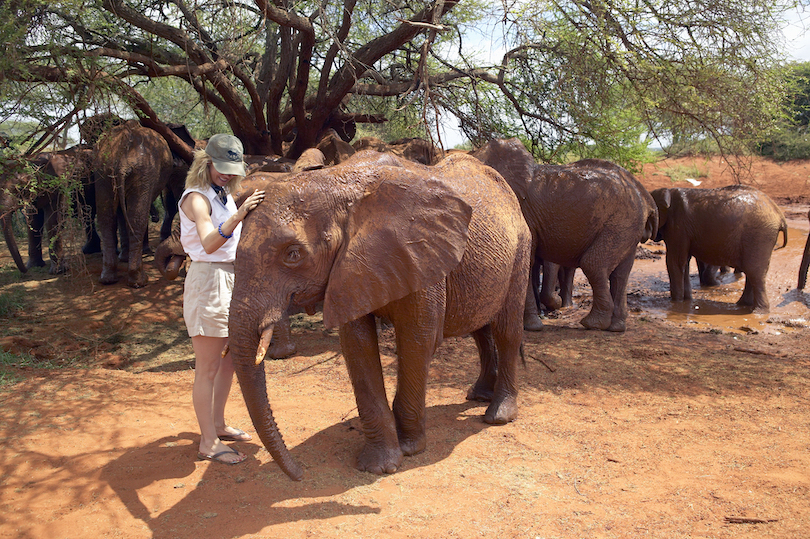
If you’re after an unforgettable (and adorable!) animal encounter, then you just have to visit the Sheldrick Wildlife Trust. At their sanctuary on the outskirts of Nairobi, you can watch baby elephants feed, play, and frolic about together.
Since being founded back in 1977, it has rescued and rehabilitated hundreds of orphaned and injured elephants. At their center, young ones are first hand-reared until the age of two or three by their keepers. Later on, they are sent to Tsavo East before eventually being released back into the wild.
Each day, a certain number of guests can visit the orphanage and see the elephants. As you can imagine, watching them play football and roll around in the mud is pretty much the cutest thing ever.
4. Lake Nakuru
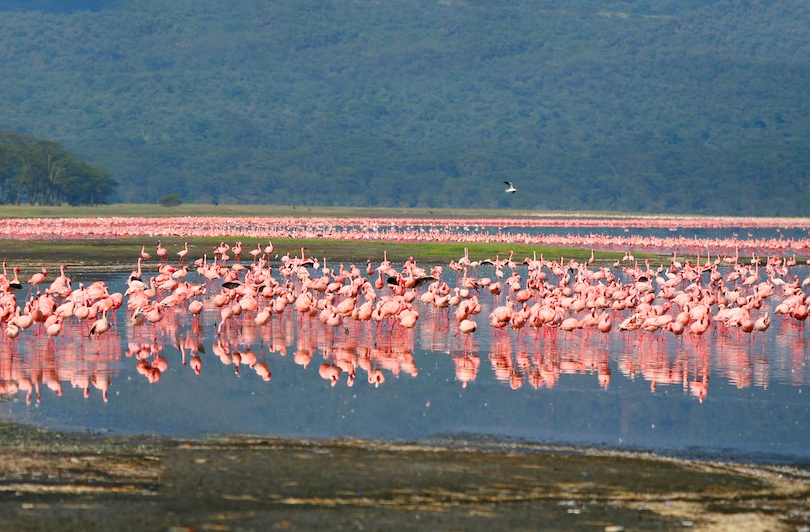
One of the most iconic sights in all of Africa is the vast flock of bright pink flamingos that live in Lake Nakuru. Instantly recognizable, they make for some fabulous photos with white rhinos and Rothschild’s giraffes also regularly spied nearby.
Stretching almost endlessly away into the distance, its reflective waters lie within the Great Rift Valley. Now a national park, it protects over 450 bird species alongside a handful of lions, cheetahs and leopards. At times, more than a million of the fantastic flamingos flock here due to its abundant algae.
While the rhinos and flamingos are the main attraction, there is plenty more to see along its scenic lakeshore. Zebra and waterbucks often water here while sizable pythons slowly slither their way about its dense woodlands.
3. Amboseli National Park
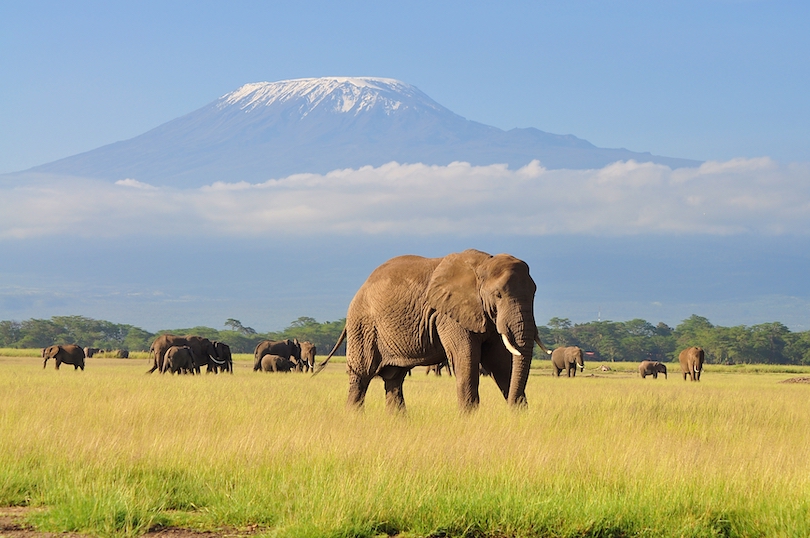
Thanks to its huge herds of elephants and ample wildlife, Amboseli National Park is routinely ranked among the best places to go on safari. Lying almost on the border with neighboring Tanzania, its savannas, woods, and wetlands really are a treat to explore.
Meaning ‘salty, dusty place’ in the Maa language, its unique habitats have been recognized as a nature park since 1908. While some parts are incredibly arid, the areas around its swamps almost create an oasis. Here life flourishes, with 1,600 free-ranging elephants reckoned to live in Amboseli at the last count.
Besides trying to spot the Big 5, you can learn all about local Maasai culture at the traditional Muteleu village nearby. On top of this, the silhouette of Mount Kilimanjaro blotting out the sky on the horizon only adds to the park’s already considerable appeal.
2. Samburu National Reserve
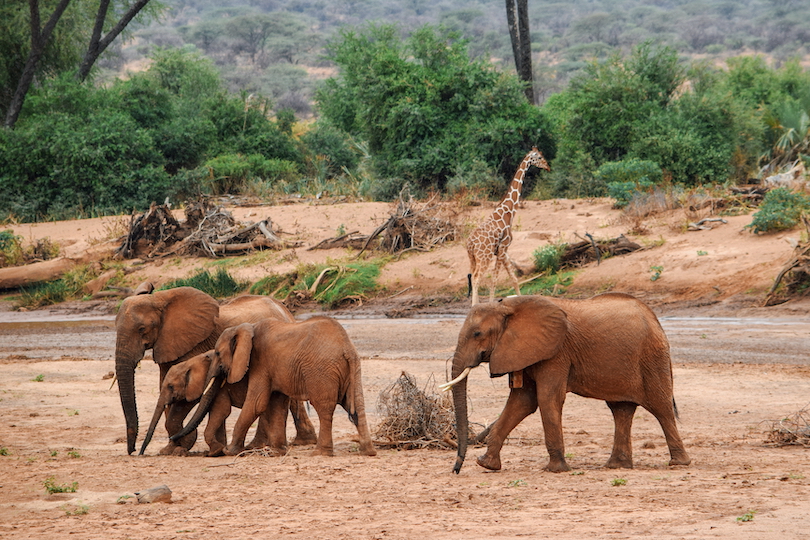
Even more wild and remote is the incredible Samburu National Reserve to the north of Mount Kenya. Due to the long distances from Nai, it sees much fewer visitors than other parks. This and its staggeringly diverse landscapes mean large numbers of lots of animals live here.
Located almost slap bang in the center of the country, it is mostly dry and dusty though rivers and forests can be found here and there. It is this wide variety of vegetation and the winding Ewaso Ngi’ro River that attract all the animals.
Asides from your standard lions, cheetahs, and leopards, the park is particularly known for its dry-country fauna. These include the East African oryx as well as generuk, Grevy’s zebras, and reticulated giraffes. While it takes some getting to, Samburu is well worth it for the different animals and scenery you see.
1. Masai Mara
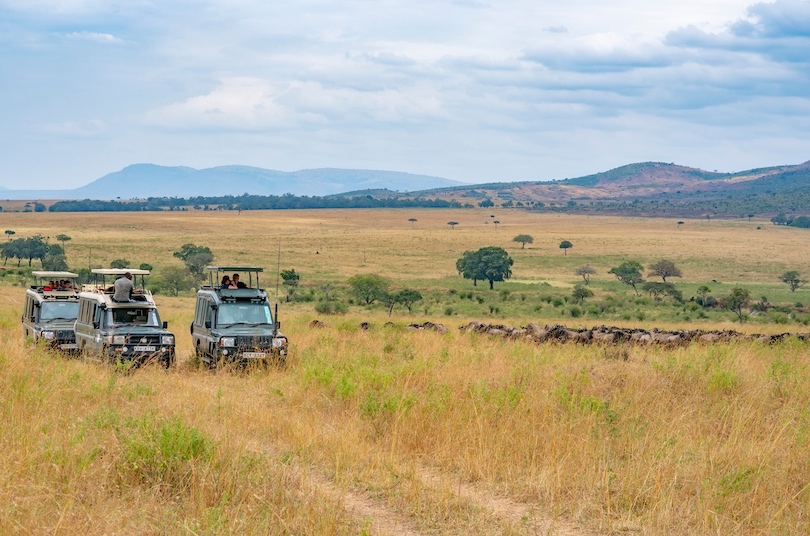
Renowned around the world, the Masai Mara is one of Kenya’s, and the continent’s, most famous safari destinations. The highlight of our time in East Africa, it boasts exceptional populations of lions and leopards, cheetahs, and elephants, alongside countless others.
Named in honor of the Maasai, its open grasslands and seasonal riverlets merge with the Serengeti to the south. Each year, the park’s plains host the Great Migration; an awe-inspiring natural phenomenon like no other. This is when millions of wildebeest, zebras, and gazelles migrate en masse as predators try to pick them off.
Seeing them all seemingly move as one is an unbelievable experience that will certainly leave you feeling small. Outside of this tumultuous time, visitors can still easily see all of the Big 5 roaming about the park. Crocs and hippos can also be spotted along the Mara and Talek rivers as long-crested eagles and African pygmy falcons swoop about overhead.
Map of Things to do in Kenya
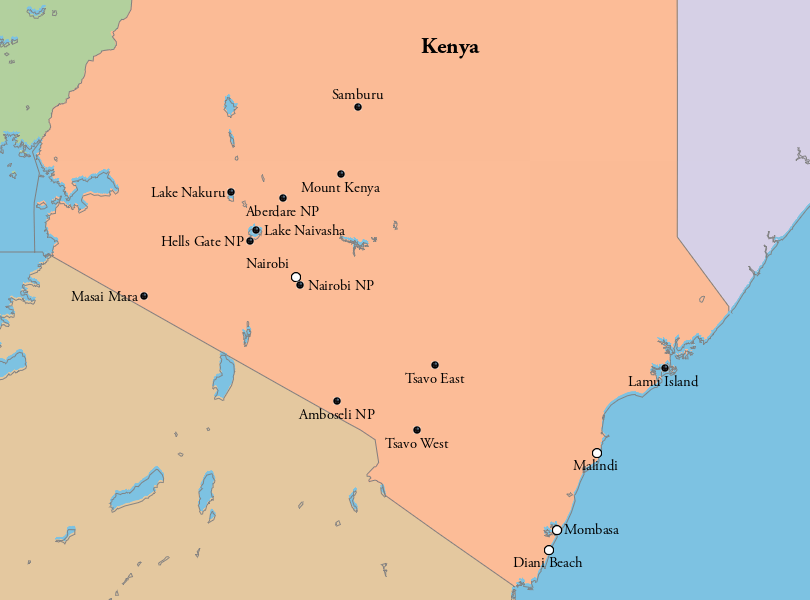
Share this post:
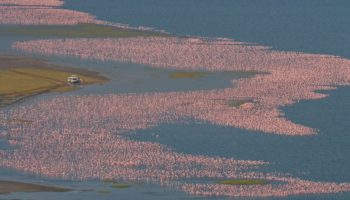

10 Most Beautiful National Parks in Kenya
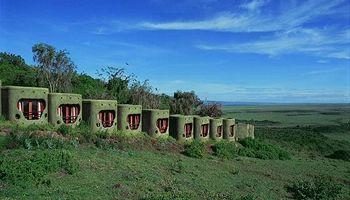
8 Amazing Kenya Safari Lodges and Camps
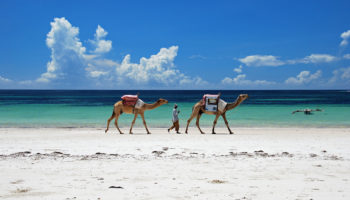
10 Best Beaches in Kenya
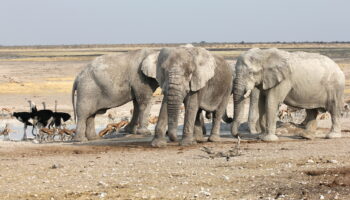
10 Most Famous Big Game Safari Destinations
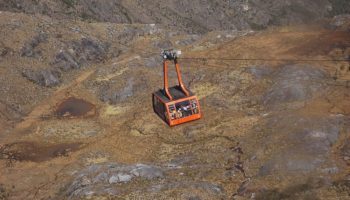
10 Top Tourist Attractions in Venezuela
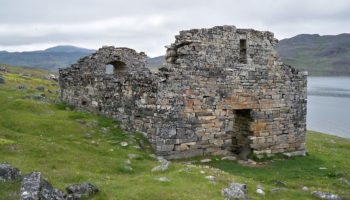
Discover the Hvalsey Church in Greenland

Top 10 Things to Do in Yerevan, Armenia
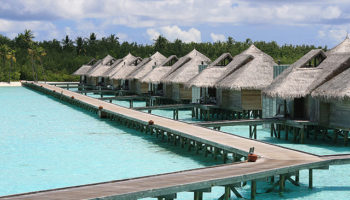
10 Best Luxury Resorts in the Maldives
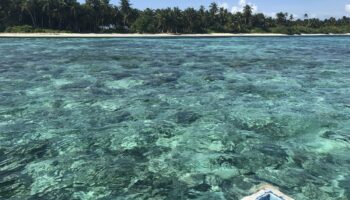
12 Best Things to Do in the Maldives
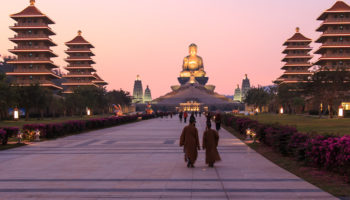
10 Best Places to Visit in Taiwan
Reader interactions.
October 30, 2014 at 5:50 pm
Kenya is absolutely an amazing country, its so beautiful, breathtaking and eccentric. What has made Kenya so special is the diverse wildlife, the beaches, the Kenyan Mountain and off course its pleasant weather. One important thing about Kenyan people I have found out, I think Kenyan people in general are humble and absolute genuine. God have blessed them all. I really love Kenya the country itself and the wonderful people. I’m actually studying Travel & Tourism. I’m really looking forward to see it. Hazjar Iraqi
October 7, 2014 at 10:31 pm
Kenya is indeed a spectacular and breathtaking place to visit in the Heart of Africa. We love you, and wish you a safe journey and good health as you plan for a visit. You will definitely experience the hospitality and warmth more than you expected. Proud to be a Kenyan Soldier. I love my country, and together we can make this world a better sustainable world. God Bless Kenya, God bless you!!
August 28, 2014 at 2:14 am
KENYA,is a great country and beautiful one having the most spetacular sceneries in the world and its peaceful nature ………..if you visit malindi ,maasai mara and mt kenya you may think you are in another universe of its own because you cant believe what you see….,i love kenya
August 21, 2014 at 6:02 am
Having been in the travel industry for about 8 yrs now,i believe Kenya is among the top travel destinations…it offers quite a variety of destinations from just day trips ,short trips and definately the long safaris which gives you an opportunity to learn much about kenya.
May 8, 2014 at 6:02 am
Kenya is like a mini earth.from snow in the mt.kenya peak,tropical forests in nyanza,vast deserts in the northern frontier..the list continues.am so proud to be kenyan
April 1, 2014 at 2:08 am
kenya is spetacular#studied tour guide and i love my job
October 18, 2023 at 1:22 am
It’s true that Kenya has most attractive animals and plants to see.
February 13, 2014 at 7:48 am
Kenya is the best country I’ve been to great fun.
November 22, 2013 at 3:43 am
i couldnt have been born in a better country.kenya is a beautiful place to be.am a proud kenyan
October 31, 2013 at 2:28 am
even though we are losing our wildlife at a devastating rate i have always been hopeful that the time has come for us to implement the new wildlife policies and save our wildlife hence continue enjoying the flow of the revenue. it is and it has been my prayer to conserve the nature of our nation
October 22, 2013 at 7:52 am
kenya is one of the best places to go in a lifetime, the variety of animals in their natural habitats and the beautiful beaches attract a lot of tourists from all over the world. Beholding the wildebeest migration in Masai mara and Serengeti should be in everybody’s to-do list
June 16, 2013 at 3:13 am
I am studying tour guiding and cannot wait to visit the fascinating wild Kenya.
June 4, 2013 at 6:51 am
I am studying tour guide I can’t wait to go on practice
May 14, 2013 at 9:44 pm
kenya is my country and i love it very much. my dream is to be become a tour guide to guide you to these beautiful resource in kenya
October 16, 2012 at 6:43 am
My friends and I are planning to come to kenya next year (2013), can’t wait.
September 20, 2012 at 5:03 am
Traveling to Kenya, especially the Masia Mara is one of my dreams. Earlier this year I was fortunate to travel most of Namibia. So, that dream realized. Next will definitely be Kenya. We must do these things before nothing is left.
Leave a Reply Cancel reply
Your email address will not be published. Required fields are marked *
This site uses Akismet to reduce spam. Learn how your comment data is processed .

Kenya Travel Guide
Your ultimate kenya travel guide, with tips, things to do, and best things to see in kenya. great for first-time and returning travelers..
I Dream of Africa. Travel in Kenya is exactly what one hopes for when going on safari in Africa.
The people are friendly, the scenery is spectacular and even though the country is progressing at a rapid pace, it still feels as if you have stepped back in time.
This Kenya travel guide will help you plan your next vacation.
Popular Guides
- Lake Nakuru
- Amboseli National Park
Our Highlight
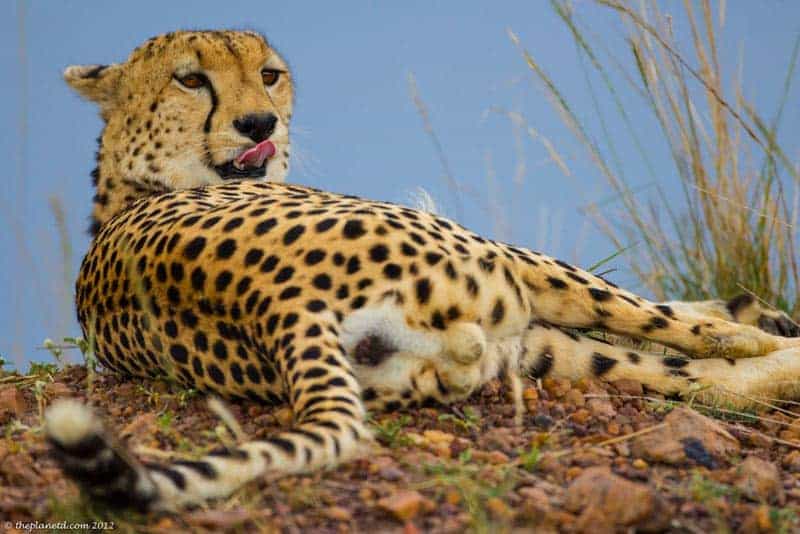
Table of contents
Table of Contents
Fast Facts about Kenya
- Kenyan power voltage is 240 V 50 Hz; Plug G.
- The Kenyan currency is the shilling and is around 86 shillings for 1 USD
- Virtually all banks in Kenya now have ATMs at most branches. Barclays Bank has easily the most reliable machines for international withdrawals. Standard Chartered and Kenya Commercial Bank ATMs also accept Visa but not the other major providers and are more likely to decline transactions.
- The best place to change money are a foreign exchange or “forex” bureaus as they do not charge commission. The exchange rates are published in the Daily Nation newspaper.
- The water is not potable ; drink only bottled water. Or bring a Steripen to purify your water and save the environment.
- SIM Cards: If you are planning on staying in Kenya for longer than a week, you can get a SIM Card Safaricom, Airtel and Telcom are good choices. You can get them in Nairobi or at the airport arrivals.
- Only select stores sell SIM cards but you can buy refill cards almost anywhere!
- SIM Cards : You can get a local sim card from Vodafone or Orange in Cairo. We suggest getting a SIM card at the airport when you arrive.
Things to See and Do in Kenya
- Champagne and a Hot Air Balloon – travel in style over the Masai Mara
- Go on a Safari in the Masai Mara – not only will you see all the big animals of Africa but you’ll witness some of the most beautiful sunsets on the planet.
- Visit Kenya’s Amboseli National Park – to see the magnificent population of elephants and witness the extraordinary view of Mount Kilimanjaro.
- Meet the Maasai People of Selenkay – a camp where travelers can learn about the Maasai culture while giving back to the community
- Fairmont The Norfolk: A Part of Kenyan History – stay at the Fairmont, a hotel that played a critical role in Kenyan history.
- Lake Nakuru – meaning “dust” or “dusty place” in the Maasai language, Lake Nakuru National Park is famous for wildlife including the thousands of flamingos nesting along the shores.
- Born Free Lives on in Kenya – In the 60s a movie was released named Born Free based on the lives of Joy and George Adamson. The Elsamere Home in Kenya still lives on and focuses specifically on conservation.
Kenya Travel Guides
Incredible Kenya Pictures an Amazing Visual Journey
- Hot Air Balloon Masai Mara – Flying High in Kenya
- Kenya Village Visit – Empowering People
Accommodation
Budget: You can find hostels in the range of 1,250-2,800 shillings per night. Stay in centrally located hostels and enjoy free Wi-Fi, security lockers, complimentary breakfast, hot showers, and your choice of a dorm or private room.
Mid-Range: For mid-range hotels, expect to pay around 2,800-11,500 shillings per night. Enjoy private rooms and suites with TVs and minibars, a fitness center, a pool, a hotel restaurant and bar, and free Wi-Fi.
High-End: Five-star hotels will cost around 13,000-53,000 shillings per night. These hotels come with room service, elegant hotel restaurants and polished bars, private suites with living rooms, spa services, a pool, and a sauna.
The cuisine of Kenya varies depending on the region. Popular staples include cereals like maize and millet, meats, and vegetables. Seafood is eaten frequently in coastal regions.
Ugali (cornmeal porridge) served with sukuma wiki (collard greens with onions and spices), kachumbari (tomato and onion salad), and maharagwe (bean stew) is a popular dish. Kenya has a variety of street vendors.
When out and about, look for Mahindi (grilled maize) or Mshikaki (skewered and grilled beef or goat meat on a stick). There are restaurants where you can try more Kenyan cuisine. In total, expect to pay around 2,550 shillings per day for food.
The Best Ways to Get Around Kenya
Getting to kenya:.
Flights: The main airport to fly into is Jomo Kenyatta International Airport, located 9 miles from Nairobi. Other airports include Moi International Airport (5.5 miles from downtown Mombasa) and Kisumu International Airport (5.5 miles from the city center). You can check for the best flights to Kenya on Skyscanner .
Transportation:
Buses : Buses are a cheap way to get around, especially in major areas like Nairobi. You can find buses for both shorter and longer distances. A typical fare for a local bus is 150 shillings, while going between cities can cost about 600 shillings. If you are traveling long-distance, it helps to book a ticket at least a day in advance.
Taxis: Taxis are another way to get around. A typical taxi ride will cost 400 shillings. Since they are usually not metered, make sure to agree on the price before starting your trip.
Car Rental: To rent a car, you need to be at least 23-25 years old and have a U.S. driver’s license. An International Driving Permit is recommended, but not required. Prices start at 6,000 shillings per day.
Uber: Uber is available throughout Kenya, especially in major cities. Little and Taxify are also popular services that operate like Uber.
When to go To Kenya
The best time to visit Kenya is during the dry season (end of June to October). During this time, zebras and wildebeests migrate, which makes for great wildlife viewing.
The dry season also means better weather for outdoor activities. March through May is the low season for tourists, which might bring better hotel rates and fewer crowds, but there is also heavy rainfall during this time, to the point where some camps will close down.
Where to Stay in Kenya
Nairobi Norfolk Hotel – beautiful historic hotel located in the heart of Nairobi by Fairmont. Hemingway stayed here. See our full review.
Hilton Nairobi: Stay right in the middle of downtown Nairobi at this four-star hotel. Right near the city square and Hilton Park, this hotel comes with soundproof rooms with flat-screen TVs and minibars, 24/7 room service, a rooftop pool, a ballroom, and three hotel restaurants.
CityBlue Creekside Hotel and Suites : When in Mombasa, come stay at this hotel. Just a quick drive to Nyali Beach, the hotel overlooks Tudor Creek and comes with numerous amenities, including private rooms with balconies and creek views (suites come with kitchenettes and living areas), complimentary breakfast, free airport shuttle, a hotel restaurant with a wine bar, a fitness center, and an outdoor pool.
Acacia Hotel Kisumu : Just a mile from Lwang’ni Beach and the Kenya Wildlife Impala Park, this four-star hotel is popular for a reason. See Lake Victoria from your hotel room (upgrade to a suite for whirlpool tubs in your room), swim in the pool, workout at the fitness center, relax on the terrace, or dine at the restaurant or café. If you want to explore more of Kenya, the Kisumu Railway Station is 10 minutes away by foot.
Check out our favorite booking platforms Booking.com , Tripadvisor and VRBO for the best deals on accommodation.
What to Pack for Kenya
Kenya is a tropical country is characterized by a warm climate that often changes to cold in the night-time, but does not fall below sub-zero.
When packing for Kenya it is important that you keep your lodgings and planned activities in mind.
Travelers should pack transitional clothing items that can carry you from day to night or from city sightseeing to safari adventures.
- Waterproof bag – the bag has two functions, protecting your stuff from the rain and also from the dust, especially if you’re travelling to drier regions.
- Footwear – especially important if going you are heading on a safari! Pack a pair of lightweight, durable, waterproof and comfortable shoes and also a pair of flip-flops or sandals that you can change into after a long day of sight-seeing.
- The protection basics – Travelers should stock up on the essentials: sunblock, mosquito/insect repellant containing DEET or a pyrethroid insecticide, sunglasses and a hat.
- Warm clothes – it does cool off at night, especially in Nairobi and the Highlands around July and August. Make sure to pack a light-weight sweater, cardigan or a pashmina scarf to keep you warm on those chilly nights.
- Cover up – in Muslim areas, including the coast, shorts, and t-shirts can be frowned upon. Try and dress modestly; wear trousers or knee-length skirts with tops that cover your shoulders.
See our packing tips: packing list for smart travel & How to Pack for a Safari
Kenya Travel Guide: Best Booking Resources
Whenever we travel to we make sure to start with these companies. We have tried a lot of different ones over the years and all of these have consistently proven to be the best when it comes to offering great prices.
We have used every one of these personally and continue to do so.
- Booking.com : This is our go site to when comparing prices for accommodation. It usually has the cheapest prices, especially in Europe and we love their interface. Not to mention you get free cancellation and you are guaranteed the best price.
- Trip Advisor : What we like about Trip Advisor is that we can look at all the reviews and then book our accommodation. TripAdvisor is where we go when we want to compare prices with multiple accommodation providers.
- VRBO : is the main search engine we use when we are looking for a home or apartment rental. It can sometimes be cheaper than hotels and it is the best way to stay in areas that offer a more local feel.
- Hostelworld : With one of the largest databases of hostels in the world, Hostelworld is the go-to site when you are looking for budget accommodation.
- Skyscanner : This is the first place we check for flights. It consistently comes back with the cheapest and best options. It allows us to compare a lot of airlines to get the best price.
- Rome 2 Rio : If you want to see how to get somewhere by plane, train, bus, ferry or car Rome2Rio lays it all out for you as well as related costs.I love how they show it all to you on a Google Map and it works offline.
- Get Your Guide: For all your day trip and city guide needs, we use Get Your Guide. It has the world’s largest collection of things to do with more than 30,000 activities in 7500 destinations.
- World Nomads Insurance: When traveling to Italy you should always have travel insurance. We have found the best bang for your buck is by far World Nomads.
Kenya Travel Guide: Related Articles
To browse all our articles and guides about Kenya click here.
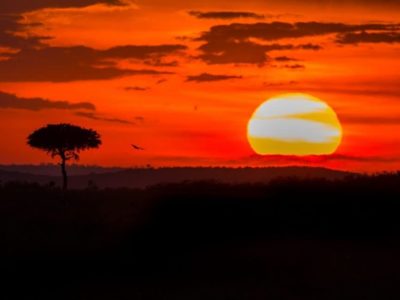
Kenya Safari – The Masai Mara Experience
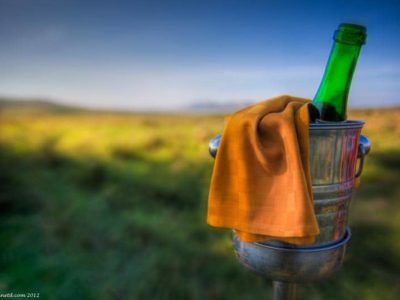
Hot Air Balloon Masai Mara – Flying High in Kenya
- Group Enquiry? NEW
Places to Visit in Kenya
- Places To Visit
Kenya Tourist Places
Here are some best places to visit in kenya:.
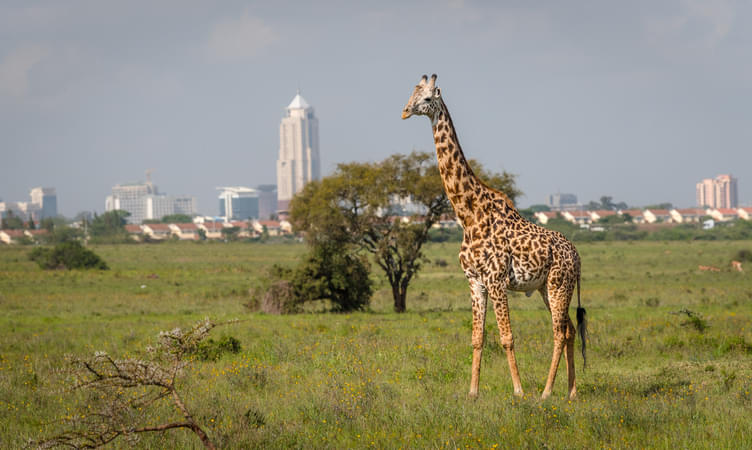
Tourist places in Nairobi that are worth visiting are National Museum, Railway Museum, Giraffe Centre, Karen Blixen, Karura Forest, David Sheldrick Trust Elephant Orphan Centre, Ngong Hills, Blue Sky Tours in Diamond Plaza, Nairobi Arboretum, Panari Sky Centre, Bomas of Kenya, Uhuru Garden, GP Karting, Village Market, Mamba Village, Paintball Fury Limited, Maasai Ostrich Farm, Paradise Lost, August Memorial Park, Kenya National Archives, KICC, Art Centres and Nairobi National Park. Kenya’s largest city and capital, Nairobi implores diversity in romance and puts forward exalted adventure. The city transformed from a meek camp for the railway employees in the year 1899 to the capital named British East Africa by the year 1907. Today, the rich retrospective history and tribal culture and lifestyle are brought to life through its excellent and knowledgeable museums. In particular, the museum named Karen Blixen Museum is one of the biggest hits – not only the African fans come to praise and appreciate the museum but also people from all over the world visit the museum to view the namesake Danish author who with drudgeries toiled on the coffee farmstead in the midst of the beautiful Ngong Hills. Even in such a scampering city like Nairobi, wildlife is a colossal draw. Being a cosmopolitan capital, Nairobi is the only city in the globe that brags a safari park within its frontiers.
The travelers can relish a classic African wildlife escapade at the Nairobi National Park which is a fifteen-minute jaunt from the skyscrapers of the megalopolis. Animals like buffalo, giraffe, rhinoceros, zebra, cheetah, lion and wildebeest meander under the sun-soaked grassy plain in the tropical or subtropical region neighboring meager trees. Here animal lovers too get a chance to clasp, cuddle and embrace the baby elephants and yoke with the giraffes at the spectacular animal sanctuary located nearby. However, with a fabulous and spectacular national park located at the doorstep of the wildlife centric charismatic attractions, Nairobi maddens on, jars and counterpoints on the beautiful and glorious natural beauty. The polarising outlook and character of Nairobi assure rapturing ecstasy to the city. Also, the gateway to the world-class and popular Kenya’s safari parks, Nairobi attracts gripping seekers of adventure for over a century.

Samburu County is a game reserve situated on the banks of River Ewaso Ng’iro, in the former Rift Valley province, in northern Kenya. It stretches from the south of Lake Turkana to River Ewaso Ng’iro in the north. The beauty of Samburu County lies primarily in its two picturesque mountains, namely Ololokwe and Koigotor. Since the River Ewaso Ng’iro flows through the reserve, this area thrives with a variety of wild animals and greenery that consists of vegetation such as thorn trees, riverine forests, acacia trees and lush green grasslands. The major tourist attractions in Samburu County are the Shaba National Reserve, which is the home to the elephant, antelope, leopard, lion, zebra, oryx, monkey, buffalo and giraffes. The Reteti Elephant Sanctuary is the best place to watch elephant babies thrive in their natural environment. Some other attractions are the Walk with Maa Tours and Safaris, Turkana Safaris and the Elephant Watch camp and Safaris, etc. There are several interesting activities that you can do when you are in Samburu. This includes overnight tours, multi-day tours, hiking, nature and wildlife tours, rock climbing, safaris, eco-tours, sporting events and much more that you can enjoy with your loved ones. The weather is generally hot and dry with much cooler nights. The temperature varies between 34 degrees Celsius during the day to 15 degrees Celsius during the night, which makes it relatively pleasant throughout the year and ideal for travelling.
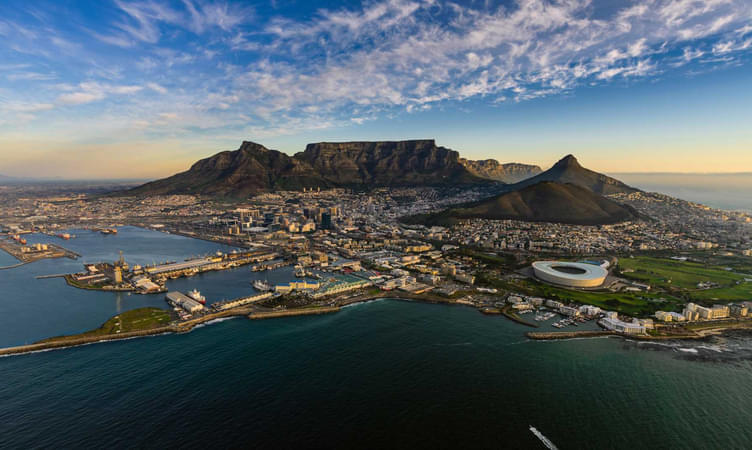
Best of South Africa

One important thing that you need to know about Nakuru is that it lies in vicinity to the most prominent destinations of the world including Kenya’s capital Nairobi and Masai Mara. In addition to this, the attractive district is also home to the Menangai Crater which is the second largest volcanic crater of the world.
Speed through Nakuru on your way to the lakes and you might be astonished as to why anyone would wish to stay here? On the first impression, the fourth largest city of Kenya is provincial and grim that does not have much to offer besides an agreeable refuel. However, you must stick around a little longer and be assured to fall in love with it.
Nakuru is a burgeoning city that is fast evolving. Over the years, it has been extending around the edges in order to adopt some of the superior aspects of Nairobi bereft of the crime, stress and the traffic.
If you don’t wish to fork out to overnight at Nakuru Lake, the city definitely makes a great base for exploration of the parks and surrounds. Since, the weather in Nakuru is favourable throughout, tourists can plan a visit any time of the year.
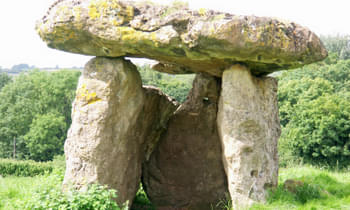
Eldoret is one of the fastest growing towns of Kenya. Nestled south of the Cherangani Hills in the verdant landscape, it is one of African paradises where everything you see has the touch of natural beauty still unadulterated by the intruding modernity. Being the bureaucratic center of Uasin Gishu District of the Rift Valley Province, makes it an even more preferable place as you can find modern amenities, lodgings and more to ensure that your stay is more worthwhile.
Presently, Eldoret is a thriving service town sprawling Kenya Uganda highway. It is also the principal economic hub of the western Kenya but the travellers only have a little to see and even less to do here. One striking highlight however is the Doinyo Lessos Creameries Cheese Factory where you can stock up 20 different varieties of cheese.
The name of the town comes from Maasai word ‘eldore’ which means stony river. You can also spot an exact parallel in the very source of this inspiration, River Sosiani. The cultural influences present are variable. After all the, Sirikwa, Nandi and Maasai people have called this place home over a period of offering times.
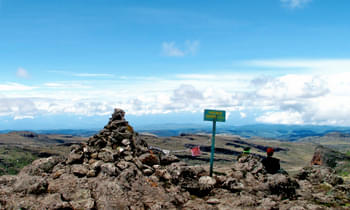
Best of Africa

Kakamega is a town that is located in the western Kenya. It lies about 30 km north of the Equator. The town is densely population and is the headquarters of the Kakamega County.
Located 50 km north of Kisumu that is the third largest city of Kenya as well as a port city lying on the Lake Victoria, the average elevation of Kakamega is 1,535 metres.
Kakamega county is the 2nd most populous county after Nairobi. It has 9 constituencies in totality – ikolomani, Matungu, Lugari, Butere, Khwisero, Mumias East, Malava, Shinyalu and Lurambi, all of which have a flavour that deserves to be experienced and felt.
The town was so named because the world Kakamega translates (in Kiluhyah which is a local dialect here) roughly to pinch. This is used to describe how the colonists of Europe would eat their staple food, ugail.
To be true, there is no certain reason as to why you should stay in this agricultural town however if you come here late in the day, Kakamega can be a convenient place to sleep over and stock up some supplies before you head to the tourist attractions as well as nearby attractions of the Kakamega.
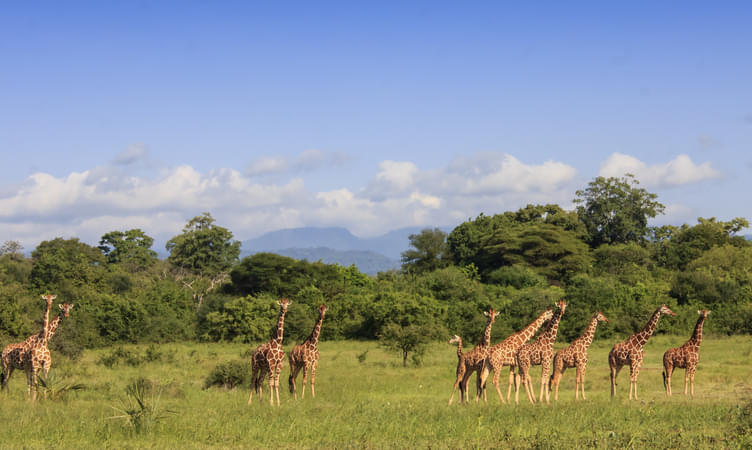
Meru is a city in the Meru County of Kenya. It is situated in the Eastern Highlands of Kenya and serves as the headquarters of Meru County. Located at an elevation, Meru is a thriving urban centre that is also home to several rivers, mountains and other natural elements. The beauty of Meru is highlighted with thirteen rivers and many mountain-fed streams spread all over the terrain. The rivers are home to crocodiles and hippos and numerous species of fishes and marine animals. Lush green vegetations and woodlands on the slopes of the Nyambeni Mountain Range are some of the most attractive natural features of this city. Some of the popular tourist attractions are the famous parks such as the Lolldaiga Main Gate, Mount Kenya National Park, Ngare Ngare Forest, Buffalo Springs National Reserve and Mount Kenya Wildlife Conservancy – which is also a zoo. You can also visit the campgrounds of Samburu Trails. Meru has a unique and distinctive cuisine that you can sample in popular eateries such as the. Royal Prince, a restaurant and a bar serving delicious fried delicacies. Another popular place that is frequented by tourists and locals alike is the Legends Restaurant, which serves some delicious local dishes and snacks like beef stew with ugali and samosas. Other attractions include the Nakumatt Supermarket where you can buy souvenirs from your tour and the famous Meru National Museum where you can get an insight into local history. Meru experiences dry, hot and arid weather conditions throughout the year. The temperatures remain fairly the same all year round. The average temperature ranges from 32 degrees Celsius during the day and 17 degrees Celsius during the night.

Best of Nairobi

Mombasa is situated in south-east Kenya along the Indian Ocean. It is a beautiful coastal city that is known as the blue and white city. It is also the oldest city in the country, with a rich and vibrant cultural history. The enthralling city of Mombasa is known for its exceptional natural beauty. This city is famous for its pristine beaches, turquoise blue sea, coral reefs and thick vegetation of lush green palms. The rainforests are home to a large number of magnificent birds and animals, native to Africa. While exploring the city of Mombasa, you must visit the amazing Diani Beach, the Haller Park, the Shimba Hills National Reserve, the Nyali Beach, Mombasa Island, Mwaluganje Elephant Sanctuary and the famous Mombasa Marine National Park, which are some of the most popular tourist attractions in the city. Apart from the tourist attractions and natural beauty, you can also indulge in adventure activities in Mombasa including an illuminating full-day tour of Mombasa, a 2 -Day Safari in Taita Hills from Mombasa, exploring the Tsavo National Park from Mombasa, climbing Mount Kenya, infinite treks, hikes, safaris and more. Since Kenya primarily experiences a tropical climate, the weather in Mombasa generally remains hot and humid throughout the year. The summers are hot with occasional rain and the winters are comparatively cooler, windy and dry with clear skies.
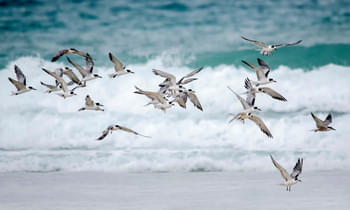
Traversing three hours west of Nairobi, this crumbling provincial town which is also the capital of the Mara region. It is the final proper centre prior to the vast grasslands of the Masai Mara. It is a surprising and friendly hassle free place that offers few travellers with a reason to stop and unwind. A lot of people roll on in, browse the curio shops when the driver refuels before you begin rolling on out again.
Situated west of Nairobi, it has very well been capable of supporting the economy of Kenya in the south west of the country along the Great Rift Valley. It is the district capital of the Narok County which also stands as the principal centre of commerce in the district. With a population of some 40,000 people that largely comprises of Maasai people, Narok is still as pristine as ever.
The Maasai, natives of the Narok district regard Narok as the Enkare Narok which has been named after the river which passes through the Narok town. It is a beautifully town that definitely deserves a visit when you have taken a trip to Kenya.
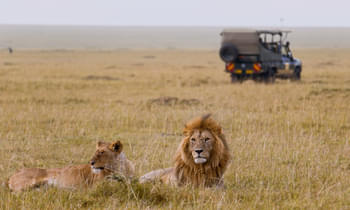
Best of Zambia
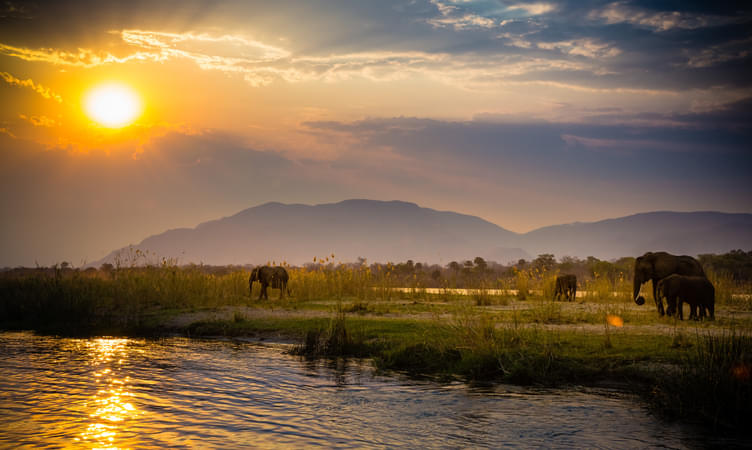
Thika is indeed one of the most discernible names to have emerged from the colonial Kenya all accredited to the articulate memoir which is Elspeth Huxley’s, ‘The Flame Trees of Thika.’ These days, in the growing modern city, you’ll actually be hard pressed to locate a tree let alone a flame tree. However, you still have an opportunity to indulge in the tiny nostalgia before you finally get back on the highway and continue further on the way.
The two children of the Aberdare Range, Thika and Chania finally unite 2 km north of the town where they plunge over a rocky, tree-lined cliff. This scene is elegantly appreciated from the porch of the Blue Post Hotel with a book in one hand and a stiff drink in the other.
With its history that outdates the town itself, the Blue Post still withholds a faint aroma of the colonial for those who wish to linger on here overnight. Undoubtedly, it was the principal location opposite the waterfalls of Thika which used to attract its original proprietors in the year 1908. At present, the grounds along with the children’s play area attract a number of Kenyan couple who intent on tying a knot in their polyester glory. When done with Thika, you can also visit the nearby destinations including Nyeri, Sagana, Embu and Nairobi.

Best of Zimbabwe
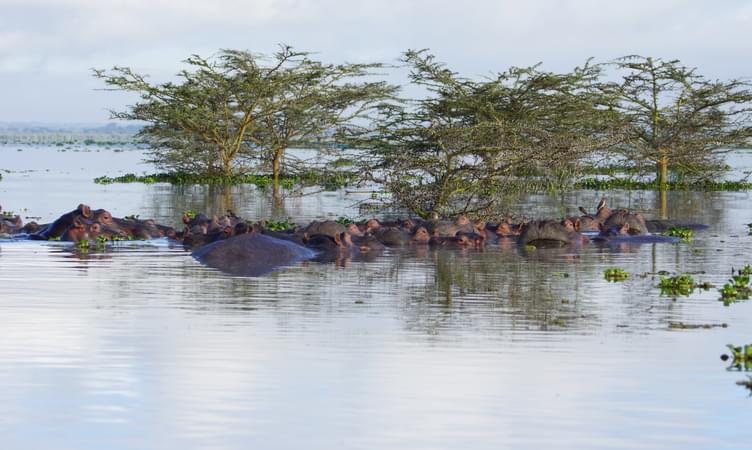
Kitale is a beautiful agricultural town that is located in the Western Kenya. It lies some 380 kilometres from Nairobi which is the capital of Kenya. The town lies between Mount Elgon and Cherengani Hills. The significant cash crops which are grown in Kitale include seed maize, sunflower, Pyrethrum, tea, seed beans and coffee.
Kitale is an administrative center of the Trans Nzoia District. It lies in the Rift Valley Province. Founded by the while settlers in the year 1908, Kitale is one of most prominent attractions in Africa. A branch line of the Uganda Railway leading you to the town from the Eldoret reached the town in the year 1926 with an object of promoting growth in the town.
Agriculturally rich, Kitale is a friendly market town that has a couple of interesting museums along with a bustling market. Shopping indeed is one of the principal activity to be enjoyed here. This market makes for an ideal base when you wish to explore the Saiwa Swamp National Parks and Mt Elgon. Kitale also serves as a quintessential take off point for tourists who wish to take a trip up to the western side of the Lake Turkana.
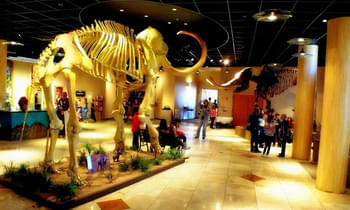
Best of Namibia
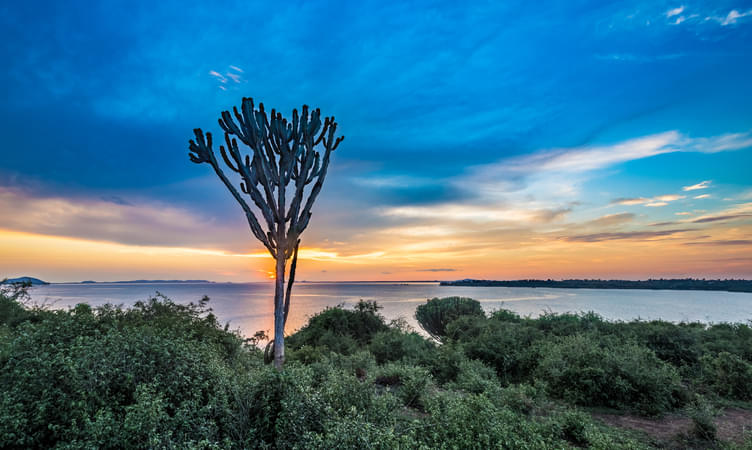
Kisumu is nestled on the sloping shore Winam Gulf of the Lake Victoria. It may be the third largest town of Kenya but its relaxed atmosphere is way different from that of Mombasa and Nairobi. Until the year 1977, the port happened to be one of busiest in Kenya. In the same year because of the political squabbling the port sat virtually idle for some 2 decades. Post that there was a decline set in which led to the collapse of the East African Community. The EAC was initially established by Uganda, Kenya and Tanzania so as to come up with a common market within this region. Recently there has been an increase in the cooperation as well as the revival of the EAC that also includes Burundi and Rwanda. This in 2000 has also helped establish Kisumu as one international shipment point for the products of petroleum. Surprisingly the lake doesn’t play any part in this. So, despite the lake having been the life and blood for the inception of the Kisumu, the city still rests with its back to the water. None the less, the fortune of Kisumu is on a rise once again. This has led to a reduction in the impact of the water hyacinth. Hopefully, in the years to come Lake Victoria will again begin contributing to the economy of the Kisumu. So, play an active role in boosting the economy of Kisumu by making a visit to the town.
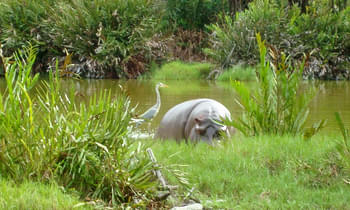
Other Attractions
Mount kenya national park.
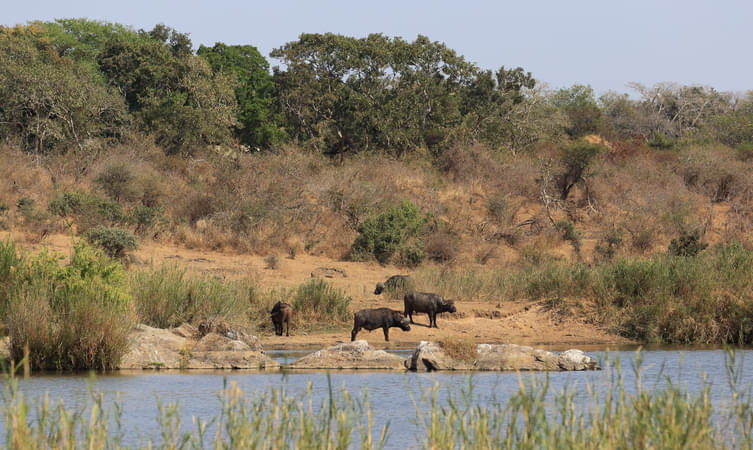
Mount Kenya National Park and Reserve is a UNESCO World Heritage Site in Kenya, East Africa. It boasts diverse ecosystems, including montane forest, alpine moorlands, and glaciers. Its highest peak, Batian, rises to 5,199 meters, offering breathtaking vistas. The park is a haven for diverse wildlife, including elephants, buffalo, and endangered species like the bongo. It's a hiker's paradise, with challenging trails attracting adventurers worldwide.
Maasai Mara National Reserve
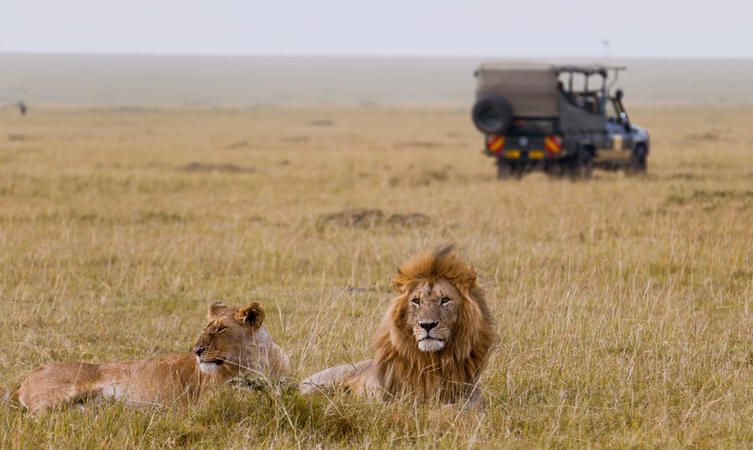
Maasai Mara is one of the most incredible game reserve of the world. Nestled on the border of Tanzania, Mara is the northern extension of the Serengeti. It makes for the wildlife corridor between the two countries Tanzania and Kenya.
Giraffe Manor
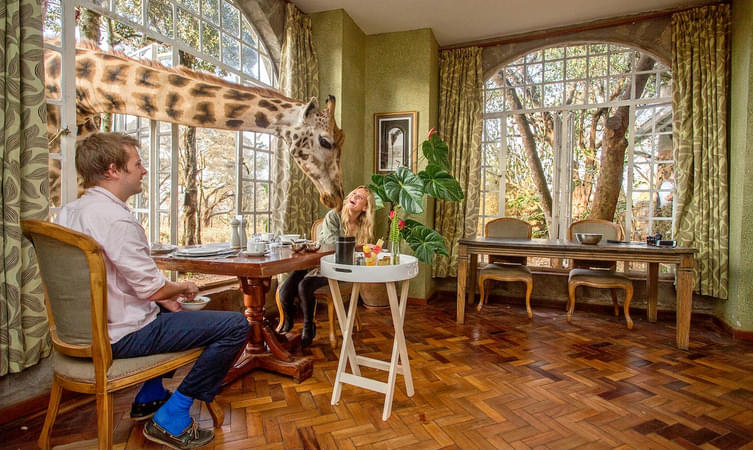
Amboseli National Park

Lake Victoria
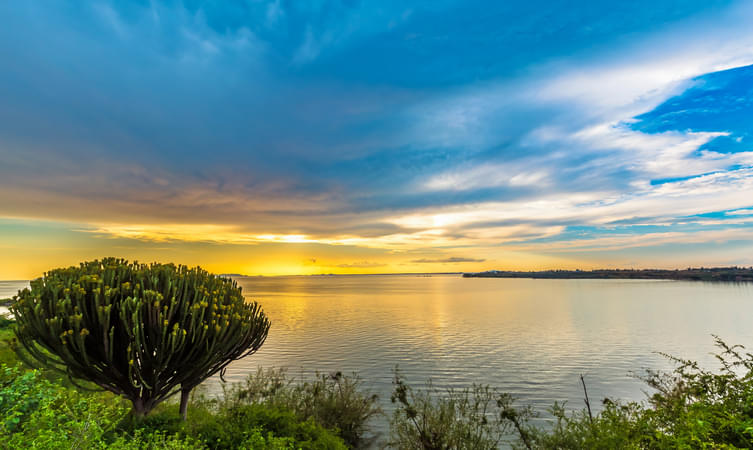
Lake Naivasha
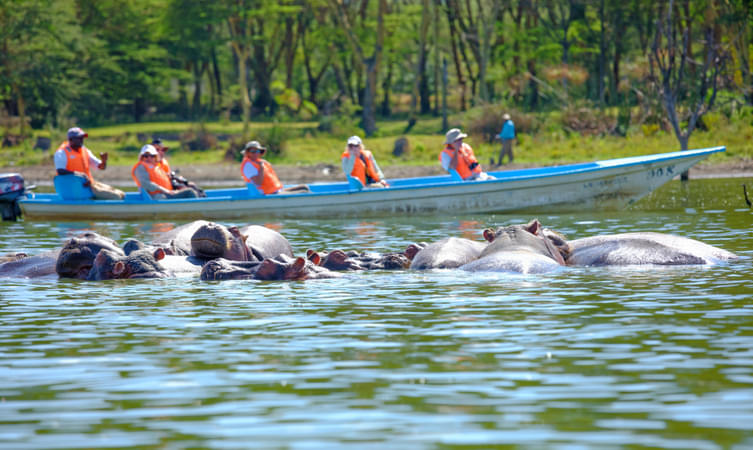
Samburu National Reserve
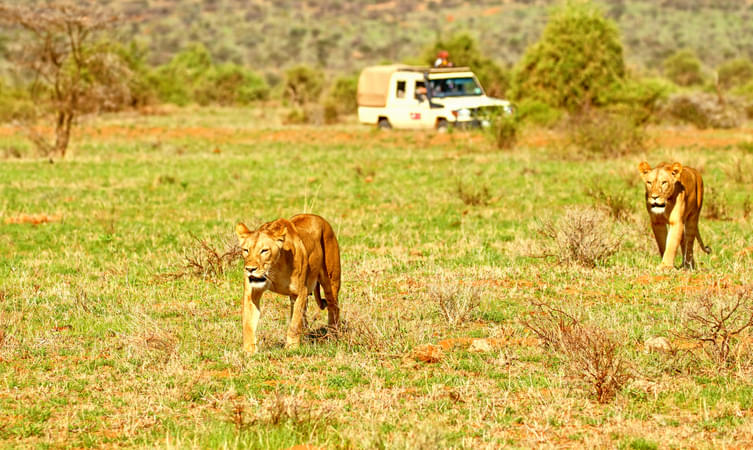
Diani Beach
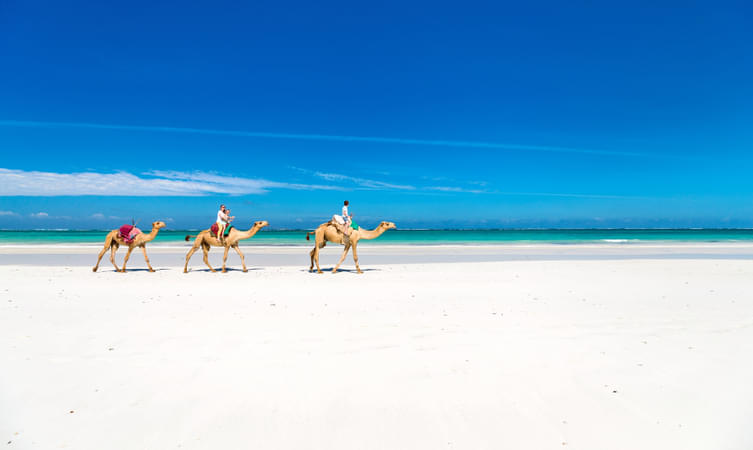
The Great Rift Valley
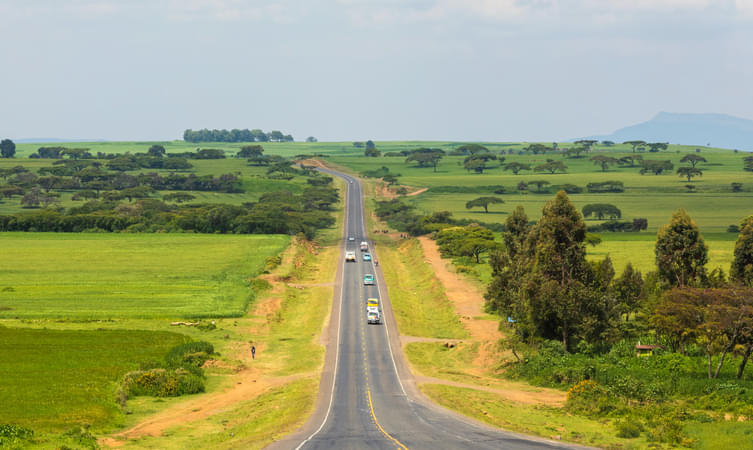
Uhuru Gardens
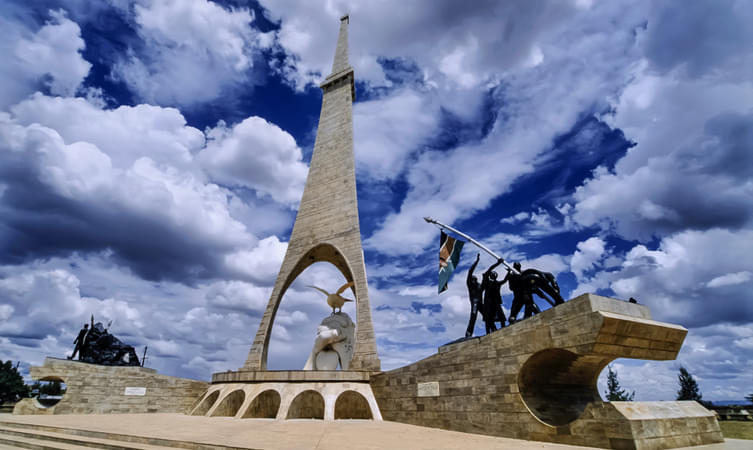
Lamu Island
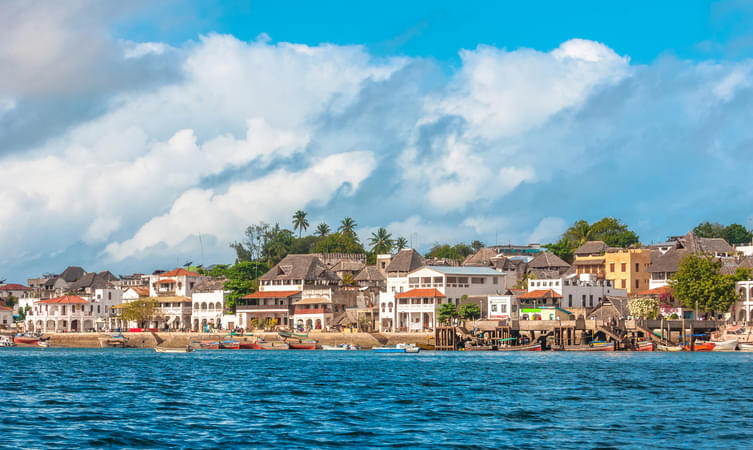
Wasini Island
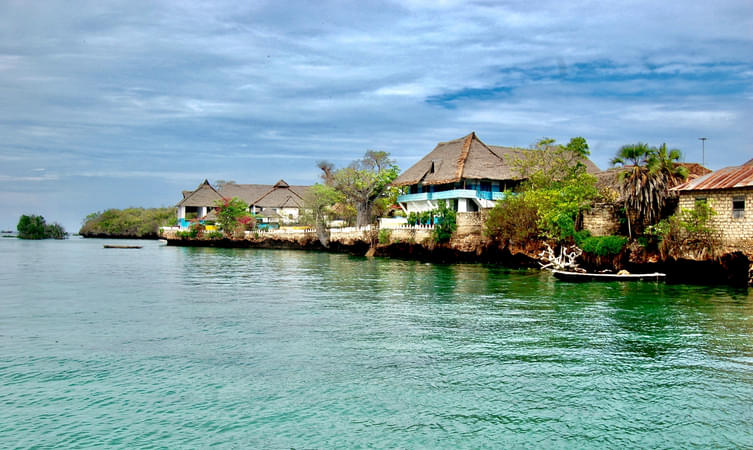
Mount Longonot
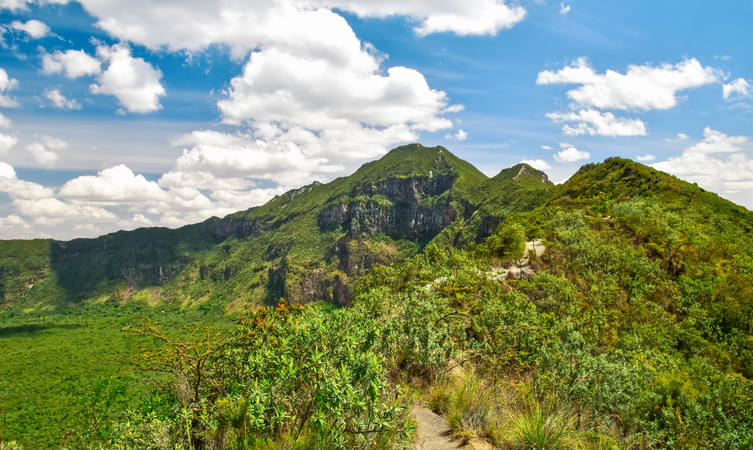
Hells Gate National Park
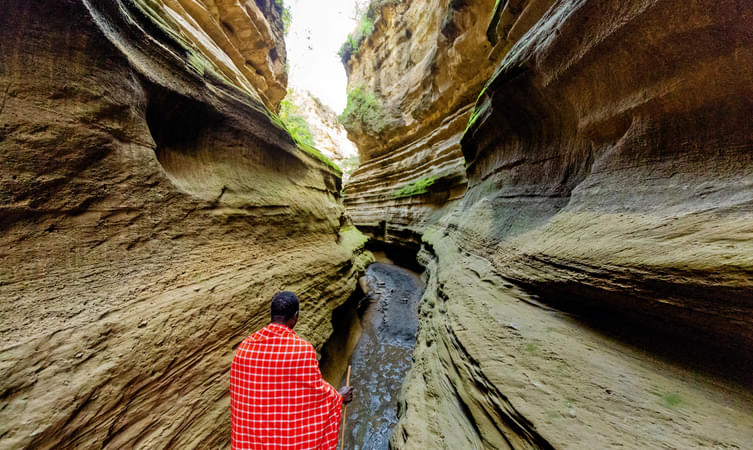
Tsavo National Park
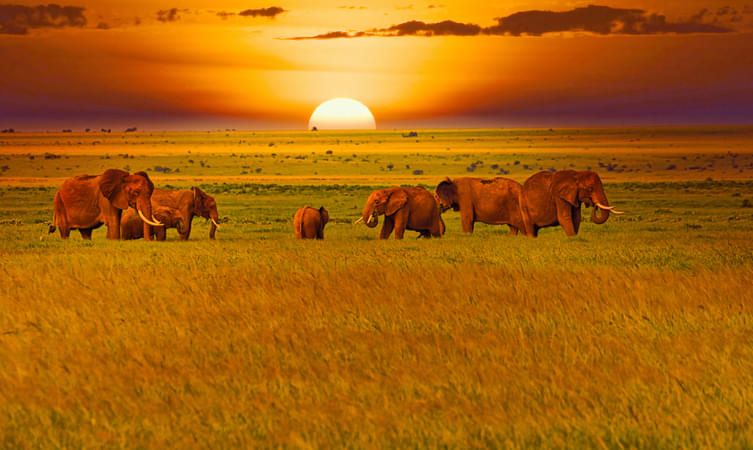
Lake Nakuru National Park
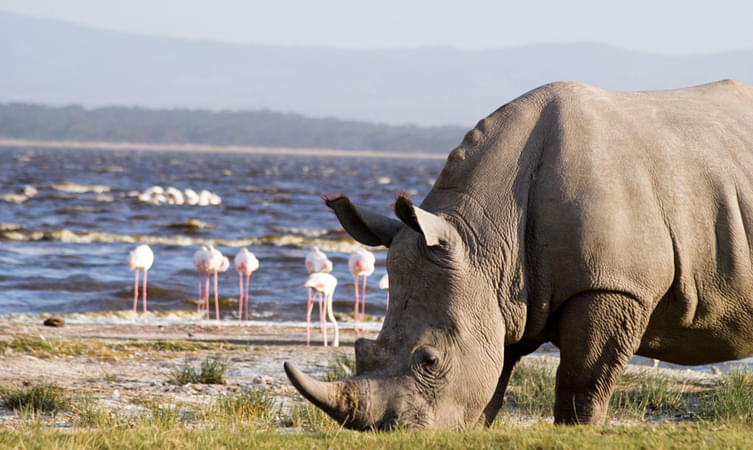
Lake Nakuru National Park, situated in the Great Rift Valley of Kenya, is renowned for its stunning landscapes and diverse wildlife. Spanning an area of approximately 188 square kilometers, the park is characterized by wooded and bushy grasslands surrounding the picturesque Lake Nakuru. Its rich biodiversity includes over 50 mammal species, such as rhinos (both black and white), Rothschild giraffes, cape buffaloes, olive baboons, impalas, waterbucks, and hippos. The park is particularly famous for its large flocks of flamingos that gather along the lake's shores, creating a mesmerizing pink spectacle. Visitors can enjoy game drives, birdwatching, and hiking trails while exploring this natural haven.
Jeevanjee Gardends
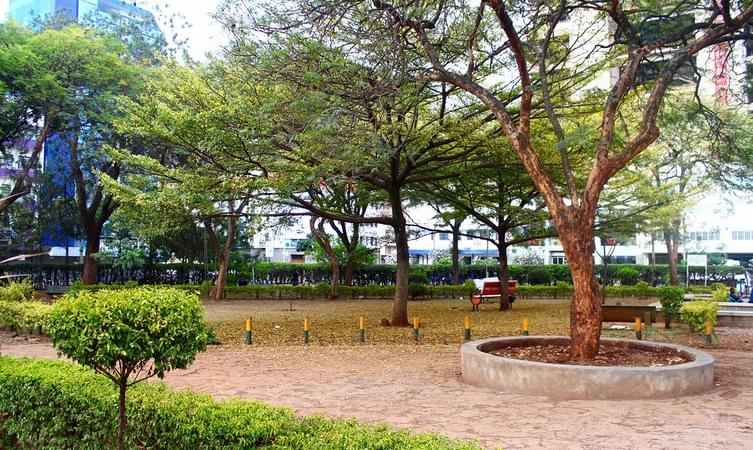
Jeevanjee Gardens, situated in Nairobi, Kenya, is a lovely green space right in the middle of the city. It's like a breath of fresh air amidst the busy streets.
Spread across a large area, Jeevanjee Gardens is a place where you can relax and enjoy nature. Picture yourself walking on lush green lawns, surrounded by colorful flowers and shady trees. It's the perfect spot for a leisurely stroll, a picnic with friends, or simply finding a quiet corner to relax with a book.
What's special about Jeevanjee Gardens is its history. It was created by Alibhai Mulla Jeevanjee, a well-known figure in Kenya, back in the late 19th century. Since then, it's been a place where people come together for cultural events, music concerts, and other activities that celebrate Nairobi's vibrant spirit.
For families, there's plenty to do at Jeevanjee Gardens. Kids can run around in the playgrounds, splash in the fountains, and just have fun outdoors. It's a great place for families to spend quality time together and enjoy the beauty of nature.
Bora Bora Wildlife Park
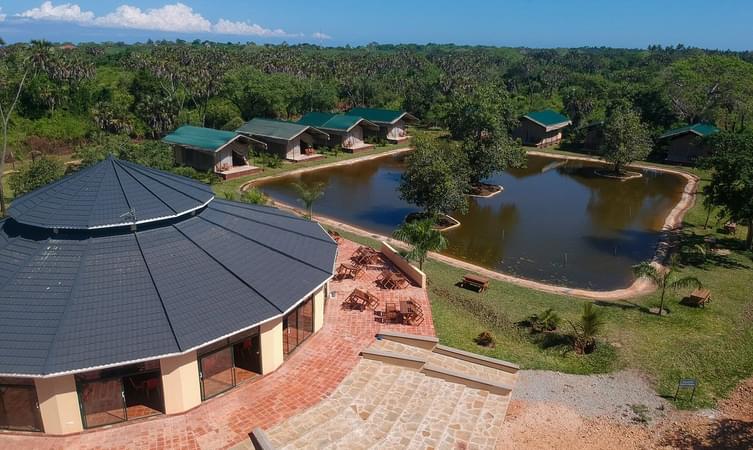
Bora Bora Wildlife Park, nestled amidst the lush landscapes of the island paradise, offers a captivating sanctuary for both native and exotic species.
Almasi Art Agency
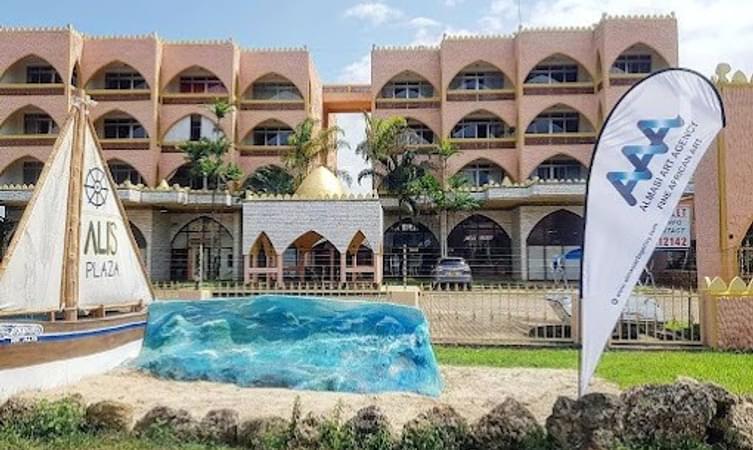
Almasi Art Agency in Kenya is a dynamic cultural organization fostering the growth of performing arts. Committed to enriching the local arts scene, it serves as a catalyst for theatrical innovation and creative expression.
Mzima Springs
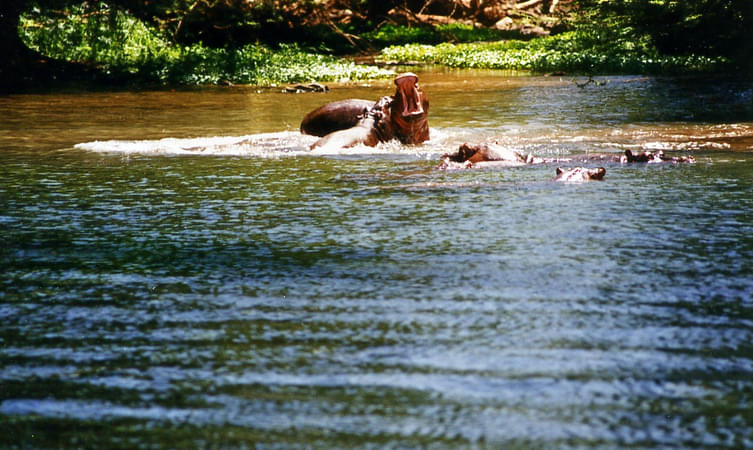
Lake Nakuru
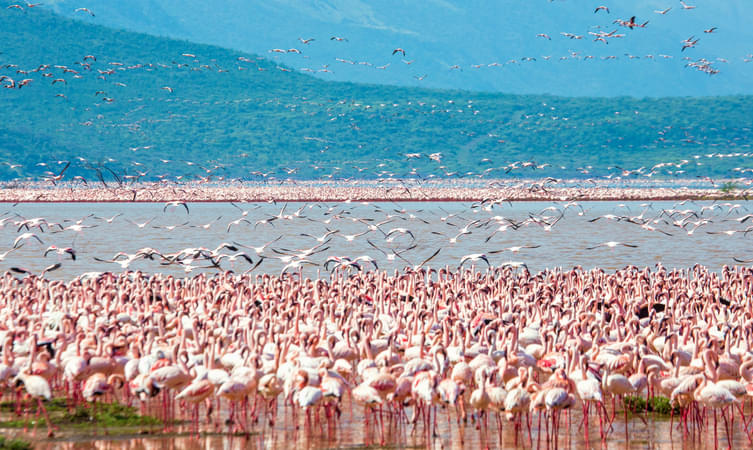
Fourteen Falls
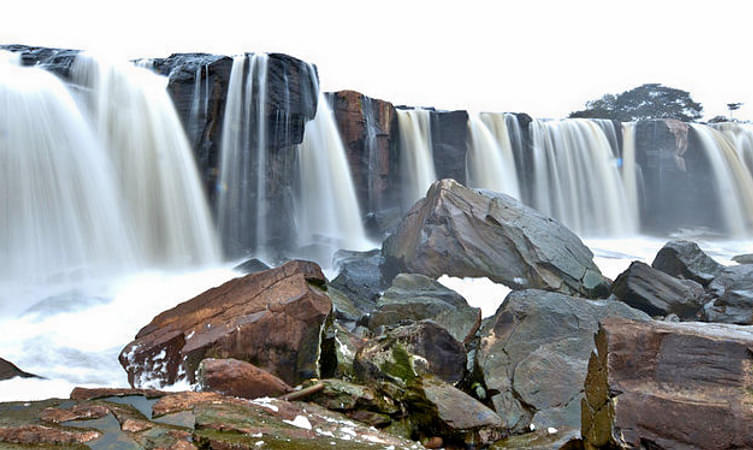
Shaba National Reserve
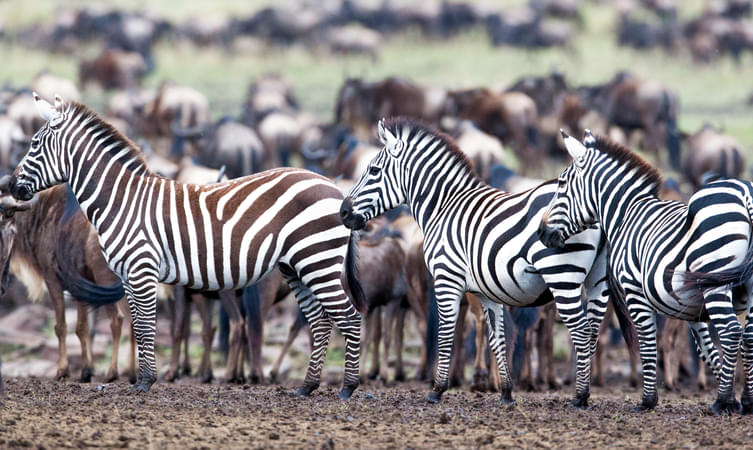
Shaba National Reserves is known for its rich wildlife and unique variety of birds making this national reserve so popular worldwide. Tourists coming here can spot some rare species of animals, including Reticulated giraffes, Grevy's zebra, Beisa oryx, the Somali ostrich, and the Gerenuk. Apart from these species that are exclusive to this region, you can also spot a few common wildlife creatures, including Elephant, black rhino, lion, leopard, cheetah, buffalo and hyena. If bird spotting is your game then try spotting the group of helmeted and vulturine guinea fowl during the daytime near the river Ewaso Ng'iro, when they are in search of water to quench their thirst. If you're lucky enough you can also spot marabou storks flying over the blues or see thousands of sandgrouses and doves on the tree or on the lands. Location- It lies to the north of the Ewaso Ng'iro River Entry Fee- US$45-120 depending on the age group.
David Sheldrick Wildlife Trust Elephant Nursery
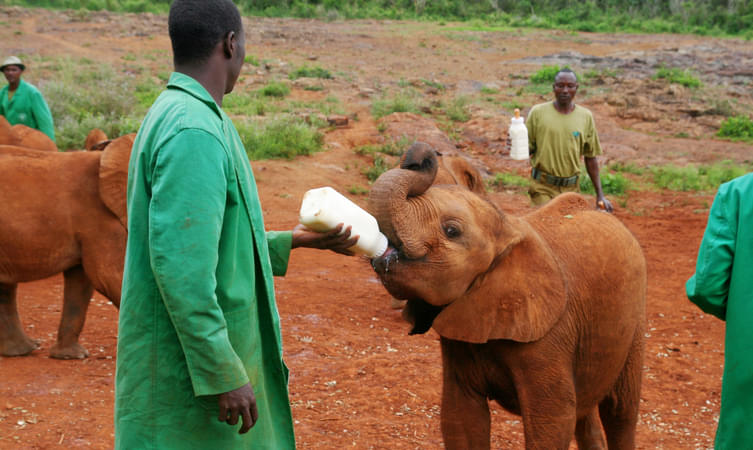
Ol Pejeta Conservancy
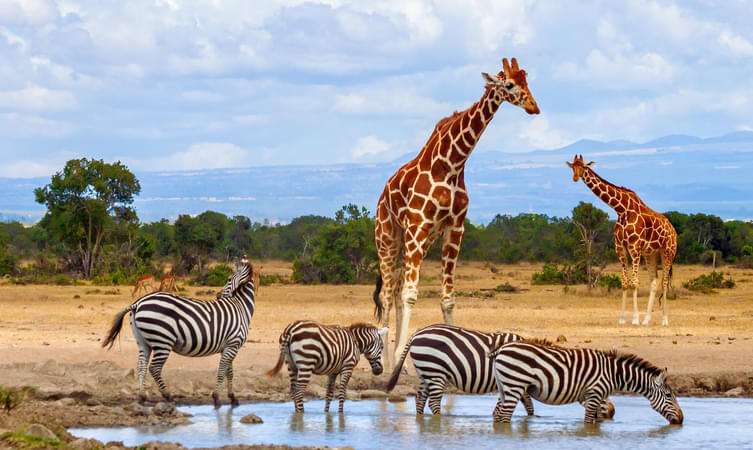
Buffalo Springs National Reserve
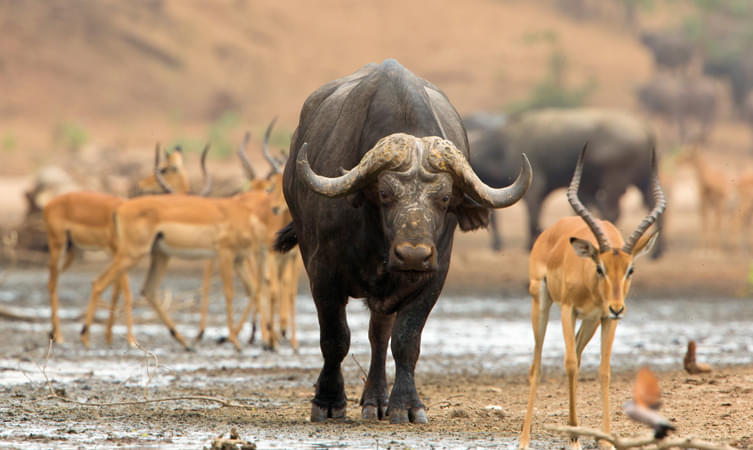
Nairobi National Park
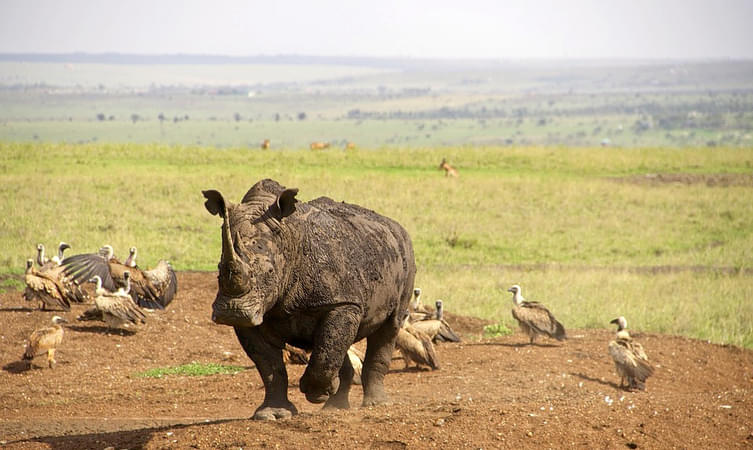
Tsavo East National Park
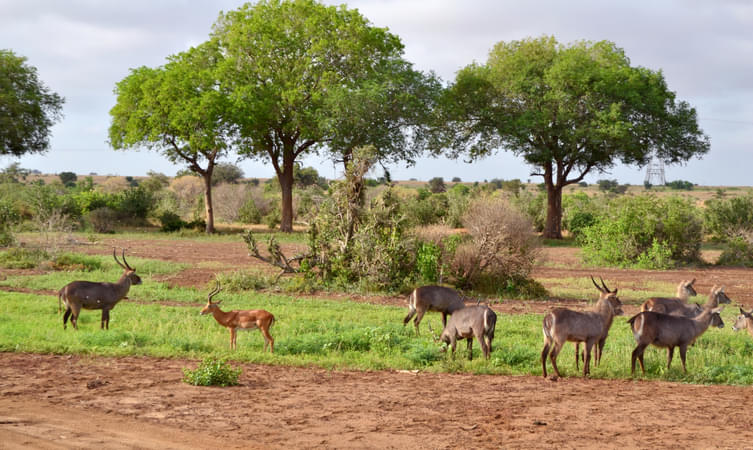
People Also Ask About Kenya
Which are the famous places to visit in kenya with family, which are the famous national parks in kenya, which are the best places for safari in kenya, what is kenya famous for, is kenya expensive for tourists, what is the best time to visit kenya, what are the best day and night tour packages you can book with thrillophilia.
- 4 days in Kenya
- 6 days in Kenya
- 5 days in Kenya
- 7 days in Kenya
- 10 days in Kenya
- 12 days in Kenya
- 14 days in Kenya
- 15 Days Kenya Tour Packages
- 8 Days Kenya Tour Packages
- 9 Days Kenya Tour Packages
- 11 Days Kenya Tour Packages
- 13 Days Kenya Tour Packages
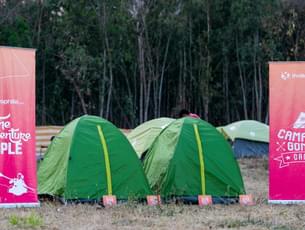
Kenya Travel Guides

Kenya Reviews

Popular Nearby Places Around Kenya
More things to do in kenya, more on kenya tourism, popular related destinations.
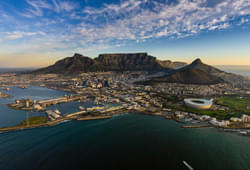
Best Domestic Packages
Best international packages, domestic honeymoon packages, international honeymoon packages, places to visit in india, international places to visit, things to do in india, international things to do, popular on thrillophilia.
- We assure the privacy of your contact data.
- This data will only be used by our team to contact you and no other purposes.
Your enquiry has been received successfully. Our destination expert will reach out to you soon!
Is Kenya Safe for Tourists in 2024? (Solo & Family Travel Guide)
Kenya’s stunning landscapes and amazing wildlife pull adventure seekers like magnets. But you might be wondering: “Is Kenya safe for tourists?”
The good news is that incidents involving tourists are rare , especially in the game reserves and hot spots. Still, it’s smart to stay sharp and avoid certain areas.
Here’s how to enjoy your Kenyan adventure safely and smartly.
Is Kenya Safe?

Kenya is one of the safest African countries to visit . With a booming tourist industry and over 2 million visitors each year , tour operators ensure you’re taken to the safest spots, so most trips go smoothly.
That said, it’s smart to stay vigilant. International travel advisories suggest watching out for risks like diseases and street crime. Some areas are best avoided altogether. We’ll dive into each potential threat in the sections ahead, but here’s the scoop to get you started.
- Travel advisory for Kenya: Level 2, exercise a high degree of caution
- Crime rating: Moderate at 55.86
- Most common crime that affects tourists: Petty crimes and tourist scams
- No-go areas: Mandera, Wajir, Garissa, Marsabit, all coastal counties of Tana River and Lamu, Kilifi County north of Malindi, the road between Kainuk and Lodwar in Turkana County, and Nairobi neighborhoods of Eastleigh, Pangani, Kibera
- Public transportation safety: Prone to pickpockets
- Beach safety: Lagos has the best and safest beaches
- Safety walking alone during the day: Safe
- Safety walking alone during the night: Not safe
- Common natural disasters: Droughts, floods, earthquakes, volcanic eruptions, forest fires, and landslides.
- Carbon monoxide poisoning: Possible, CO detector is advised
- Police presence: ~110,000 officers
- Medical care quality: Nairobi has the best hospitals, which are scarce outside of the capital
- Tap water: Not safe to drink
- Best time to visit: June to October or December to March
Travel Advisory for Kenya
Travel advisories from the US give Kenya a Level 2 warning — visit with a high degree of caution .
The no-go areas of Kenya include:
- Mandera, Wajir, Garissa, and Marsabit
- All coastal counties of Tana River and Lamu
- Kilifi County, north of Malindi
- The road between Kainuk and Lodwar in Turkana County
- Nairobi neighborhoods of Eastleigh, Pangani, Kibera
The scoop on terrorism is:
- Attacks have happened in Nairobi, Mombasa, Malindi, and near the Somali border.
- The last major incident was in January 2020 at a U.S. Department of Defense facility.
- Be extra cautious during religious holidays, sports events, and public celebrations.
The latest info about demonstrations:
- Anti-government protests are common in cities like Nairobi.
- Demonstrations may disrupt access to Jomo Kenyatta International Airport.
- Authorities might impose curfews and restrict movement.
A note on crime:
- High crime rates are reported in cities like Nairobi, Mombasa, and Kisumu, especially before Christmas.
- In Nairobi, crime is concentrated in informal settlements like Kasarani, Kibera, and Mathare.
- Mombasa’s Old Town and the Likoni Ferry area are also hotspots for criminal activity.
- Be wary of thieves targeting car passengers and scams, including impersonation and internet fraud.
- Passport theft has occurred at Jomo Kenyatta International Airport.
Additional safety concerns:
- Power outages are frequent and can increase crime risk.
- Kenya faces natural disasters and severe weather.
- Malaria and other insect-borne diseases are common. Yellow fever and high HIV/AIDS rates are also concerns.
- Be cautious about food and waterborne diseases like hepatitis, cholera, and measles.
- Traffic delays, especially on the Nairobi-Mombasa road, are common.
A Comprehensive Look at Kenya Crime Rates
Kenya has a moderate crime rating of 55.86—higher than Africa’s safest spot , Mauritius (47.42), but quite close to Botswana (52.39), Africa’s second safest .
In 2022, crime surged to 231,653 cases , with theft topping the list of most common crimes . The good news is that 2023 saw a slight drop to 228,074 cases, marking a 1.5% improvement.
Source : Numbeo , 2024 data based on 291 contributors.
Personal Crime in Kenya
Personal crime in Kenya is of moderate concern, but it’s smart to stay alert and take precautions.
Your instincts are your best friend. For instance, if you get the feeling that someone might be following you, don’t hesitate to change your path. Head into a busy place like a store or café where the crowd can act as a protective shield.
When exploring, stick to well-traveled streets and avoid those quiet, isolated backstreets. And don’t let a few drinks dull your senses. It’s all about staying sharp—knowing when to say no and keeping your wits about you.
A friendly smile goes far in Kenya. However, it’s important to balance friendliness with discretion. Keep a low profile, and your chances of something going south are slim to none.
Property Crime in Kenya
In Kenya, property crime is of moderate to high concern, so always be conscious of where you are and what you’re carrying.
Thieves are particularly active on public transportation and in bustling areas like markets or tourist spots. Events with large crowds, such as concerts or festivals, are also common places for pickpockets to operate. The best strategy is to travel light—only carry what you need for the day and keep valuables securely in your hotel room.
Thieves often use distractions to steal from you. They might create a commotion or ask for help to divert your attention, so stay vigilant.
Additionally, be cautious of individuals pretending to be hotel staff or police officers. Scammers might approach you, claiming to be officials, and ask for money. If someone in uniform fines you, ask for an official receipt. Legitimate police officers are required to provide identification and documentation for any fines they issue.
These situations are definitely on the more extreme end of the spectrum, but it’s still wise to be aware of them.
Police Presence in Kenya
In Kenya, there are around 110,000 officers for a population of roughly 56 million. This ratio means that while police are available, they might not be able to respond to every single incident.
However, there’s a special unit dedicated to tourism in Kenya—the Tourism Police Unit. These officers cater to tourists. They patrol popular spots like beaches, hotels, and tourist attractions to keep things safe and smooth. If you have any questions, run into problems, or need assistance, they’re there to help out.
If you can’t spot them but you’re in need of protection, ring 112, 999, or 911.
Public Transportation Safety in Kenya

Public transport in Kenya can be a hotspot for pickpockets, so keep a tight grip on your belongings!
The Madaraka Express train from Nairobi to Mombasa is your safest bet for getting around by train. Other passenger trains might be less secure and more prone to delays.
Kenya also has a network of long-distance buses, but they tackle rough roads, which makes them prone to accidents. Try to travel during the day, with morning departures being the safest choice.
Minibusses and motorbike taxis can be poorly maintained and driven with a dash of recklessness. It’s best to steer clear of these. Instead, use taxis for safer city travel.
Taxis are easy to find in big cities and tourist areas. They’re usually around popular spots and bus stations. However, not all taxis use meters, so it’s a good idea to agree on the fare before you get in. Check with your hotel or guide for an idea of the going rates.
Ride-hailing apps like Uber, Bolt, and Hava are also available, especially in Nairobi.
Medical Care Quality in Kenya
Nairobi is where you’ll find the best medical facilities. Outside the capital, good healthcare may be limited.
Here are some of the best hospitals you might want to know about:
- Kenyatta National Hospital, Nairobi (☎️ +254 20 2726300)
- The Aga Khan University Hospital, Nairobi (☎️ +254 20 3662000, 20 3740000)
- MP Shah Hospital, Nairobi (☎️ +254 20 4291100)
- The Nairobi Hospital, Nairobi (☎️ +254 70 3082000, 20 2845000)
- The Karen Hospital, Nairobi (☎️ +254 20 6613000)
- Diani Beach Hospital, Ukunda (☎️ +254 70 0999999)
If you’re planning a trip to Kenya, medical travel insurance is a must-have. This insurance covers things like ambulance rides, doctor visits, hospital stays, medication, and anything in between. Without it, you’d be stuck paying those costs yourself.
Before you grab that insurance policy, make sure it covers the activities you’ve got planned and check if it includes the hospitals listed.
Is It Safe to Travel Solo in Kenya?
Traveling solo in Kenya is possible, but it’s essential to be extra cautious.
For starters, avoid roaming around alone after dark. Booking a slightly pricier, well-reviewed hotel or a lively, social hostel might offer added safety and the chance to meet fellow travelers. Exploring with a tour group is another great way to stay safe. To get around, stick with Uber or a trusted local taxi service instead of public transportation. We’ve mentioned before that public transport can be less reliable and more risky for tourists.
Stick to these essentials, and you’ll have a much smoother and safer solo adventure.
Is It Safe to Travel to Kenya as a Family?
Traveling with your family in Kenya is generally safe, but it’s essential to stay alert and plan wisely.
When selecting your accommodation, you’ll want a family-friendly place where everyone can unwind and enjoy amenities like pools, kids’ activities, and easy access to necessities. Renting a car may come in handy as well, making those long distances feel shorter.
Some lodges and camps, particularly in wildlife areas, might have age restrictions for young children, so it’s wise to check these details before booking. For those who do welcome families, don’t forget to ask about any special discounts or offers for kids—they can add up to significant savings.
Most importantly, keep your daily activities balanced. Don’t over-schedule your days. A relaxed pace will help everyone enjoy the trip more!
Perils of Nature: The Risk of Natural Disasters in Kenya

Kenya faces several natural disasters including droughts, floods, earthquakes, volcanic eruptions, forest fires, and landslides.
Droughts
In Kenya, droughts are common during the dry seasons from December to March and July to October but may pop up outside these times, especially if there’s a prolonged lack of seasonal rains.
If you’re traveling in a drought-affected area, have ample water supply on hand, as availability can become unpredictable. Stay updated on local news and advisories to know if there are any restrictions or guidelines.
Floods
Flooding in Kenya may occur during the rainy seasons, from March to May (the long rains) and from October to December (the short rains).
Check the weather forecast before booking your stay or any tours. If rain is expected, be flexible and adjust your plans to include indoor activities. This way, you can still enjoy your trip and make the most of your time, even if the weather throws a curveball.
Earthquakes
Kenya experiences very few earthquakes, and while most are minor, occasionally, stronger ones can occur. For example, on July 16, 2024, Kenya felt a notable quake with a magnitude of 4.6 , which was felt widely in the Nairobi area.
Since you can’t predict when an earthquake might strike, it’s important to know what to do if you feel the ground shaking. First, drop down to avoid being knocked over. Next, take cover under something sturdy, like a table or desk, to protect yourself from falling objects. Hold on until the shaking stops to ensure you stay safe.
Volcanic Eruptions
Kenya is dotted with several volcanoes, with Mount Longonot being one of the most recognized active volcanoes in the region.
There hasn’t been a volcanic eruption in Kenya for quite some time, but the potential for activity always exists. So, if an eruption does occur, it’s essential to follow evacuation orders and guidance from local authorities.
Forest Fires
In Kenya, forest fires can occur at any time when there’s an extended period of drought, although they are most likely during the dry season, which runs from June to October.
If you’re in an affected area, it’s important to leave quickly to avoid health risks. Stay informed through local news for the latest updates on the fire’s progress and any evacuation instructions. This will help you navigate the situation safely and make necessary adjustments to your plans.
Landslides
Heavy rainfall is a primary trigger for landslides in Kenya. However, landslides can also be sparked by other events like major earthquakes or volcanic eruptions.
To stay safe, avoid hiking in mountainous areas immediately after heavy rain, an earthquake, or a volcanic eruption (this goes without saying). And do some homework! Before heading out, research the area’s history of landslides. This way, you can help ensure your safety and avoid dangerous areas in the mountains.
Beware the Silent Threat: Carbon Monoxide Poisoning in Kenya
Carbon monoxide (CO) poisoning in hotels and motels is a real concern.
This toxic gas often leaks from:
- Hotel boilers
- Furnaces
- Pool heaters
- Portable generators
- Diesel pumps
- Stoves
- Clothes dryers
- Ovens
These appliances can produce CO if they’re not burning fuel perfectly. Regular checks, maintenance, and CO detectors in hotel rooms can help keep this gas in check.
While smoke alarms are standard in hotels in Africa, CO detectors aren’t required by law. This has led to CO incidents involving five family members in Kiambu County , central Kenya.
The gas is particularly dangerous because it’s odorless and colorless, and its symptoms—itchy eyes, headaches, nausea, dizziness—can easily be mistaken for the flu. At high levels, it can be deadly in minutes.
If your Kenyan room doesn’t have a CO detector, pack a portable one so you’ll always stay protected. If your detector starts going off, open the windows, leave the room, and get some fresh air.
Serenity by the Shore: The Safety of Kenya Beaches

Some Kenyan beaches don’t have lifeguards. If you’re not a strong swimmer or plan to sip on a drink, it’s best to stick to beaches with lifeguards or skip swimming altogether. Locals can point you to the safest spots.
If you do find yourself at a beach without lifeguards, look out for warning flags that signal swimming conditions:
- 🟢 Green: Safe to swim
- 🟡 Yellow: Be cautious, moderate waves and currents
- 🟥 Single Red: Strong currents, stay on the sand
- 🟥🟥 Double Red: The beach is closed
- 🟣 Purple: Watch out for dangerous marine life
- 🟥⬜ Red and White Quartered: Emergency evacuation
When you’re at the beach, remember:
- Stay close to shore when swimming.
- Keep an eye on the kids.
- Leave your prized possessions in your room.
- Avoid swimming at dawn or dusk when sharks are more active.
- Skip swimming alone.
Kenya Weather Patterns: What to Expect
Kenya’s climate is hot and humid along the coast, temperate in the west and southwest, and hot and dry in the north and east.
Kenya has two main weather seasons:
- Warm season from February to March
- Cool season from July to August
There are also two main windy spells :
- From October to March, hot, dry winds from the Arabian Desert sweep through.
- From April to September, cooler, moist winds from the Indian Ocean take over.
And two wet seasons:
- Long rains from March to May
- Short rains from October to December
Coastal and southwest regions are the wettest—around 31-79 inches of rain per year (about 787 to 2,007mm), while the arid north and east are the driest—less than 20 inches (about 508mm).
For a closer look, let’s dive into the weather specifics for Nairobi.
The Weather in Nairobi
In Nairobi, the temperatures swing between 54°F and 81°F (about 12.2°C to 27.2°C).
March is the hottest month , with highs around 80°F (about 26.7°C) and lows around 61°F (about 16.1°C). July is the coolest , with temperatures dipping to 55°F (about 12.8°C) at night and reaching just 71°F (about 21.7°C) during the day.
August enjoys the most sun with clear skies 52% of the time. April is the cloudiest month , with the sky being overcast or mostly cloudy about 73% of the time.
Rainfall peaks in April with an average of 3.4 inches (about 8.6 centimeters), while July is the driest , seeing just 0.1 inches (about 0.3 centimeters) of rain.
Regarding wind, December is the windiest and blows in with an average speed of 10.8 miles per hour (about 17.4 kilometers per hour), making it the windiest month . June is the calmest , with a gentler breeze averaging 6.8 miles per hour (about 10.9 kilometers per hour).
Monthly Average Temperatures in Nairobi
Source : WeatherSpark , 2024 data
When Is the Best Time to Visit Kenya?

Kenya is a great destination year-round, but the dry seasons—June to October and December to March—are unquestionably the best times to go. The weather’s spot-on as it’s not too hot, and the rain is mostly a no-show. Plus, with the trees thinned out, spotting wildlife is a breeze. Just a heads up – December and January can get busy and pricey because of the tourist rush!
If you’re not into the hustle and bustle, consider Kenya during the rainy months—from November to early to mid-December or April and May. You might catch a few rain showers, but you’ll dodge the crowds, enjoy green landscapes, and possibly enjoy great deals on flights and hotels.
How to Stay Safe in Kenya
City Safety
- Opt for gated hotels and resorts in tourist areas with strong security. Always check reviews, especially those mentioning safety.
- Know your route, wherever you’re going. Use navigation apps so you won’t get lost.
- In Nairobi, when in tourist areas and on safari, feel free to wear shorts, dresses, and sleeveless tops. Avoid walking around in swimwear. Dress more conservatively in Muslim areas like Lamu Town.
- Locals can be a treasure trove of information. Ask them about reputable restaurants and safe ways to get around. They can also tell you which areas to steer clear of.
- Always carry some cash for smaller purchases. Withdraw money from ATMs inside malls or banks for added security.
- Keep car doors locked and windows up. Be particularly vigilant on roads connecting city centers to residential areas.
- Skip the nighttime exploration. If you’re out and about after the sun sets, don’t walk—take a taxi to take you back to your hotel.
- Keep an eye on how much you drink.
- Steer clear of any protests or demonstrations.
- If faced with danger, comply without resistance to stay safe.
Safari Safety
- Listen to your tour guide. They know the best spots for wildlife and how to keep you safe.
- Keep your excitement in check. Loud noises can scare the animals.
- On self-drive safaris, be extra careful and don’t get too close to the animals. Give them plenty of room.
- Don’t run in wildlife areas—predators might think you’re prey.
- Avoid bright colors and strong perfumes. In tsetse fly areas, skip dark clothes—they attract the flies.
- Don’t stick your head out of the window or stand on the roof. Keep windows and doors shut.
- Only bring the food you need and don’t leave it lying around.
- Always zip up your tent, even if you’re stepping out for a minute.
- Don’t walk around at night.
Mountain Safety
- Never hike alone—group hikes of four or more with a professional guide are safest.
- Always check the weather forecast before heading out.
- Let your hotel or a friend know where you’re headed and when you plan to be back.
- Follow the marked paths like they’re your GPS.
- Wrap up your hike before it gets dark.
- Keep your phone charged and local emergency numbers handy.
- Be cautious of everyone, especially those who don’t look like real hikers.
- Bring plenty of water and snacks to keep your energy up.
- Wear the right gear and pack a cozy jacket.
- Grab a local SIM card so you’ll have good cell service.
Other Tips
- Some vaccines are must-haves, others are highly recommended. Consult with your doctor and get vaccinated if needed.
- Always ask permission before photographing people. If they give the thumbs up, show them the pic afterward.
- Power outages can happen (but usually don’t last long). Keep a power bank handy and charged, as well as a flashlight.
- Peeled fruits are generally safe to eat but it’s best to avoid the unpeeled ones. Stick to reputable restaurants and busy street food vendors.
- Skip tap water and opt for bottled or filtered water.
- Kenya’s secondary roads can be bumpy and pothole-ridden, and most park roads are dirt paths. Conditions change with the seasons, so be prepared for rough rides.
What to Pack
- Clothes to fit the weather: Early morning safaris can be pretty chilly, so pack fleece and windproof jackets. As for the coast and cities, pack light, breathable fabrics.
- Sun protection: Wear a hat, high-SPF sunscreen, and polarized sunglasses to shield yourself from the sun’s powerful rays.
- Medical kit: Pack antibacterial wipes, soothing lotions, antiseptic ointment, tweezers, bandaids, painkillers, electrolytes, and anti-diarrhea tablets.
- Insect Repellent: Arm yourself with a bottle of insect repellent and apply it generously, focusing on ankles and any exposed skin.
Emergency Numbers
- Police, Fire, Ambulance: 112 or 999 or 911
Bon Voyage & Happy Travels!
Before we say goodbye, let’s celebrate a few of Kenya’s recent highlights that make it an even more exciting destination.
In February 2024, National Geographic named Kenya as a must-see place . Then, in March 2024, Go2Africa ranked Kenya as the best globally for wildlife photography . And in May 2024, the city of Mombasa was the third-best global destination for its affordability , according to a survey by the Post Office.
Just remember: Follow the tips we’ve shared to keep your trip safe and enjoyable. Have a fantastic time in this amazing country!

Is Tanzania Safe for Tourists in 2024? (Solo & Family Travel Guide)

Is South Africa Safe for Tourists in 2024? (Solo & Family Travel Guide)

Is Egypt Safe for Tourists in 2024? (Solo & Family Travel Guide)

Nigeria Travel Safety 2024: Is It Safe to Visit?
You must be logged in to post a comment.
How to Spot Fake Money in Kenya (1000 Notes 2024 Edition)
- Under Finance
- Be the 1st to leave a comment
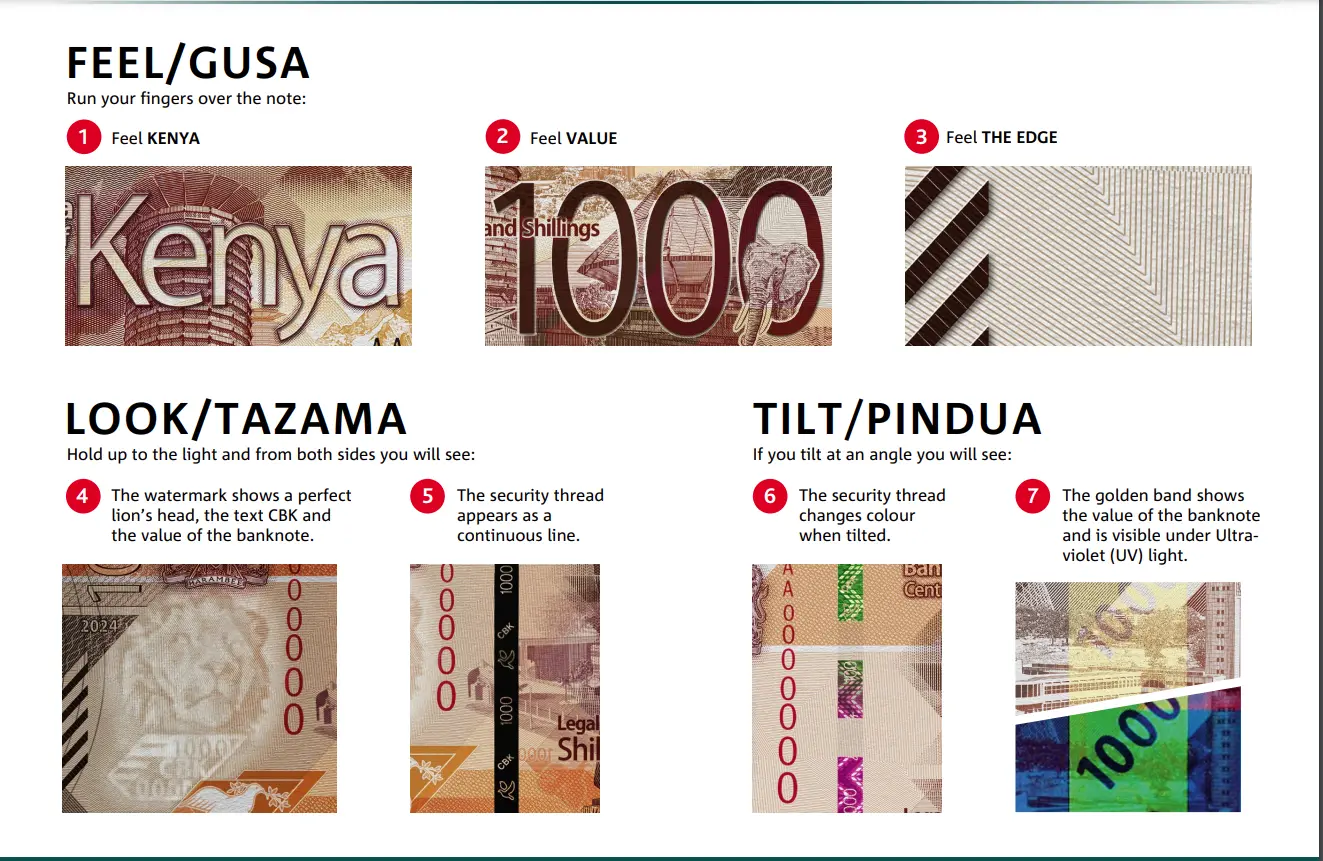
Counterfeit currency is a significant concern in Kenya, and knowing how to spot fake money can save you from potential losses.
The KES 1,000 note is particularly susceptible to counterfeiting due to its high value. In this article, we’ll guide you through the key features to look for when verifying the authenticity of this banknote.
By following these steps, you’ll be better equipped to identify fake money and protect yourself from fraud.
1) Check the texture of the note
One of the first things you should do when handling a KES 1,000 note is to feel the texture.
The Central Bank of Kenya has designed the note with specific raised areas that you can easily identify by touch:
- KENYA text : Run your fingers over the word “KENYA” on the note. It should feel slightly raised.
- The edge of the note : The edges of the banknote have a unique rough texture. This roughness is intentional and helps in identifying genuine notes.
- Value of the note : The number indicating the value of the note is also printed with a raised texture. This feature is meant to help you quickly verify the note’s authenticity.
2) Look for the watermark and security thread
Next, hold the note up to the light. This step is crucial as it reveals two of the most important security features:
The watermark on the KES 1,000 note is a clear indicator of its authenticity. When you hold the note up to the light, you should see:
- A lion’s head : This should appear as a perfect, clear image within the note.
- The text “CBK” : This acronym for the Central Bank of Kenya should be visible alongside the watermark.
- The note’s value : The value of the note, such as 1,000, should also be visible as part of the watermark.
Security thread
Alongside the watermark, you should also notice a security thread :
- Continuous line : This thread should appear as a continuous line running vertically through the note. It is embedded within the paper, making it difficult to counterfeit.
- Visible from both sides : The security thread should be visible when the note is held up to the light from either side.
3) Tilt the note to see color changes
Another important method to spot a fake KES 1,000 note is to tilt it at different angles. The Central Bank of Kenya has incorporated color-changing features that are difficult to replicate:
- Color-changing security thread : When you tilt the note, the security thread should change color. This is a sophisticated feature that adds an extra layer of security to the banknote.
- Golden band : As you tilt the note, you should also see a golden band that shows the value of the banknote. This band becomes more prominent under ultraviolet (UV) light, which is commonly used in banks and businesses to verify money.
Verify the year of print and signatures
Finally, check for additional details that indicate the note’s authenticity:
- Year of print : The most recent series of KES 1,000 notes specifies the year of print as 2024. Make sure this detail is present on the note you’re inspecting.
- Signatures : Look for the signatures of the Governor and a Member of the Central Bank. These are updated on new notes and should match the current officials.
By following these steps, you can confidently identify whether a KES 1,000 banknote is genuine or counterfeit.
Always take the time to inspect the money you receive, especially when handling large sums. Counterfeit money can lead to significant financial losses, but with the right knowledge, you can protect yourself and others from falling victim to fraud.
This article helps you understand how to spot fake money in Kenya using simple, clear instructions. By being vigilant and using the techniques mentioned above, you can ensure that the money you handle is always genuine.

About Moneyspace
Main topics:, latest articles.
The State Of Banking In Kenya: 2023 Banking Report Overview by KBA
List of 23 Cabinet Secretaries in Kenya (September, 2024)
7 Things to Avoid Until You’re Rich
Fire in a school in Kenya kills 17 students and seriously burned 13 others, police say
A fire in a school dormitory in Kenya killed 17 students and seriously burned 13 others, police said Friday.
There are fears that the death toll may rise, police said.
The cause of the fire Thursday night at Hillside Endarasha Primary in Nyeri county was being investigated, police spokesperson Resila Onyango said.
“We are investigating the cause and will take necessary action,” she said.
President William Ruto called the news “devastating” and said action would be taken against those responsible.
“I instruct relevant authorities to thoroughly investigate this horrific incident. Those responsible will be held to account,” he wrote on the social media platform X.
His deputy, Rigathi Gachagua, urged school administrators to ensure that safety guidelines recommended by the education ministry for boarding schools are being followed.
School fires are common in Kenyan boarding schools, where many students stay because parents believe it gives them more time to study without long commutes.
Some fires have been started by students during protests over the workload or living conditions. In 2017, 10 high school students died in a school fire in the capital, Nairobi.
The Associated Press
- Entertainment
- Newsletters
WEATHER ALERT
2 heat advisories in effect for 10 regions in the area
Uganda olympic runner's horrific death is the latest in violence against female athletes in kenya.
Gerald Imray
Associated Press
Copyright 2019 The Associated Press. All rights reserved.
FILE - Hellen Obiri, Rosemary Monica Wanjiru and Agnes Jebet Tirop, from left to right, all of Kenya, compete in the women's 10,000 meter race during the World Athletics Championships in Doha, Qatar, Saturday, Sept. 28, 2019. (AP Photo/Martin Meissner, File)
Olympic runner Rebecca Cheptegei's horrific death after being doused with petrol and set on fire by her boyfriend has again brought to the fore Kenya's harrowing history of domestic violence against female athletes.
Her killing follows the deaths of at least two other high-profile female runners in cases of domestic violence in the last three years in a region that has produced dozens of Olympic and world champions.
Recommended Videos
What happened to Cheptegei?
Cheptegei, who was from Uganda, died on Thursday at age 33. Police say Cheptegei’s boyfriend poured a can of petrol over her and set her on fire during a dispute on Sunday. She suffered 80% burns on her body and died in a hospital in the town of Eldoret four days later.
The boyfriend was also burned in the attack and is being treated at the same hospital. No criminal charges have yet been announced against him.
Cheptegei competed in the women's marathon at the Paris Olympics less than a month ago, finishing in 44th place. She lived in western Kenya's famous high-altitude training region that draws the best distance runners from across the world and had recently built a house there to be close to the training centers.
Agnes Tirop
The brutal slaying of Kenyan star runner Tirop in the same region in 2021 led to an outpouring of anger from fellow athletes and prompted the East African country's athletics authorities to acknowledge the scourge of domestic abuse as a major problem.
Tirop was one of Kenya's brightest talents when she was stabbed to death at her home in Iten , the other world-renowned distance-running training town in Kenya, alongside Eldoret. Her husband, who was on the run, was arrested days after the killing and has been charged with murder. His court case is still underway.
Like Cheptegei, the 25-year-old Tirop had just competed at an Olympics — the 2021 Tokyo Games — and had set a new world record in the 10-kilometer road race in another competition a month before she was killed. Her body was found with stab wounds to the stomach and neck, as well as blunt trauma injury to her head.
In the weeks after Tirop's death, current and former male and female athletes, spoke out over what they said was a long-running problem of domestic abuse against female athletes in the region. Some marched through the streets of Iten to demand better protection for female athletes and stricter laws against abusers.
Other Kenyan athletes like Ruth Bosibori, a former African champion in the steeplechase, and Joan Chelimo, a marathon runner, said Tirop's killing had emboldened them to talk about their own abusive relationships.
Both said they had escaped violent partners that made them fear for their lives.
Damaris Muthee
Just six months after Tirop, another runner was killed. Kenyan-born Muthee, who competed for Bahrain, was found dead in a house in Iten after being strangled. Her decomposing body had been there for days before it was found, authorities said at the time.
A male Ethiopian runner with whom she was in a relationship was charged with murder. Muthee, who was 28, had a young child from another relationship.
The cases of domestic abuse in Kenya's running community are set against the country's overriding high rates of violence against women, which has prompted marches by ordinary citizens in towns and cities this year.
Activists say successful female athletes may be especially vulnerable in instances when their partners want to control their money and assets in an impoverished region and the women refuse and push back.
Police said Cheptegei was killed in a dispute with her boyfriend over the land she had just built a house on.
Samuel Wanjiru
One of Kenya's best male athletes also died in what authorities said was a domestic dispute in 2011. Wanjiru was 24 and at the time the reigning Olympic marathon champion. He fell to his death from a balcony at his home during an argument with his wife.
He had been arrested a year earlier and questioned by police for allegedly threatening to kill his wife with an assault rifle. He denied the allegations.
Although Kenyan authorities ruled Wanjiru died after falling or jumping from the balcony, his family claimed that he was killed.
AP Africa news: https://apnews.com/hub/africa
Copyright 2024 The Associated Press. All rights reserved. This material may not be published, broadcast, rewritten or redistributed without permission.
Biden is honoring Kenya with state visit as the East African nation prepares to send police to Haiti
Biden is set to designate the east african nation a major non-nato ally as it prepares to send 1,000 police officers to haiti as part of u.n.-led effort to address the security crisis there., by aamer madhani and zeke miller | the associated press • published may 23, 2024 • updated on may 23, 2024 at 9:28 am.
President Joe Biden welcomed Kenyan President William Ruto to the White House for a three-day state visit and designated the East African nation a major non-NATO ally as it prepares to deploy forces to Haiti as part of a U.N.-led effort to address the security crisis in the Caribbean country.
Some 1,000 Kenyan police officers are set to arrive soon in Haiti, part of a multilateral security support mission that aims to help quell gang violence. Other countries expected to back up Kenyan forces include the Bahamas, Barbados, Benin, Chad and Bangladesh.
📺 Watch News4 now: Stream NBC4 newscasts for free right here, right now.
The largely symbolic designation by Biden was described by two U.S. officials who spoke on condition of anonymity to preview an announcement that will come later during Ruto’s state visit, which began with a White House meeting Wednesday afternoon with American and Kenyan tech leaders.
“I can’t think of a better way to kick off this visit,” Biden said at the start of the leaders' meeting with tech executives. “Our people have brought us forward and pioneered new technologies that are transforming millions of lives. I mean, literally millions of lives. And we’re going to go beyond that.”
But looming large over the visit is the deployment of Kenyan forces to Haiti.
The United States for years has partnered with Kenya on counterterrorism efforts in Africa, including battling the extremist group al-Shabab. Kenya has participated in the Ukraine Defense Contact Group and an international maritime task force launched by the Biden administration in December in response to Houthi attacks against vessels operating in the Red Sea.
Ruto's decision to send police forces to Haiti was welcomed by Biden administration officials as an unprecedented undertaking and a show of global leadership by Kenya.
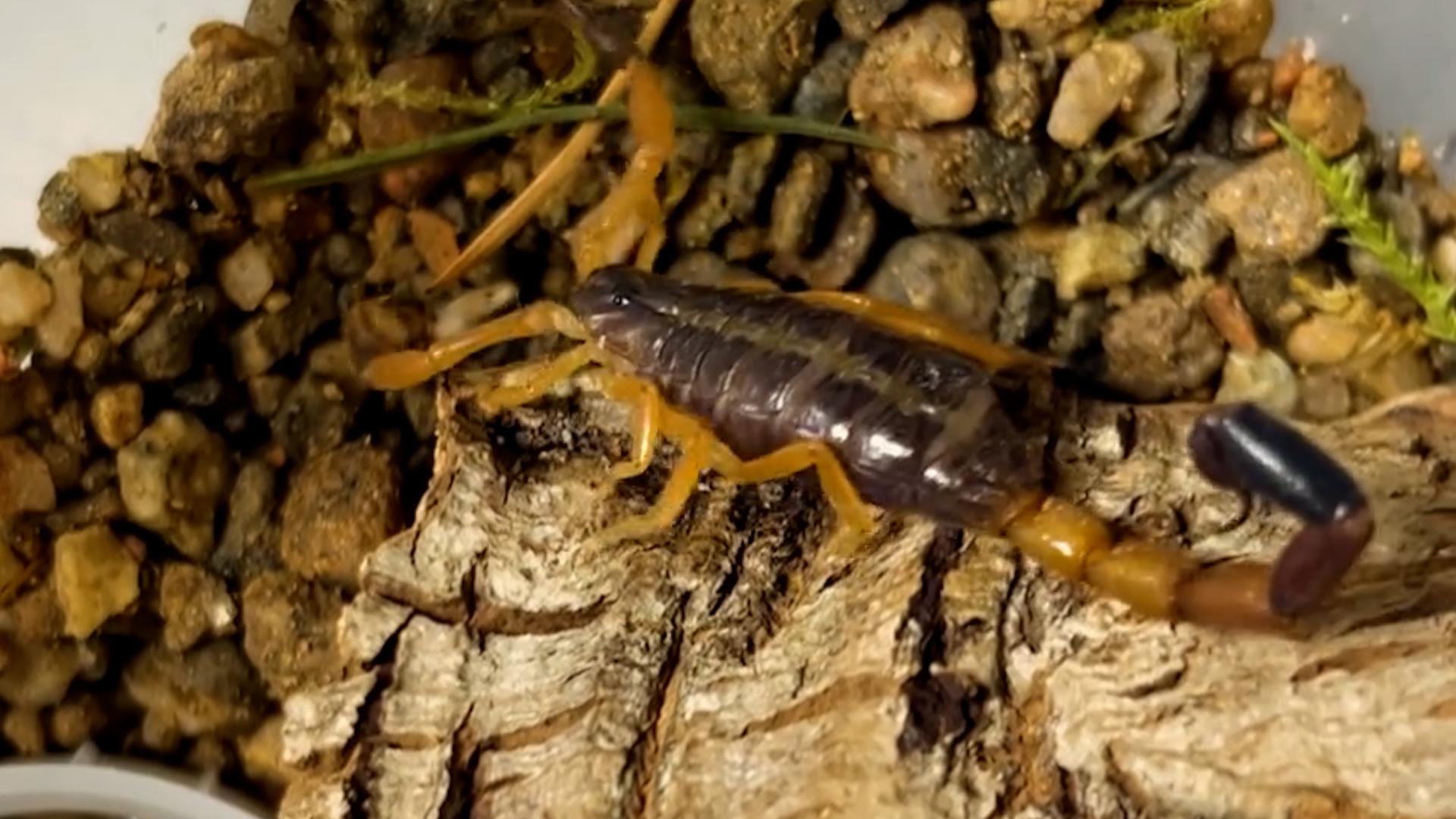
Woman discovers scorpion in luggage after traveling to Kenya

Kelvin Kiptum, winner of the 2023 Chicago Marathon, dies in Kenya car crash
The U.S. is “firmly committed to supporting” the Kenyan deployment, White House national security adviser Jake Sullivan told reporters, and appreciative of the “strong, principled, consistent stance” the country has taken in backing Ukraine.
Kenya is the first African nation since 2008 to be honored by the U.S. with a state visit.
Ruto, who also met with House Speaker Mike Johnson, R-La., at the Capitol, said he would look to use the visit in part to share his concerns about the challenges caused by heavy debt loads in Kenya and across Africa.
Kenya’s debt-to-GDP ratio tops 70%, with much of it owed to China. Credit ratings agency Fitch estimates it will spend almost one-third of its government revenues just on interest payments this year. Ruto said the talks will address “how we can have a fairer international financial system where all countries are treated equally.”
Sullivan said the visit would include announcements from the leaders on ”how the international community can step up to mitigate the mounting burden of debt and unleash inclusive growth.”
Biden and Ruto will hold formal talks and a joint news conference on Thursday before a state dinner. Ruto is also set to participate Friday in an event at the U.S. Chamber of Commerce with Vice President Kamala Harris.
The U.S. and Kenya are marking their 60th anniversary of diplomatic relations. White House officials said the leaders' agenda will include trade and investment, technological innovation, climate and clean energy, health and security.
Deputy Secretary of State Kurt Campbell said the two countries would announce “substantial commitments" to elevate Kenya's technological sector. Kenya hosts Google and Microsoft offices and has positioned itself as the technology hub of East Africa, known as the Silicon Savannah.
“I think we have a historic moment to explore investment opportunities between Kenya and the United States,” Ruto said. “And my being here today is a confirmation that we are moving from ideas into action and from opportunities into investments and hopefully we will be able to sign off some of those investments."
Biden gathered dozens of African leaders in Washington in December 2022 to make the case that the United States under his watch was “all in" on Africa’s future and laid out billions in promised government funding and private investment on the continent in health, infrastructure, business and technology. The Democrat also promised to visit sub-Saharan Africa in 2023.
But other priorities got in the way last year, including the Israel-Hamas war and Biden's long battle with Republicans to renew funding for Ukraine in its war with Russia. The promised visit to Africa by Biden never materialized. Biden, who faces a tough reelection battle in November, said in an exchange with reporters as Ruto arrived at the White House that he still plans to go to Africa.
“I plan on going in February after I’m reelected,” Biden said.
All the while, Russia has tried to expand its economic and military influence across Africa. U.S. troops were recently ordered out of Niger by the West African country’s ruling junta and are expected to complete their withdrawal by the middle of September. Meanwhile, Russia has deployed military trainers to Niger.
The United States has also fallen well behind rival China in investment in Africa, which has become a key battleground in the competition between the major powers.
Biden and his aides say they expect stiff economic competition with Beijing in Africa, but have sought to make the case that Washington is a far more reliable partner in Africa for the long-term.
To that end, Biden acted early in his presidency to devote more attention on Africa than his most recent predecessors, including by hosting nearly 50 leaders for the U.S.-Africa leaders summit in December 2022. But since the summit, analysts say, the administration's engagement has trailed off.
Cameron Hudson, a senior fellow at the Center for Strategic and International Studies Africa Program, noted that that Biden has hosted just one African leader, Angola President João Manuel Gonçalves Lourenço, for talks at the White House since the summit.
“This visit today feels a bit like a fig leaf, not just for the Kenyans but for Africa in general, and a kind of a placeholder for the administration to say: All of those things that we said early on in the administration, they all remain true,” Hudson said.
Ruto is looking to use the visit to bolster his standing on the world stage and he believes sending Kenyan police to Haiti will go a long way toward that broader goal, said Macharia Munene, a professor of international relations at the United States International University-Africa.
“Ruto would like to be recognized, particularly in the West as the leader of the Africans. And this kind of recognition boosts that desire,” Munene said.
Ruto has said that with the mission to Haiti, Kenya's aim is to “formulate actionable strategies that will lead to long-term solutions” in the Western Hemisphere’s poorest nation. Haiti has endured poverty, political instability and natural disasters for decades. The U.S. has agreed to provide the U.N.-backed mission direct financial assistance along with training, logistical and material support.
But Ruto's plan to involve Kenyan police in a crisis thousands of miles away has also been met with some opposition in Nairobi, including legal challenges aimed at blocking the deployment of police forces and long-standing concerns over alleged abuses by police.
Associated Press writers Evelyne Musambi in Nairobi, Kenya, Sudhin Thanawala in Atlanta, Seung Min Kim aboard Air Force One and Darlene Superville contributed to this report.
This article tagged under:

© Saro17/Getty Images
Vast savannas peppered with immense herds of wildlife, snow-capped equatorial mountains, traditional peoples who bring soul and color to the earth - welcome to Kenya.
Best Time to Visit
Best places to visit, attractions, must-see attractions.

Amboseli National Park
Amboseli belongs in the elite of Kenya’s national parks, and it’s easy to see why. Its signature attraction is the sight of hundreds of big-tusked…

This 16th-century fort and Unesco World Heritage treasure is Mombasa’s most visited site. The metre-thick walls, frescoed interiors, traces of European…
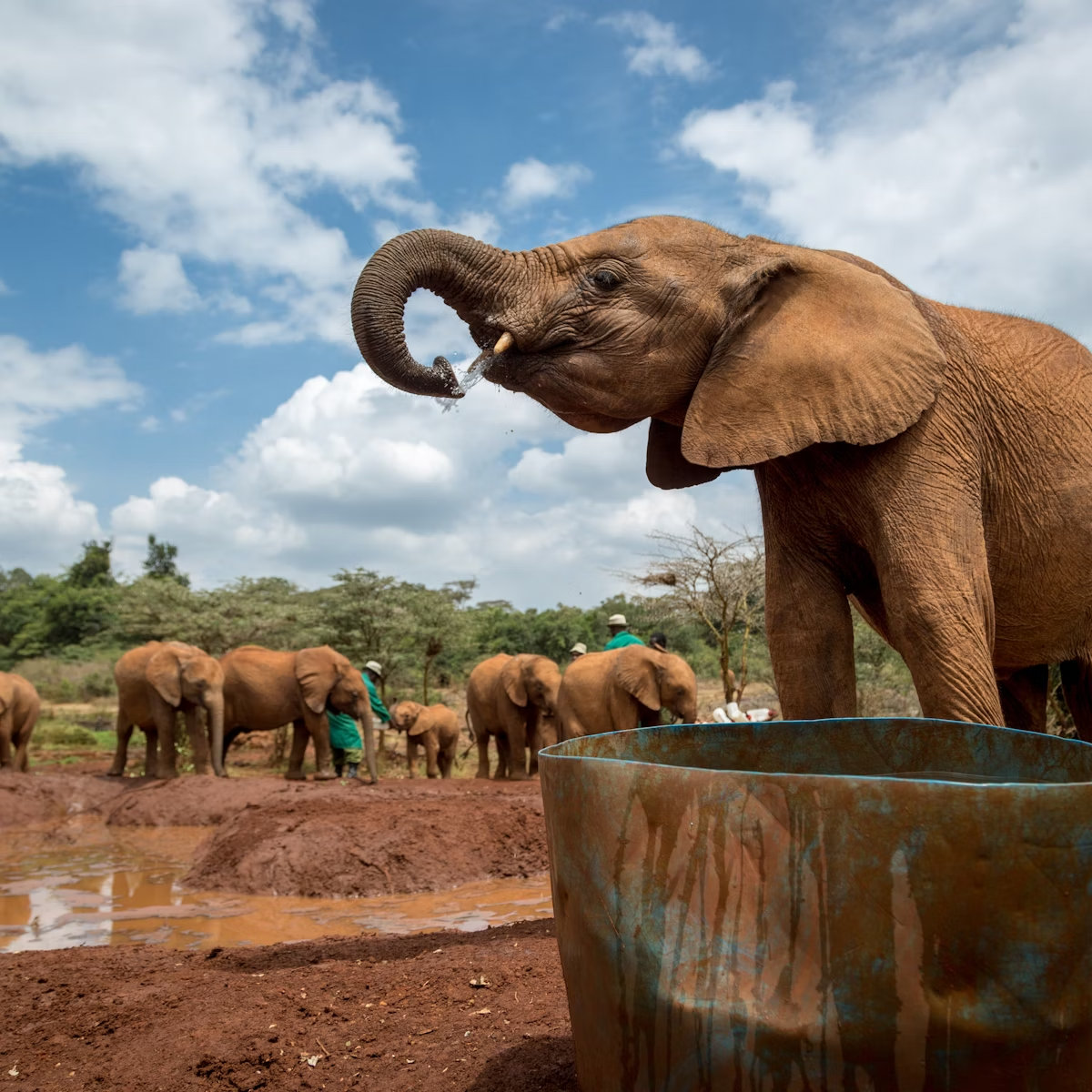
David Sheldrick Wildlife Trust
Occupying a plot within Nairobi National Park, this nonprofit trust was established in 1977, shortly after the death of David Sheldrick, who served as the…

Nairobi National Park
Welcome to Kenya’s most accessible yet incongruous safari experience. Set on the city’s southern outskirts, Nairobi National Park (at 117 sq km, one of…

National Museum
Kenya’s wonderful National Museum, housed in an imposing building amid lush, leafy grounds just outside the centre, has a good range of cultural and…

Giraffe Centre
This centre, which protects the highly endangered Rothschild’s giraffe, combines serious conservation with enjoyable activities. You can observe, hand…

Lamu Museum
Lamu Island
The best museum in town (and the second best in Kenya) is housed in a grand Swahili warehouse on the waterfront. This is as good a gateway as you’ll get…

Galana River
Running through the heart of the park and marking the northernmost point in the park that most visitors are allowed to visit, the Galana River, which…
Planning Tools
Expert guidance to help you plan your trip.
Best Things to Do
As the birthplace of safari, Kenya is deservedly on many travel wish lists. Full of wonderful experiences, here are 10 we don't think you should miss.
Things to Know
What do you need to know before visiting Kenya? Is Nairobi safe? Do I need a visa? From passport requirements to cultural etiquette, we have the answers.
Transportation
Travel from the cities to the coast and national parks with this guide to getting around in Kenya.
Visa Requirements
Don't let your dream vacation to Kenya go wrong before it starts. We've got everything you need to know about securing a tourist visa before you jet off.
Money and Costs
You don't have to break the bank to explore the incredible landscapes in Kenya – you just need our top tips to squeeze every penny out of your budget.
Traveling with Kids
Kenya is a wonderfully warm and welcoming destination for kids. From wildlife safaris to Maasai culture, a wealth of great experiences awaits your family.
Best Road Trips
Whether you want a weekend road trip from Nairobi or a scenic self-drive in the north, we've got the best road trips in Kenya for you.
Latest stories from Kenya
Filter by interest:
- All Interests
- Adventure Travel
- Art & Culture
- Beaches, Coasts & Islands
- Food & Drink

Tips & Advice
Jul 9, 2024 • 8 min read
Plan your travels in Kenya with this guide to the best places to visit.

Dec 13, 2023 • 9 min read

Dec 8, 2023 • 4 min read

Nov 30, 2023 • 9 min read

Nov 29, 2023 • 4 min read

Nov 23, 2023 • 8 min read

Nov 21, 2023 • 7 min read

Nov 21, 2023 • 5 min read

Nov 19, 2023 • 10 min read

Nov 17, 2023 • 7 min read
in partnership with getyourguide
Book popular activities in Kenya
Kenya and beyond.


See all the jobs at The Lutheran World Federation here: http://lutheranworld.recruiterbox.com/jobs
Nairobi | Nairobi, Kenya | Full-time
Job Description: Finance Officer - Nairobi (Payments and Balance Sheet Management)
This comprehensive job description reflects the expanded responsibilities and qualifications for the Finance Officer role in Nairobi, focusing on payments, balance sheet management, bank reconciliations, cash flow, risk management, VAT management, and archive management of financial documents, aligned with the operational needs of the LWF Kenya-Somalia Program.
Position Title: Finance Officer - Nairobi (Payments and Balance Sheet Management)
Location: Nairobi, Kenya
Program:Lutheran World Federation (LWF) Kenya-Somalia Program
Reports to:Deputy Finance Manager (DFM)
Supervises:Assistant Finance Officer (AFO), Finance Assistants as required
Job Purpose:
The Finance Officer (FO) - Nairobi will be responsible for managing the payments and balance sheet accounts for the LWF Kenya-Somalia Program. This role will focus on ensuring timely and accurate payment processing, maintaining robust internal controls, overseeing balance sheet management, managing VAT on payments according to the Host Country Agreement and donor guidelines, and ensuring timely passing of journal entries for tax exemptions granted by the government and repayment to vendors where exemptions are not granted. Additionally, the FO will manage cash flow, financial risks, bank reconciliations, staff advance account reconciliation and management, and the archiving of finance-related documents.
Key Responsibilities:
A: Payments Management:
- Oversee and manage the entire payment process, ensuring all transactions are accurately recorded, authorized, and compliant with organizational policies.
- Verify payment requests for accuracy, proper authorization, and adherence to budgetary limits before processing.
- Coordinate with the procurement and program teams to ensure timely processing of supplier payments and staff reimbursements.
- Maintain and update payment records in the SAGE Accounting software, ensuring that all entries are correctly coded and reconciled.
- Manage VAT on payments according to the Host Country Agreement and donor guidelines, ensuring timely passing of journal entries for tax exemptions granted by the government and repayment to vendors where exemptions are not granted.
B: Balance Sheet Management:
- Monitor and manage all balance sheet accounts, with a focus on payables, accruals, prepayments, and staff advance accounts.
- Ensure that all balance sheet accounts, including staff advance accounts, are reconciled monthly, and discrepancies are promptly identified and addressed.
- Work closely with the Deputy Finance Manager (DFM) to implement best practices for balance sheet management and reporting.
- Support the annual audit process by providing necessary documentation and reconciliations related to balance sheet accounts.
C: Cash Flow and Bank Reconciliation Management:
- Develop and maintain cash flow forecasts to ensure adequate liquidity for operations.
- Coordinate with project managers to anticipate future cash needs and plan accordingly.
- Manage relationships with banks and other financial institutions to ensure efficient cash management and optimal banking arrangements.
- Ensure timely and accurate bank reconciliations are performed monthly, identifying and resolving any discrepancies in a timely manner.
D: Risk Management:
- Identify and assess financial risks related to payments, balance sheet management, and bank reconciliations.
- Develop and implement risk mitigation strategies in collaboration with senior management.
- Monitor exchange rate fluctuations and advise on forex risk management strategies to minimize financial risks.
E: Sub-Ledger Management:
- Oversee the implementation and management of Sub-ledger modules in the SAGE Accounting software, ensuring accurate recording and reporting of financial transactions.
- Provide training and support to Finance Assistants and other relevant staff on the use of Sub-ledger modules.
F: Internal Controls and Compliance:
- Maintain strong internal controls to safeguard the organization’s assets, particularly in the areas of payments, balance sheet management, and bank reconciliations.
- Ensure compliance with LWF’s financial policies, donor regulations, and relevant laws and regulations.
- Assist in the development and updating of financial policies and procedures to enhance internal controls and efficiency.
G: Technology and Process Improvement:
- Continuously evaluate and recommend improvements to financial processes and systems.
- Stay updated on advancements in financial technology and suggest implementations to enhance efficiency.
- Lead the implementation of new financial modules or software upgrades as needed.
H: Reporting and Analysis:
- Prepare monthly, quarterly, and annual financial reports related to payments, balance sheet accounts, and bank reconciliations for review by the DFM.
- Conduct regular analysis of payables, staff advances, and other balance sheet accounts to identify trends, risks, and opportunities for improvement.
- Assist in the preparation of financial statements and management reports for internal and external stakeholders.
I: Archive Management of Finance Documents:
- Manage the archiving of all finance-related documents, ensuring that records are organized, secure, and easily retrievable.
- Ensure that all financial documents, including contracts, invoices, receipts, and reports, are accurately filed and maintained in compliance with organizational and donor requirements.
- Implement and maintain an efficient archiving system that supports both physical and digital records, ensuring that documents are preserved according to retention policies.
- Regularly audit the archive to ensure that all documents are up to date and accessible to authorized personnel.
J: Team Collaboration and Support:
- Provide guidance and support to the Assistant Finance Officer (AFO) and Finance Assistants in managing daily finance operations.
- Collaborate with other Finance Officers in Kakuma, Dadaab, and Kismayo to ensure consistency and accuracy in financial reporting across all locations.
- Act as a key point of contact for finance-related queries in Nairobi, providing timely and accurate responses to internal and external stakeholders.
Qualifications and Experience:
- Education: Bachelor’s degree in Finance, Accounting, or a related field. A professional qualification (e.g., CPA, ACCA) is highly desirable.
- Experience: Minimum of 5 years of experience in finance and accounting, with a strong focus on payments, balance sheet management, bank reconciliations, and cash flow management. Experience in an NGO or international development organization is an advantage.
- Technical Skills:
- Proficiency in SAGE Accounting software or similar financial management systems.
- Advanced Excel skills and experience with financial modeling.
- Knowledge of data visualization tools (e.g., Power BI, Tableau) for financial reporting.
- Experience with multi-currency transactions and forex management.
- Familiarity with ERP systems and integration with financial modules.
- Knowledge of International Financial Reporting Standards (IFRS) and donor reporting requirements (e.g., USAID, EU, UN agencies).
- Understanding of VAT management in the context of Host Country Agreements and donor guidelines.
Soft Skills:
- Analytical Skills: Excellent analytical skills with the ability to interpret financial data, identify issues, and recommend solutions.
- Communication: Strong written and verbal communication skills. Ability to present financial information clearly to non-financial stakeholders.
- Teamwork: Demonstrated ability to work collaboratively in a multicultural environment, providing guidance and support to team members.
- Attention to Detail: High level of accuracy and attention to detail, particularly in financial record-keeping, reporting, and reconciliations.
Our recruitment and selection procedures reflect the organization’s commitment to the prevention of abuse and exploitation of beneficiaries.
Disclosure: LWF participates in the Inter-Agency Misconduct Disclosure Scheme developed by the Steering Committee for Humanitarian Response The Misconduct Disclosure Scheme The Misconduct Disclosure Scheme ( The Misconduct Disclosure Scheme (misconduct-disclosure-scheme.org) which requires LWF to conduct reference checks with prior employers including questions about employee misconduct. By proceeding with this job application, you consent to LWF requesting a Statement of Conduct from your previous employers. This Statement of Conduct is requested from previous employers for all candidates for employment and provided to all employers that request it from LWF.
Qualified candidates who are interested in the above position should submit an updated detailed CV and application letter (in English), giving a day time telephone contact and email addresses of 3 (three) work referees.
Closing date for application: 10th September 2024
LWF DOES NOT SOLICIT ANY TYPE OF PAYMENT FOR JOB APPLICATIONS OR HIRING PROCESS.
Apply for this opening at ?apply=true

Application Form
Thanks for your time

COMMENTS
Tailor-made Kenya Trips Designed For You By Travel Experts. Request A Quote. Authentic Moments, Real Connections, Meaningful Travel. Speak With Our Specialists.
Unique private kenya safaris with expert guides, comfortable safari cars & best lodges. View our best wildebeest safaris and Diani Beach holidays. Ask us for a free quote.
3. Masai Mara. Best place for safari. One of Africa's great bucket-list safari destinations, Masai Mara lies in Kenya's southwestern region and stretches for 1510 sq km (583 sq miles) into Tanzania's Serengeti. Spot all the Big Five and other wildlife here, as well as more than 450 species of birds.
Often billed as the only national park within a city in the world, Kenya's first game reserve has wildlife in abundance, from lions, leopards and buffalo to the endangered black rhino and around 400 species of birdlife. 2. Head out on a hike. Mt Kenya 's trekking terrain is arguably the African continent's most beautiful and rewarding.
2. Pack smart for Kenya - it's not always hot. Early morning safaris can be chilly, so it's wise to take layers for a trip to Kenya. Similarly, temperatures can drop at night in the highlands. Fleeces and even windproof waterproofs are recommended. On the other hand, staying cool is key by the coast or in the city.
7. Karura Forest. 1,093. Nature & Wildlife Areas. The Karura Forest Reserve is an urban upland forest on the outskirts of Nairobi, the capital of Kenya. This remarkable geographical location and natural resource is one of the largest gazetted forests…. See ways to experience (6) 8. Hell's Gate National Park.
7. Karura Forest. 1,093. Nature & Wildlife Areas. The Karura Forest Reserve is an urban upland forest on the outskirts of Nairobi, the capital of Kenya. This remarkable geographical location and natural resource is one of the largest gazetted forests…. See ways to experience (6) 8. Hell's Gate National Park.
Discover more places to visit in this fascinating country with our list of the top tourist attractions in Kenya. On This Page: Maasai Mara National Reserve. Amboseli National Reserve. Tsavo National Park. Samburu, Buffalo Springs, and Shaba National Reserves. Lake Nakuru National Park.
14. Nyeri. Nyeri is very much the self-proclaimed gateway to the Central Highlands of Kenya. At heart, it's a dusty transport hub of a town, with purring scooters and rickshaws moving through the square-cut blocks and between the low-rise marketplaces.
15. Embu. Embu is a town located in central Kenya and is known for its agricultural activities and scenic beauty. It's nestled amid the beautiful landscapes of the Mount Kenya region. Agriculture is the primary livelihood in Embu, with coffee and tea farming being prominent.
Cycle through the Gates of Hell: Hell's Gate is a national park where bikers can explore lava-covered landscapes. Kenya Tourism Board. Ride the new Nairobi-Mombassa train: This famous train line ...
12. Lamu (One of the Best Places to Visit in Kenya for History) Lamu is a charming archipelago of four islands (Lamu Old Town, Kiwayu, Pate, and Manda) situated along the Kenyan coast, northeast of Mombasa. The Lamu Old Town is Kenya's oldest and best-preserved settlement, dating back to the 12th century.
Take a Hike in Hell's Gate National Park. Nigel Pavitt / Getty Images. Address. Kenya. Get directions. Phone +254 770 070405. Visit website. Situated about three hours northwest of Nairobi, Hell's Gate National Park is unlike any other place in Kenya.
Kenya is the country where safari was born. Discover the dramatic Great Rift Valley, mountain highlands or the coastline of the Indian Ocean with its white sandy beaches. Kenya is also home of the Big Five and you will experience close encounters with lions, elephants, rhinos and many other wildlife. Book your safari to the world famous Masai ...
12. Visit Lamu Old Town (Best Thing to Do in Kenya for History Lovers) With its narrow labyrinthine alleyways, ancient buildings, and rich history, exploring Lamu Old Town is one of the top things to do in Kenya. This ancient town dates back to the 12th century when the Swahili coast was a busy trading route.
A country of great diversity, both physically and culturally, Kenya is one of Africa's most popular destinations for very good reason. With blissful Indian Ocean beaches, craggy mountains, lush forests and wildlife-rich savannahs, there are endless beautiful places to visit in Kenya. 2,097 Kenya Safaris . 1. Masai Mara
11 days. Bush To Beach Safari. Explore Kenya's vast national parks such as Lake Nakuru, the famous Maasai Mara and the well-known 'red' elephants in the Tsavo National Park. After a few days of waking up early to spot wildlife, relax on the fine sandy beaches of Diani in the Mombasa area.
1. Masai Mara. Renowned around the world, the Masai Mara is one of Kenya's, and the continent's, most famous safari destinations. The highlight of our time in East Africa, it boasts exceptional populations of lions and leopards, cheetahs, and elephants, alongside countless others.
7. Lewa Wildlife Conservancy. The Lewa Wildlife Conservancy was established to protect the black rhino, Grevy's zebra, and sitatunga. It is one of the top tourist attractions in Kenya in terms of wildlife. The excellently maintained private reserve has over 50 species of mammals and hundreds of species of birds.
The best time to visit Kenya is during the dry season (end of June to October). During this time, zebras and wildebeests migrate, which makes for great wildlife viewing. The dry season also means better weather for outdoor activities. March through May is the low season for tourists, which might bring better hotel rates and fewer crowds, but ...
Kenya Tourist Places Amboseli National Park, Mt. Kenya, Lake Victoria, Lake Naivasha, Samburu National Reserve, Diani Beach, Manda Bay, The Great Rift Valley and many more. You can elevate your vacation experience by exploring some of the best places to visit in Kenya, that include beautiful cities like Mobasa, several world-famous national parks like Tsavo National Park, beautiful lakes like ...
Aside from its proximity to many wildlife sanctuaries, Kenya's capital city is known for its burgeoning fashion scene, arts, and culture. While exploring the city, find unique gifts and handicrafts at the pop-up Masai markets, or visit many excellent museums, including the Railway Museum and the Nairobi National Museum.
Discover the best attractions in Kenya including Amboseli National Park, Fort Jesus, and David Sheldrick Wildlife Trust.
Fair. Poor. The best months for visiting Kenya (and the best time for wildlife viewing) are during the Dry season from June to October. The wildebeest migration usually reaches the Masai Mara in July or August and remains in Kenya throughout September. It starts moving back to Tanzania's Serengeti National Park around October.
Kenya is one of the safest African countries to visit. With a booming tourist industry and over 2 million visitors each year, tour operators ensure you're taken to the safest spots, so most trips go smoothly.. That said, it's smart to stay vigilant. International travel advisories suggest watching out for risks like diseases and street crime.
3) Tilt the note to see color changes. Another important method to spot a fake KES 1,000 note is to tilt it at different angles. The Central Bank of Kenya has incorporated color-changing features that are difficult to replicate: Color-changing security thread: When you tilt the note, the security thread should change color. This is a ...
A fire in a school dormitory in Kenya killed 17 students and seriously burned 13 others, police said Friday. There are fears that the death toll may rise, police said. The cause of the fire ...
One of Kenya's best male athletes also died in what authorities said was a domestic dispute in 2011. Wanjiru was 24 and at the time the reigning Olympic marathon champion.
Biden is honoring Kenya with state visit as the East African nation prepares to send police to Haiti Biden is set to designate the East African nation a major non-NATO ally as it prepares to send ...
Kenya. Africa. The British Foreign and Commonwealth Office advise against all but essential travel to areas within 60km of the Kenya-Somali border, Garissa County, Lamu County (not including Lamu or Manda islands), those areas of Tana River County north of the Tana river itself, and within 15km of the coast from the Tana river down to the ...
Big Tech made headlines alongside the visit with significant announcements like Google's Umoja undersea cable, which will connect Africa and Australia, and Microsoft and G42's $1 billion 1-gigawatt data center—the largest single private-sector digital investment in Kenya's history. The Microsoft data center will be strategically located ...
This comprehensive job description reflects the expanded responsibilities and qualifications for the Finance Officer role in Nairobi, focusing on payments, balance sheet management, bank reconciliations, cash flow, risk management, VAT management, and archive management of financial documents, aligned with the operational needs of the LWF Kenya-Somalia Program.